|
|
Post by codystarbuck on Jan 10, 2021 21:25:42 GMT -5
I'll second The World at War. Being made less than 30 years after the end of the war meant that many people who were there on both sides were still alive to be interviewed. It certainly deserves its status as one of the greatest documentaries ever made. The DVDs are loaded with supplements as well. Two advisories, however: 1. The "restored" blu-rays from A & E are presented in cropped widescreen rather than their original full-frame. Stick with the DVDs. 2. The series is never exploitative but also doesn't flinch from the unpleasant results of war, which means some very graphic footage. The episodes on the Holocaust and the human aftermath of the atomic bombings in Japan can be especially tough going. As hard as some of those images are, I think I was more unsettled by the English woman, who lived in Nazi Germany, and hid a woman and her children briefly, but forced them to move on. The guilt she describes as she becomes complicit with the Nazis is gut-wrenching. |
|
|
|
Post by Calidore on Jan 11, 2021 9:39:12 GMT -5
I'll second The World at War. Being made less than 30 years after the end of the war meant that many people who were there on both sides were still alive to be interviewed. It certainly deserves its status as one of the greatest documentaries ever made. The DVDs are loaded with supplements as well. Two advisories, however: 1. The "restored" blu-rays from A & E are presented in cropped widescreen rather than their original full-frame. Stick with the DVDs. 2. The series is never exploitative but also doesn't flinch from the unpleasant results of war, which means some very graphic footage. The episodes on the Holocaust and the human aftermath of the atomic bombings in Japan can be especially tough going. As hard as some of those images are, I think I was more unsettled by the English woman, who lived in Nazi Germany, and hid a woman and her children briefly, but forced them to move on. The guilt she describes as she becomes complicit with the Nazis is gut-wrenching.
The human toll of war is much higher than the physical numbers.
|
|
|
|
Post by codystarbuck on Jan 20, 2021 19:22:08 GMT -5
All-Star Squadron #58 Robotman's got a girlfriend..... Creative Team: Roy Thomas-writer/editor, Dann Thomas-co-plot, Arvell Jones-pencils, Vince Coletta-inks, Cody Weiss-letters, Carl Gafford-colors Synopsis: It's April, 1942 (Finally!) and early morning, in New York. Some bystanders (including a pair of servicemembers who are about to get lucky) witness a light streak across th sky and street and crash into an alley..... 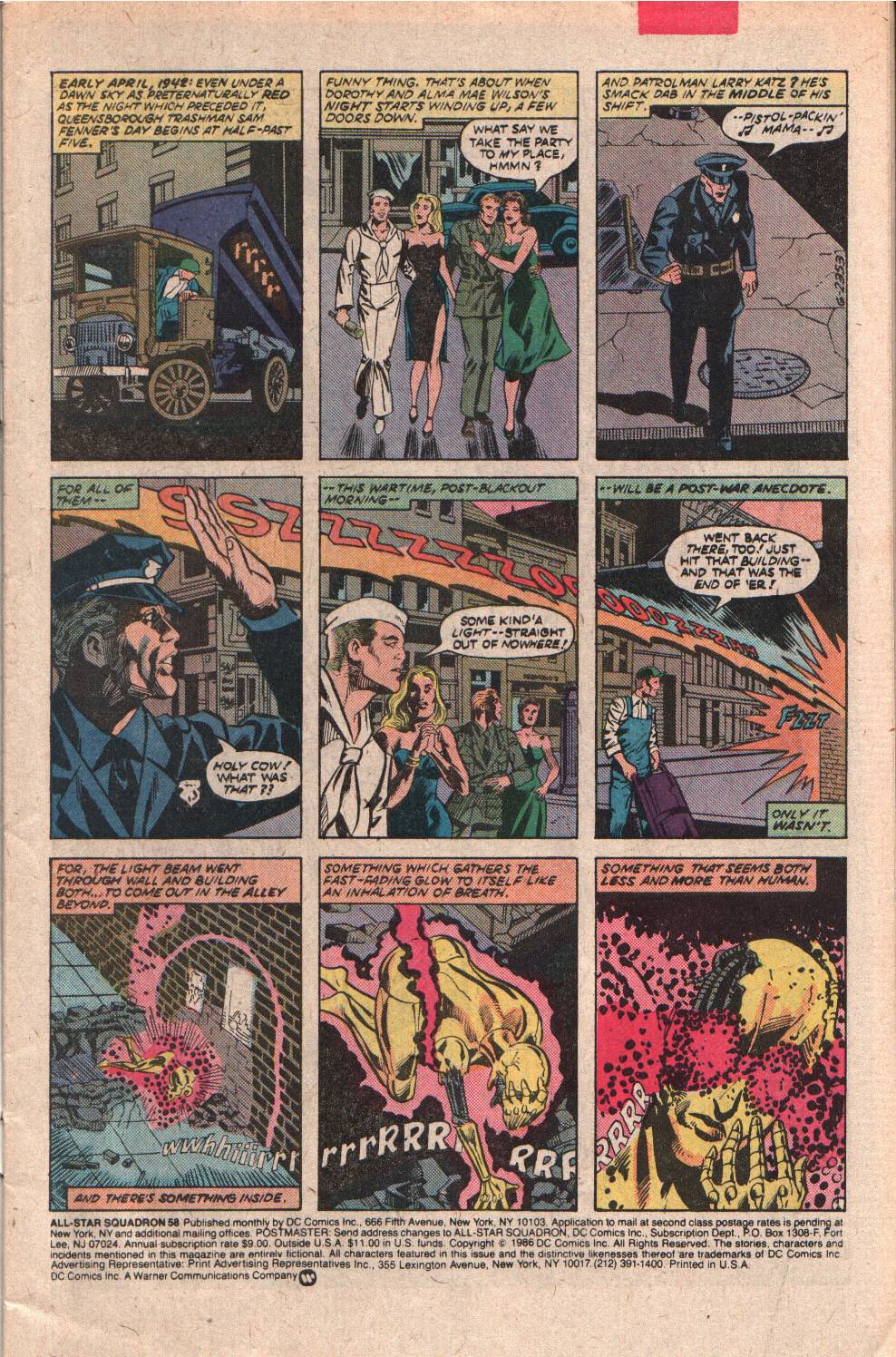 It's some kind of robot, with breasts.... 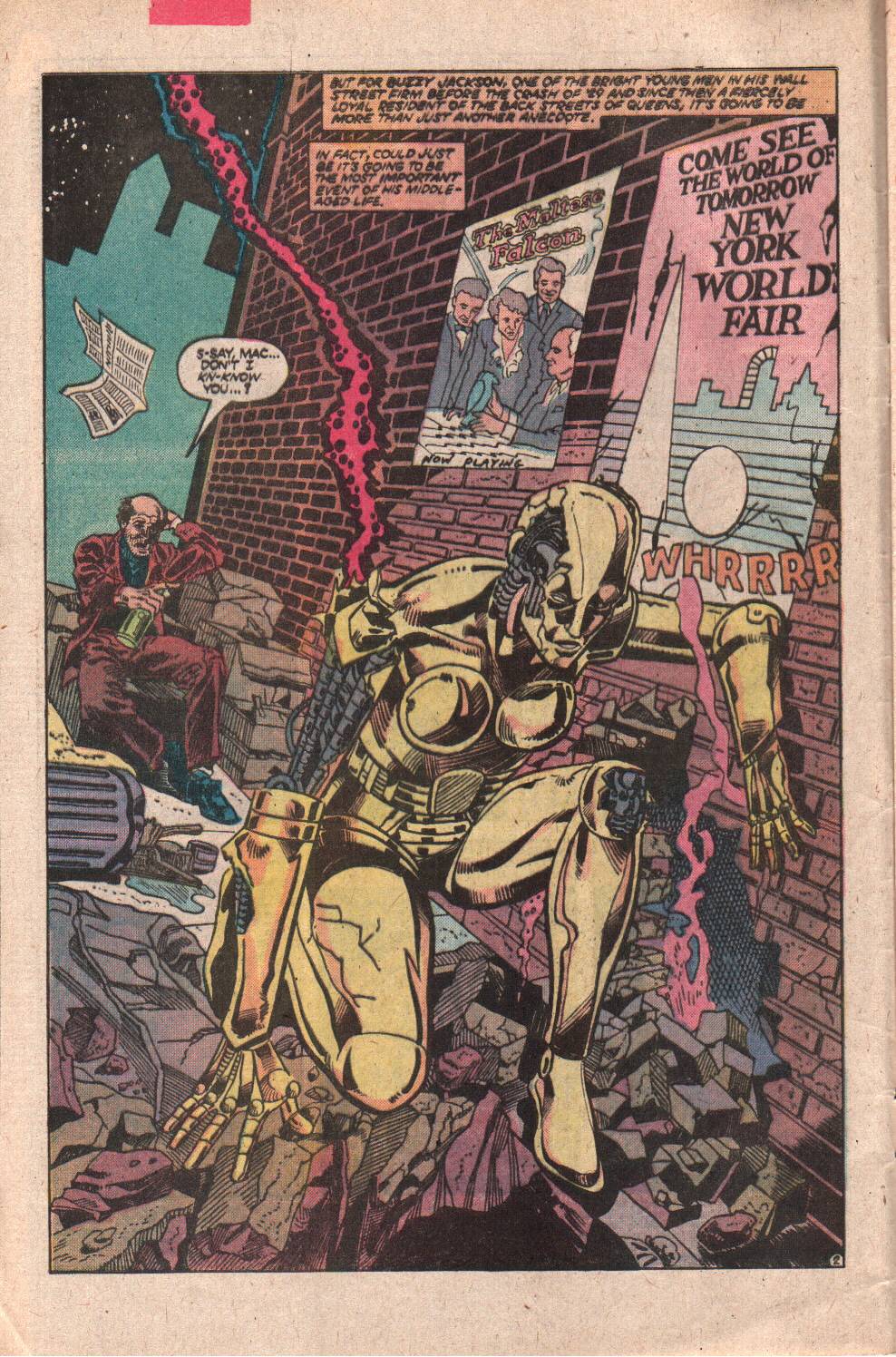 The robot rises, dropping debris and notices a poster of the World's Fair and changes direction and heads out, but first zaps a wino, before she(?) leaves. Meanwhile, in Queens, the All-Stars are rebuilding the Trylon & Perisphere, after the previous fun. Robotman is working on Gernsback, their robot valet. He gets a little testy with Hourman when he makes an innocuous, if perhaps clumsy, remark about how human Gernsback seemed, which Robotman seems to take personally. Amazing Man drags Hourman away as Hourman tries to apologize. We then learn that Robotman is still torn about breaking off seeing his former fiancee, in disguise. He takes Gernsback inside and mopes some more. Libby tells Johnny that she intends to resign as leader, surprising him. Hawkgirl is worried about the missing JSA, including her beau, Hawkman. Tarantula and Hourman are feeling inadequate, next to Green lantern and Superman. The mechanical woman arrives and runs into Gernsback and then neutralizes him, with ease... 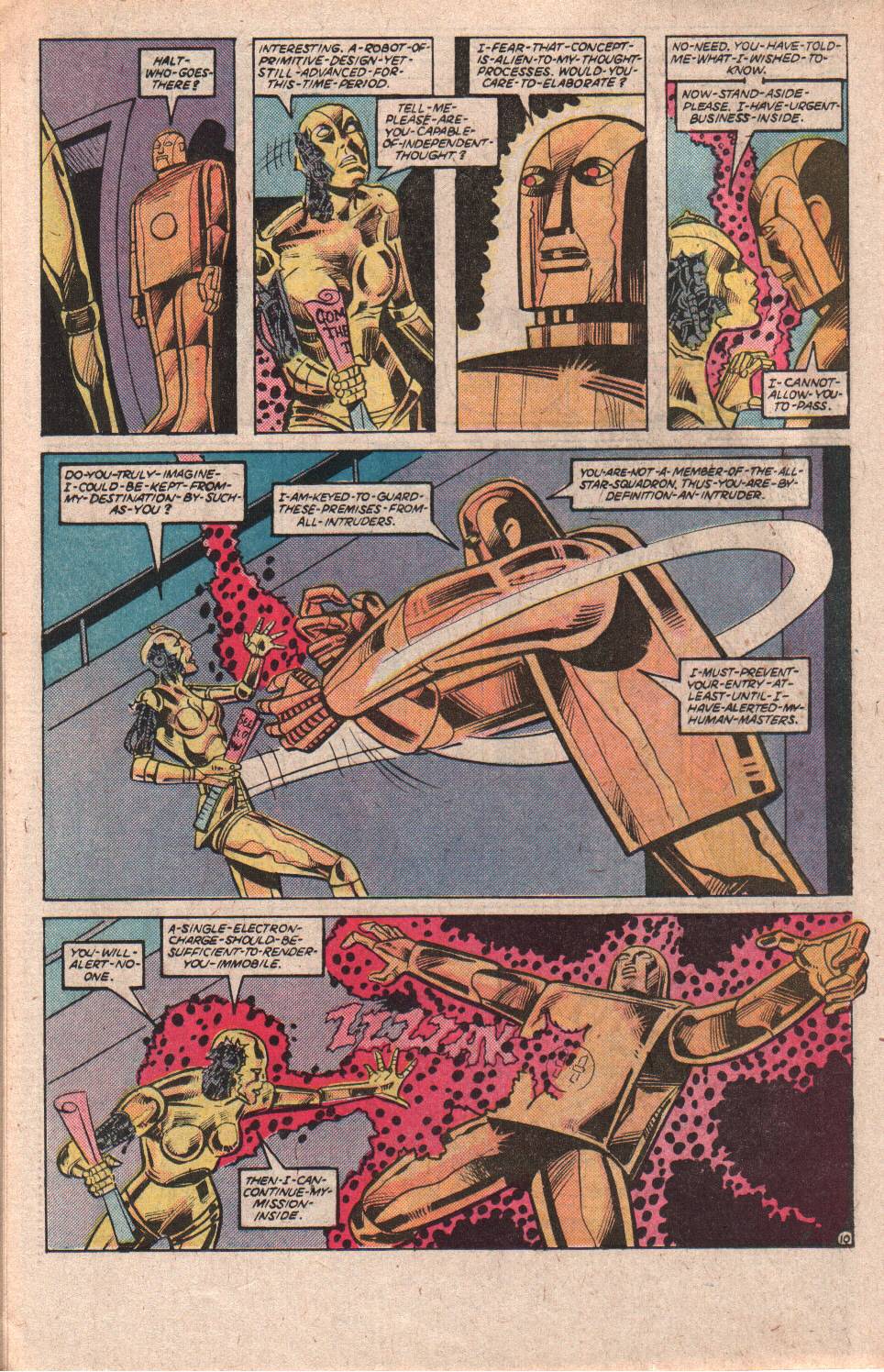 Firebrand puts Hourman into the "friend zone" and Tarantuala twists the knife. Firebrand leaves them to act like teenagers and runs into the mechanical woman and gets knocked through a wall. The All-Stars react and find the mechanical woman, who does not know who she is or where she is from. She then zaps them. They fight, seem to win, then the mechanical hand reaches out and grabs an unsuspecting Liberty Belle and zaps her. Dr Fate starts pounding on the robot 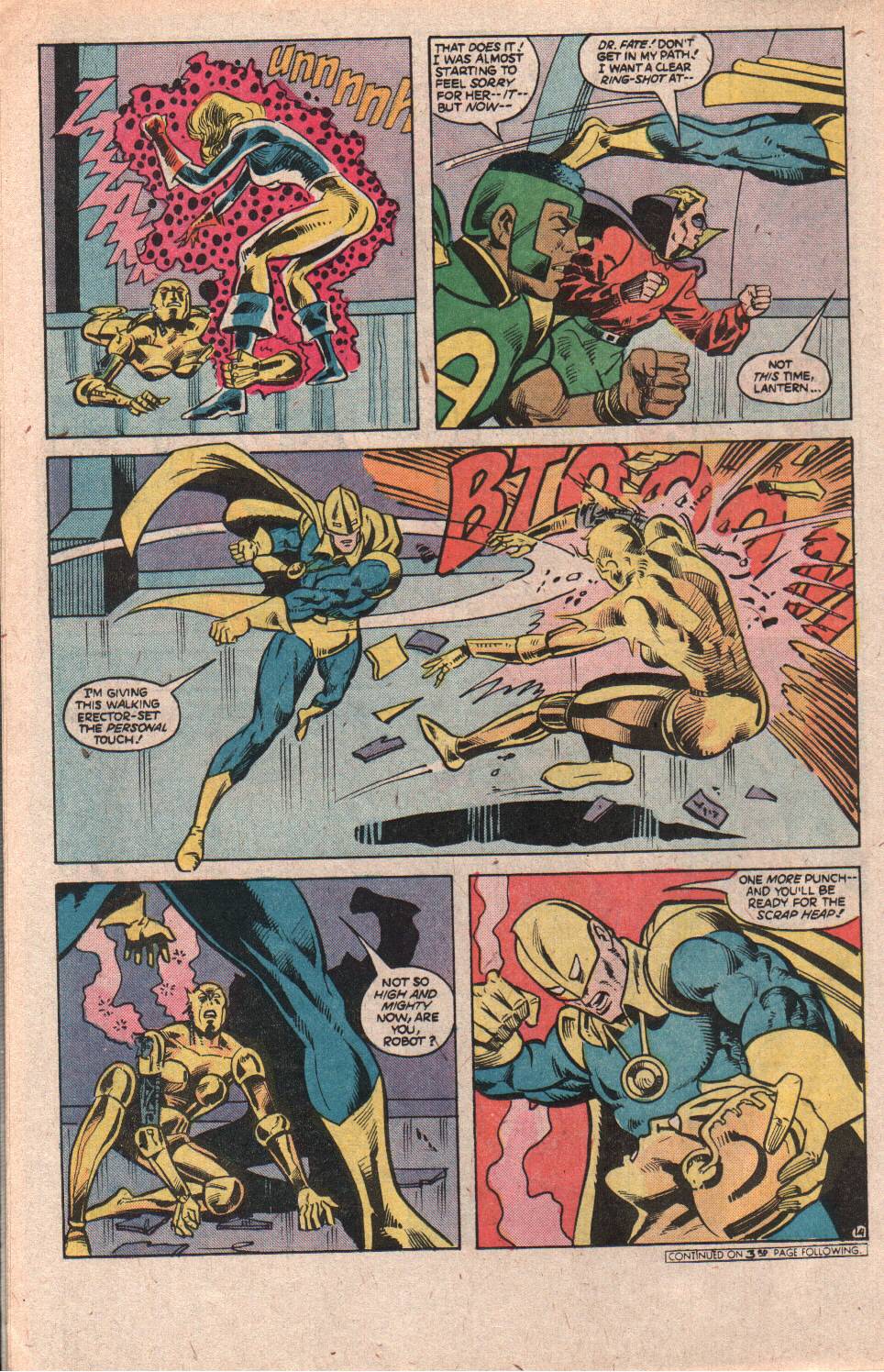 Then, he is stopped by Robotman.... 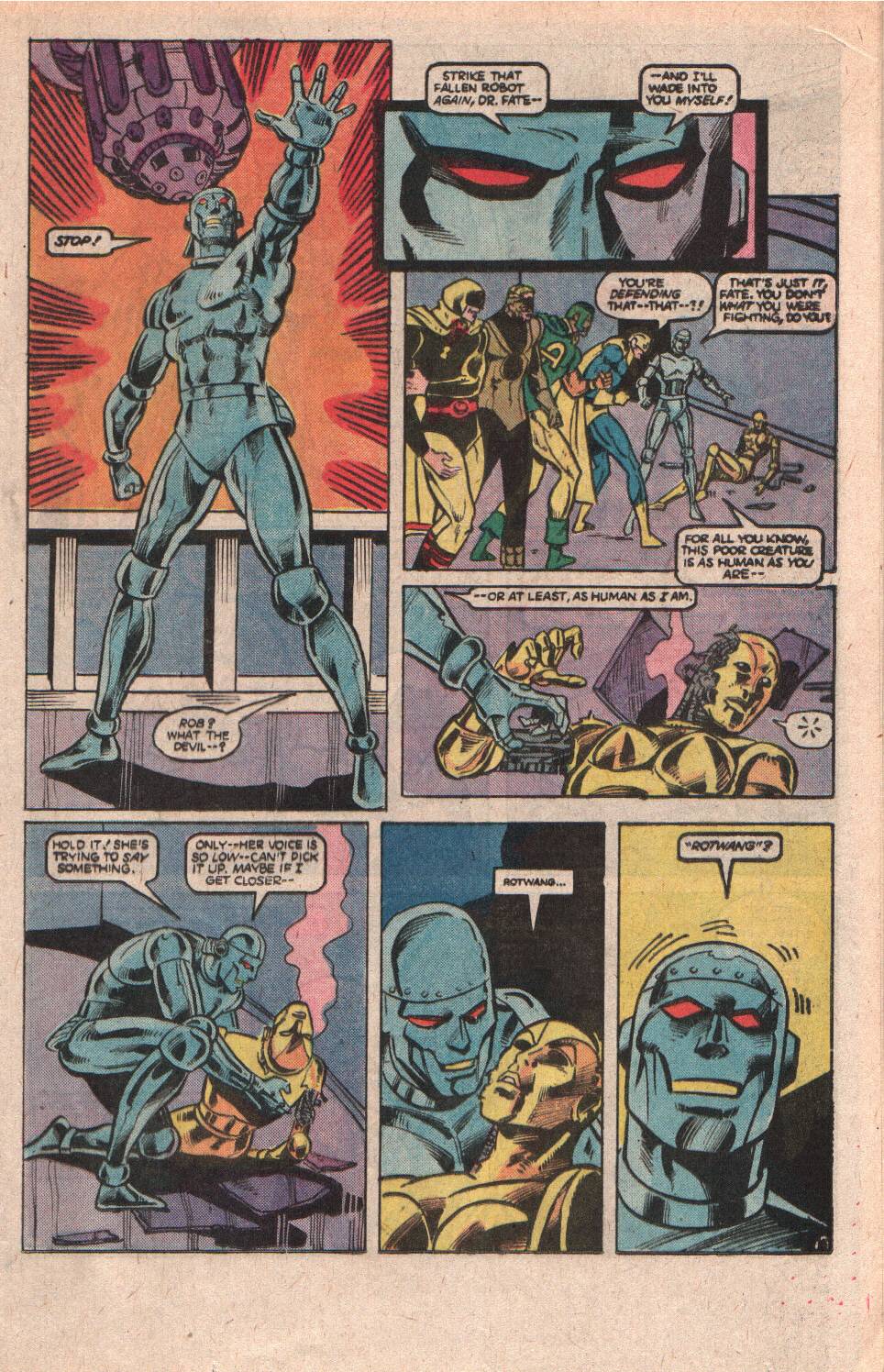 He attends to the fallen robot, who utters the name "Rotwang." Robotman carries her off to his lab and throws back a bitchy comment to the All-Stars. There is a gleam in the robot woman's eyes. There follows a Johnny Thunder story from the Shanghaied into Space story and I can't be bothered. Thoughts: Well, Robotman certainly has a bee in his bonnet. It all seems to come out of left field, but, you can kind of buy it, as Roy adds severing his contact with past humanity, while picking up the pieces of another mechanical form. The big question who is this mechanical female, who is obviously more advanced technology than 1942, even a 1942 with a Robotman. One thing that surprised me was the amount of sexual allusions in dialogue. Page one has a soldier and sailor, arm and arm with two women, one of whose skirt is slit to nearly the hip (not a common sight, in 1942, mind you) and one of the women invites the men to "take the party back to my place." It happened; but, this is a Code-approved book. Next, Johnny and Libby have a private word and Johnny alludes to having a "quickie" and Libby shoots him down, which he replies "Can't blame a newlywed hubby for trying." One reference I can see, but two suggests they had given up on the premise that this is being written for children. There was a trend with more mature content at DC, beyond stuff like Swamp Thing, as Nightwing and Starfire would be shown in bed together, in the new Baxter format series, New Teen Titans #1. There was little uproar over that, according to George Perez. The reality was that children were either not entering the comic book ranks or had aged on and comics were shifting to focus on teens, a trend that had been building by the end of the 70s. Apart from that, this is the start of a new mystery, which will seem to focus around Robotman and this female robot, called Mekanique, on the cover, but not named inside. Mekanique is an homage to the female robot, who takes the place of Maria, in Fritz Lang's film Metropolis...  The name she utters, Rotwang, is the name of the robot's creator, in the film. She is used to replace Maria, an advocate for the underclasses, who has swayed Freder, privileged son of the city's leader, Jon Frederson, Frederson conspires with Rotwang to have the robot replace Maria and betray the workers, destroying her esteem in Freder's eyes and quell a workers rebellion. It will be interesting to see how much of that plot Roy borrows for this story. Some years later, Jean-Marc & Randy Lofficier and Roy Thomas wrote Superman: Metropolis, where the mixed the story of Lang's Metropolis with Superman. A little after that, Alan Moore placed Rotwang as a member of Die Zwielichthelden, The Twilight Heroes, the German version of the League of Extraordinary Gentlemen (along with Dr Caligari, his servant Cesare, Rotwang's robot and Dr Mabuse). Metropolis was one of the most visually influential films of its day, with its images of towering skyscrapers, with aircraft moving between them, giant machines manned by the underclasses, running the city, Rotwang's lab, with Tesla coils and equipment, and the robot Maria. The design of the robot, in the film, would influence Ralph McQuarrie's conceptual art for C3PO, in Star Wars. This has me intrigued to see where Roy is going. Historical Notes: Well aside from references to Metropolis, there is a poster for The Maltese Falcon on the wall. By that point, the novel had been filmed twice, in 1934 and the previous year, 1941. The poster on display refers to the 1941 version, starring Humphrey Bogart, Mary Astor, Sydney Greenstreet and Peter Lorre, directed and written by John Huston. It is this image that is referenced, in the poster... 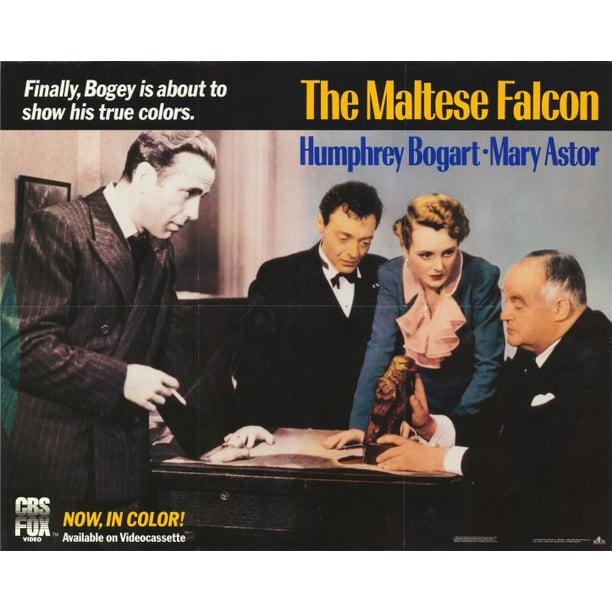 Later, Tarantula mentions how the city almost tore down the Trylon and Perisphere for scrap metal. That was indeed their fate, in December of 1940, as the fair had proven to be a financial failure and resulted in the bankruptcy of the corporation that ran it.  July 1944: On July 6, in Hartford, CT, a fire broke out at a Ringling Bros. Circus performance and quickly engulfed the main tent. Somewhere in the neighborhood of 168 were killed (records weren't well kept) and over 700 were injured, with at least 100 of the dead believed to have been children. Paraffin coating, a weatehrproofing agent, added to the rapid spread of the fire. No definitive cause was ever established, though an arsonist confessed to it in 1950, though his mental state and lack of evidence to place him there made the confession suspect. On the Eastern Front, the Soviets liberate Minsk and begin operations to liberate the Balkan countries. By mid-july, they have liberated Vilnus, capital of Lithuania and re-established the Lithuanian Soviet Socialist Republic. Fighting will continue into October. In the Pacific, the Japanese call off their advance on Imphal. On July 21, American troops land at Guam. Guam had been a US territory, since the defeat of the Spanish, in 1898. It was one of several targets of the Japanes, immediately after the bombing of Pearl Harbor (along with Wake Island and the Philippines). The Allies planned to use Guam and Saipan as staging bases for further landings in Taiwan, the Philippines and the Ryuku Islands and both were ideal for B-29 bases, from which to attack the Japanese Home Islands. Landings were carried out by the 3rd Marine Division, the 1st Provisional Marine Brigade, and the 77th Infantry Division. Based on lessons learned, the island was first subjected to massive aerial bombardment by carrier-based naval aircraft and land-based Army aircraft, over a two-day period. That was then followed by a massive naval bombardment, in advance of landings. The Marines quickly established a beachhead; but, the Army had greater difficulty, as they lacked armored amphibious vehicles and landing craft were forced to offload at a reef and the soldiers had to wade ashore. Eventually, on July 28, the beachheads were linked and the Allies moved inland, though fighting was intense. The Japanese line finally broke around August 4 and organized resistance ended on August 10, though over 7,000 troops were at large, on the island. The Chamorro natives of Guam suffered harsh treatment under the Japanese and were herded into concentration camps. Over 600 died in the camps and 2,000 during the 3 years occupation, out of a population of 20,000. On July 18, Hideki Tojo resigned as Prime Minister of Japan and was replaced by Kuniaki Kuniso. In France, the Allies capture the town of St Lo and Caen. The British launched Operation Goodwood, a large armored advance on a German held ridge, above Caen, in conjunction with the Canadian Operation Atlantic. After two days, the advance was halted and few gains were made, while between 4000 and 5000 British and Canadian casualties were suffered and the loss of 300-500 tanks. Some 2000 Germans were taken prisoner. The mission was an operational failure; but, it did occupy German forces, lightening the forces facing the American forces that would advance in Operation Cobra, which led to the German collapse, around Caen, by August 7. On August 1, the 3rd army, under Gen George S, Patton is activated. On July 12-21, a Cossack volunteer unit, within the Wehrmacht, carried out a massacre of 35 civilians, in the village of Dortan, as part of anti-partisan operations. With the Normandy landings, the Maquis rose in open revolt against the Germans, harrying their response to the Allied invasion. The Cossacks declared the area a bandit center, shot 7 people immediately, then carried out systematic looting and the rape of several woman, while killing additional civilians, including rape victims. The village was then burnt to the ground, though it was rebuilt after the war. On July 6, at Camp Hood, TX, 1st Lt Jackie Robinson boarded a base bus to reach a medical appointment to examine an old ankle injury. Despite an unsegregated bus line, the bus driver ordered him to the back of the bus. Robinson refused and the driver backed down. When the bus reached its destination, the driver alerted the military police and Robinson was arrested. He was subjected to interrogation laced with racist comments and treatments and, when he confronted the interrogating officer, he was recommended for court martial. His CO refused to undertake a court martial and Robinson was transferred to the 758th Battalion, where charges were quickly brought, though they were ultimately reduced to 2 counts of insubordination, during questioning. Robinson was acquitted by a nine man, all-white panel. Robinson's court martial kept him from accompanying the 761st Tank Battalion to Europe, where it engaged in combat operations against the Germans. Robinson was transferred to Camp Breckinridge, Kentucky, where he coached athletics and was honorably discharged in November, 1944. He played for the Kansas City Monarchs, in the Negro League, before he was eventually signed by the Kansas City Royals as the first African-American player in Major League Baseball. On July 20, conspirators within the Wehrmacht and civilian leadership attempted to execute Operation Valkyrie, to seize control of German cities, disarm the SS and arrest Nazi leadership, after the assassination of Adolf Hitler. Oberst Claus von Stauffenberg, who was Chief of Staff to Gen Friedrich Fromm, carried a bomb in his attache case to Wolf's Lair, Hitler's operational base in East Prussia. The case had two bombs, but Stauffenberg was only able to prime one, before it was placed near Hitler and it is believed that Oberst Heinz Brandt might have unknowingly nudged the case further away from Hitler, behind a table leg, allowing him to survive. 20 people were wounded, one killed instantly and 3 succumbing to wounds, later. Von Stauffenberg escaped; and, after vacillating, the operation to take over was executed, but word soon reached that Hitler was alive and the plot collapsed. Von Stauffenberg was court martialed and executed under orders from Gen Fromm, who sought to hide his own knowledge of the conspiracy. Fromm was arrested and discharged from the army and then snetenced to death, as a civilian, for cowardice int he face of the enemy. However, because of his actions in executing the conspirators, he was given a military execution, in March 1945. On July 26, the Me 262 gains its first combat victory, becoming the first jet aircraft flown in successful combat operation.
|
|
|
|
Post by codystarbuck on Jan 31, 2021 17:43:26 GMT -5
All-Star Squadron #59 So, wait, does that bar thingy indicate that Mekanique has an off-the-shoulder ensemble? Creative Team: Roy Thomas-writer/editor, Dann Thomas-co-plot, Arvell Jones-pencils, Vince Coletta & Tony DeZuniga-inks, Cody Weiss-letters, Carl Gafford-colors Synopsis: Sunday, April 12, 1942....a lone figure rises out of the water, off Long Island Sound. He sloshes his way towards the Perisphere and goes inside. Oh, Neptune Perkins must be back.....   Nope' it's AQUAMAN!!!!!!!!!!!!!!!!!!!!!!!!!!!!!!!!!!!! The gang is wary at first, but he reminds them he was invited, even if he is 4 months (and several years) late. Johnny Quick name drops Little Boy Blue and the Blue Boys, because you would, wouldn't you? Batman whines about getting back to Gotham and Firebrand says "Stifle, dingbat!" Or, words tot hat effect. Liberty Belle calls the meeting to order and Dr Occult gives a briefing about the interminable Shanghaied into Space subplot, while everyone is bored and whispering to each other. Things get pretty catty from Hourmand and Tarantual, but, when they contact Robotman, at his Queens lab, it gets downright bitchy.... 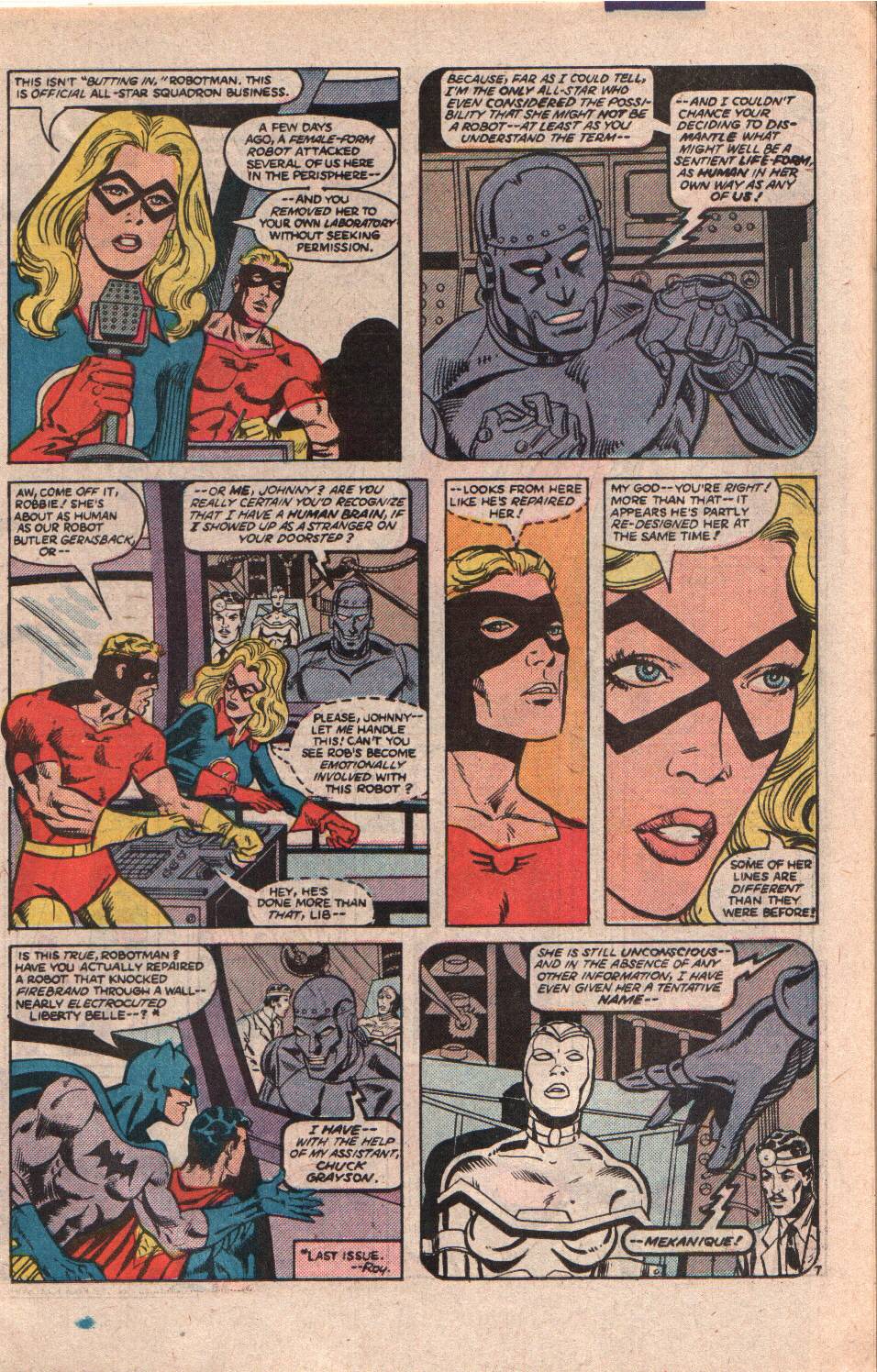 A motion is put forward to take Mekanique back into custody and Libby calls a vote.  The vote is 20 to 14, with the majority voting to take her into custody. Robotman refuses to recognize or accept the vote. Libby caves in and forms a committee to go reason with Robotman, made of Green Lantern, Air Wave, Firebrand and Shining Knight. Government in action! They head off for the lab, while Robotman and Chuck Grayson play Dr Frankenstein, with Mekanique in the role of the Bride. The committee interrupts and they argue, when Air Wave senses a power buildup and overload. Green Lantern goes to contain it, but Robotman sees it as an act of aggression and backhands him unconscious. A melee ensues and Air Wave and Chuck Grayson try to shut things down and it explodes, but only after Firebrand is hurt. Mekanique survives and awakens.  Then, Ron Harris & Mike Gustovich handle the Spectre's adventure, on Pluto..............  He stops a war between two groups and heads home, since he doesn't need a rocket (yet was somehow trapped in one). Thoughts: Aquaman and a bunch of others appear, for a little trademark maintenance and DC 50th Anniversary cameos. He is drawn with yellow gloves, to establish that he is the Earth 2 Aquaman. Air Wave is the original, who was later retconned as a relative of Hal Jordan, whose cousin namesake takes over the role, in the late 70s. Robotman is acting awfully weird in this one, which may turn out to be mind control. Whatever it is, I get tired of stories where someone turns all confrontational on their friends and it devolves into a fight, through misunderstanding. Marvel beat that into the ground in the 60s and by the 8s it was a horrible cliche. Looking at it nearly 40 years later doesn't improve things. Roy actually wanted to use Little Boy Blue & the Blueboys, but never found a spot to insert them and had to settle for this. Sounds like a rockabilly combo, to me. Letters page mentions a shout out for positive portrayal of heroes, from a Newsweek guest column, in the midst of Crisis killing everyone. Also, some Canucks want the All-Stars in the Great White North and meet Canadian heroes, like Nelvana, Johnny Canuck and some guy named Gordie. Okay, I added the last one, but 63% of Canada's heroes are named Gordie and missing at least two teeth. 58% of the people know that, because 72% of all statistics are totally real and not made up randomly. (slight pause whilst I adjust my puddy tat to another shoulder) Roy references National Lampoon, when Hourman says he is "Forgotten, not gone." (used in reference to Mamie Eisenhower) Not a lot to say, other than Robotman is acting out of character and a lot of bitchy comments permeate this issue. Maybe Roy had been at the editorial meeting where he learned that he was now screwed about Earth 2, the JSA and everything else. Historical Notes: Let's see......Jacob Zuma, current president of South Africa and Trevor Noah punching bag was born on the day this comic is set. Bambi was released in theaters and much sobbing was heard. August 1944 On Aug 1, the US Third Army is activated, under General Patton, and begins a race across France. Within 3 days they have moved into Brittany, after the previous 2 months of slow fighting to break out of the Normandy area, which culminated in the offesnive operations of Operation Goodwood (British, to capture Caen), Spring (Canadian offensive, in conjunction with Goodwood) and Cobra, with Bradley's forces. Much of the rapid US advance was aided by the British operations occupying much of the German resistance, causing a weakening of forces in the American sector, allowing them to push through. Lt Gen Courtney Hodges takes command of the British 1st Army and Bradley assumes overall command, as the 1th Army Group. The Germans soon became trapped at Falaise, in aa pocket, while they desperately evacuated their forces and on the 22nd, the Allies completely encircled them. The Germans managed to evacuate 100,000 troops, but suffered 10,000 casualties and 40-50,000 taken prisoner in the Battle of Normandy, which was now at an end. On August 15, Operation Dragoon, the Allied landings on the South Coast of France begin. On August 19th, emboldened by the Allied advance, the French resistance stages an insurrection in Paris, seizing arms from police stations and entering open warfare against the Germans. The German authorities have orders to burn Paris to the ground but do not carry them out. The Resistance makes contact with the Third Army and elements of Gen LeClerc's 2nd French Armored Division are dispatched to aid the fighters, with 160 men, under Capt. Raymond Dronne become the first Allied troops to enter the city. They reach the city square and open fire on German positions and Capt Dronne goes into the German civil authority HQ to demand their surrender. US 4th infantry soon joins, as does the British 30 Assault Unit, a special intelligence commando unit, administered in England by Ian Fleming, enters the city to seize vital intelligence documents and capture the former headquarters of Adm. Karl Donitz. On the 25th, the Germans surrendered the city. Gen DeGaulle, president of the Free republic, takes up offices at the War Ministry and gives a speech at the Hotel de Ville. On the 26th, the 2nd French Armored parade down Champs-Elysees, with German snipers still active. On the 29th, the US 28th Infantry parade down Avenue Hoche and the Champs-Elysees. Paris is free once again. The Red Ball Express, a convoy system of trucks bringing supplies from Normandy to Allied units across France begins. The drivers are almost exclusively African-American soldiers, operating nearly 6,000 trucks, over an 83 day period, in which they moved 12,500 tons of supplies per day. The operation is relieved in November, after the liberation of Antwerp gives the Allies a functioning deep water port. On the Eastern Front, the Warsaw Uprising began. The Polish resistance, in advance of the Red Army, staged an armed uprising against the Germans and fought for 63 days, with no support, as the Red Army had come to a halt. The Germans were able to put down the uprising and destroy much of the city, with particular attention to the Warsaw Ghetto. Churchill sent some air drops, without Stalin's approval; but, it wasn't enough and the US was unwilling to commit forces. 16,000 resistance fighters were killed or executed, 6,000 badly wounded. Between 150 and 200, 000 civilians were killed, many in mass executions. 25 % of the city was destroyed in the fighting and another 35% in reprisals, afterward. The Russians launch offenses in Belloruss and push on to Lithuania, Romania and Poland, with the collapse of the German Army Group center. The Russians paraded captured German soldiers in Moscow, which took over 90s minutes, even marching 20 abreast to pass a reviewing area. estimates are the Germans suffered some 400,000 casualties, with 180,000 Soviets, plus 500,000 wounded or sick. Whole cities and villages had been destroyed by the Germans and in the fighting between the Germans and the Red Army. The collapse coincide with the German defeat at the Falaise Pocket and put Germany in a precarious position. Armor and troops were withdrawn from Italy to shore up defenses at Warsaw, as the Red Army was coming into striking range of an advance on Berlin. A coup on Romania deposes Ion Antonescu, leading Romania to switch sides to the Allies. On August 4, Anne Frank and her family, except father Otto, were discovered in hiding and arrested. Florence is liberated, in Italy, on August 12. On the 23rd, the 26th Panzer Division carries out a massacre of 174 Italian civilians at Padule di Fucecchio, in reprisal for the death of 2 German soldiers at the hands of partisans. Commander Eduard Crasemann is convicted of war crimes and sentenced to prison. Later trials of specific participants occurred in 2011. Operation Pluto is begun, which lays an undersea pipeline across the English Channel, linking the UK and France. However, even at its peak of operation, it only contributed 8% of fuel transport for the allies, with the bulk sill ferried by tankers. In the Pacific, the Allies finish up operations in Guam and Tinian; and, turn their sights toward Pelilieu, in the march towards the Philippines.
|
|
|
|
Post by mikelmidnight on Feb 1, 2021 13:48:48 GMT -5
Roy actually wanted to use Little Boy Blue & the Blueboys, but never found a spot to insert them and had to settle for this. Sounds like a rockabilly combo, to me.
I've read a couple of their stories, they're most self-consciously for kids than the more po' faced adult heroes, but they're really quite charming and there are worse characters DC could revive than them.
|
|
|
|
Post by codystarbuck on Feb 1, 2021 22:45:19 GMT -5
Generally speaking, DC's material aimed squarely at young kids was usually pretty good: Scribbly, Sugar N Spike, Stanley & His Monster, The Three Mouseketeers, Fox and the Crow, etc.
|
|
|
|
Post by codystarbuck on Feb 10, 2021 19:38:30 GMT -5
All-Star Squadron #60 Creative Team: Creative Team: Roy Thomas-writer/editor, Dann Thomas-co-plot, Mike Clark & Arvell Jones-pencils, Vince Coletta & Tony DeZuniga-inks, Cody Weiss-letters, Carl Gafford-colors Synopsis: Spectre and Johnny Thunder's Thunderbolt team up to miracle back the JSA... 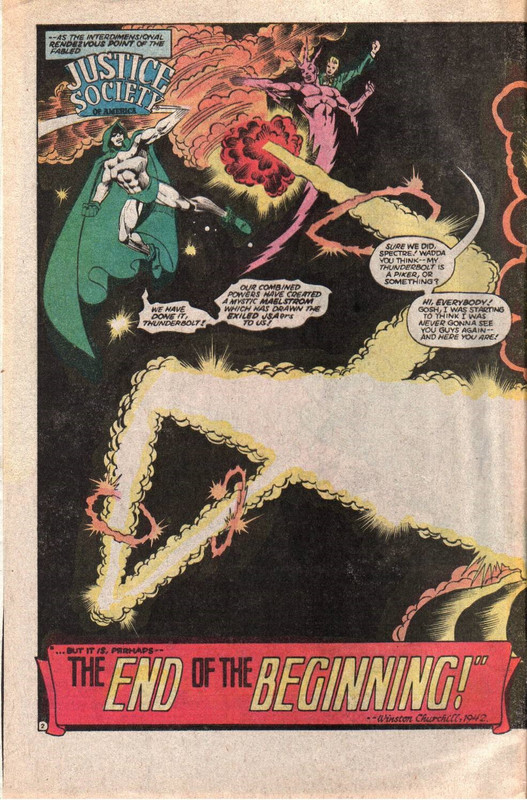 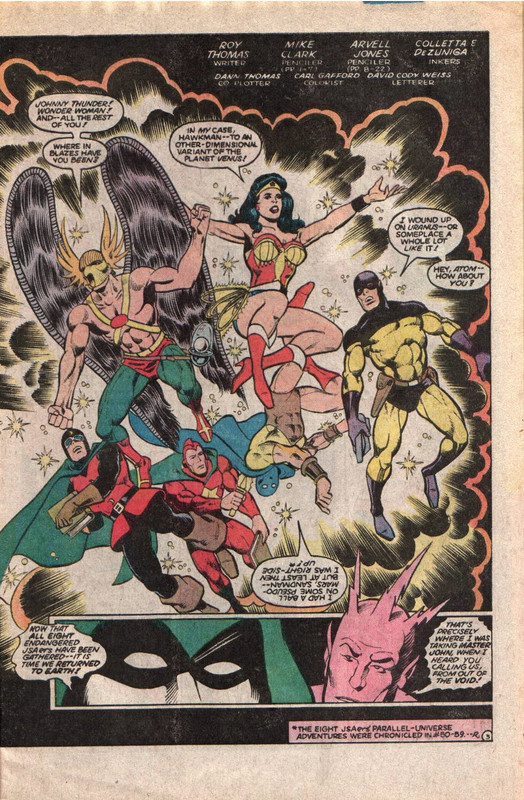 They return to Earth to a farmhouse, surrounded by the FBI, with Nazi agents inside and the launch tubes for the rockets which carried them off into space. They bust in, smash up the place, capture Gootsen and send an F_U to Schicklgruber... 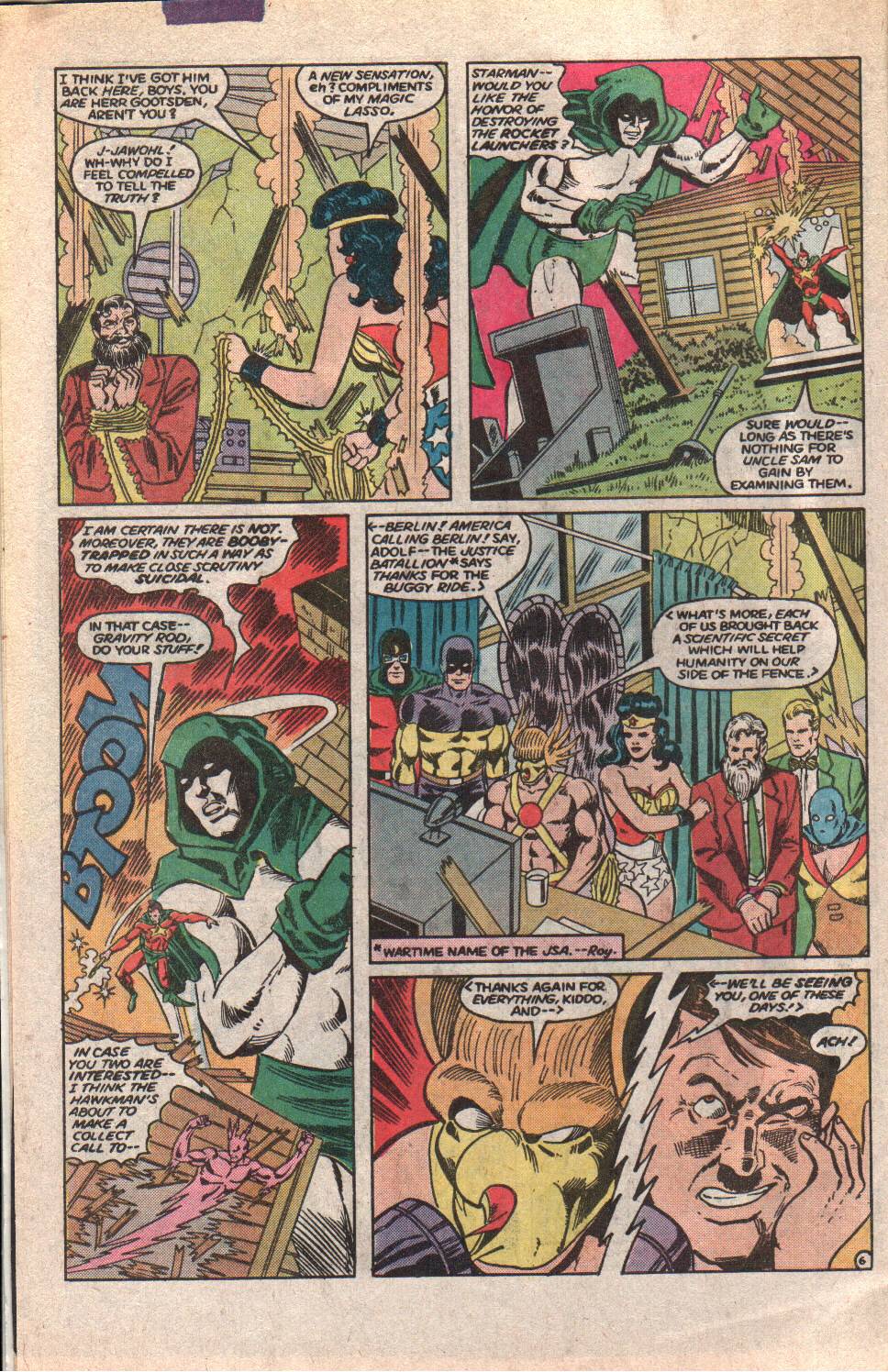 So, that's finally put to rest. Meanwhile, Mekanique is threatening to kill anyone who comes near Robotman... 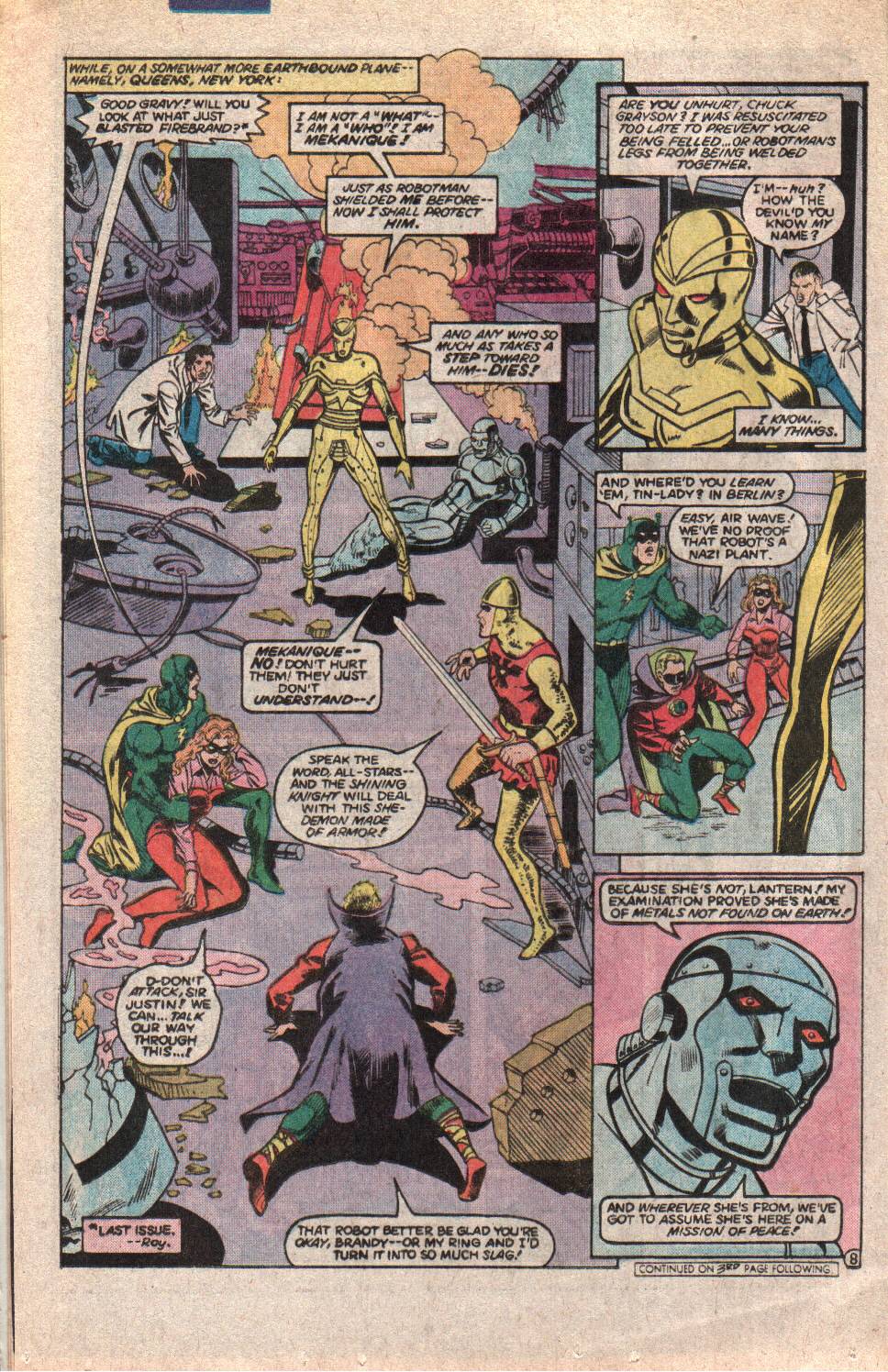 Robotman reveals she is made on non-earthly metals and says she is on a mission of peace. They ain't buying it and attack and Mekanique puts up a shield they can't break through. She reveals a moment of the future (Iran breaking off diplomatic ties with Japan) and it comes true. Shining Knight is still hostile and Robotman urges her to tell them more. She speaks of a future world-destroying war caused by a road accident when a little girl chases her cat into the street. Green Lantern and Firebrand fly off and, sure enough, a little girl's cat leaps out of her arms and she chases him into the street. firebrand stops her in time and Green Lantern prevents the car from crashing into a pole, which is carrying one Admiral Higby, a naval strategist. Everyone is safe and the All-Stars stand down and reconvene at the Perisphere. They all line up for a group photo, for FDR.... 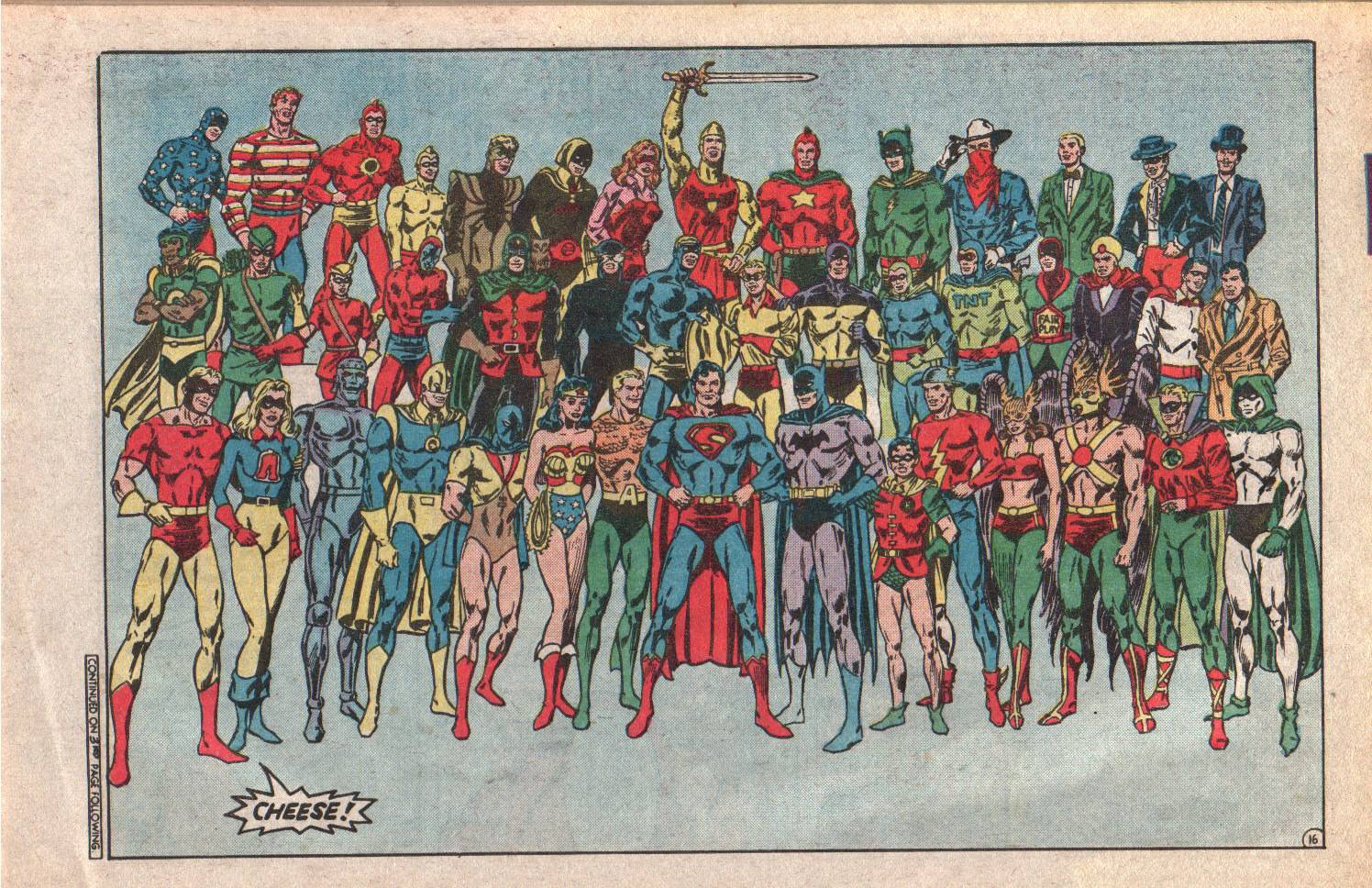 Robotman and Mekanique walk in the garden outside and Robotman presses her about the future and Rotwang. She is hiding something and he uses an electronic "hypnosis" to force her to reveal all. 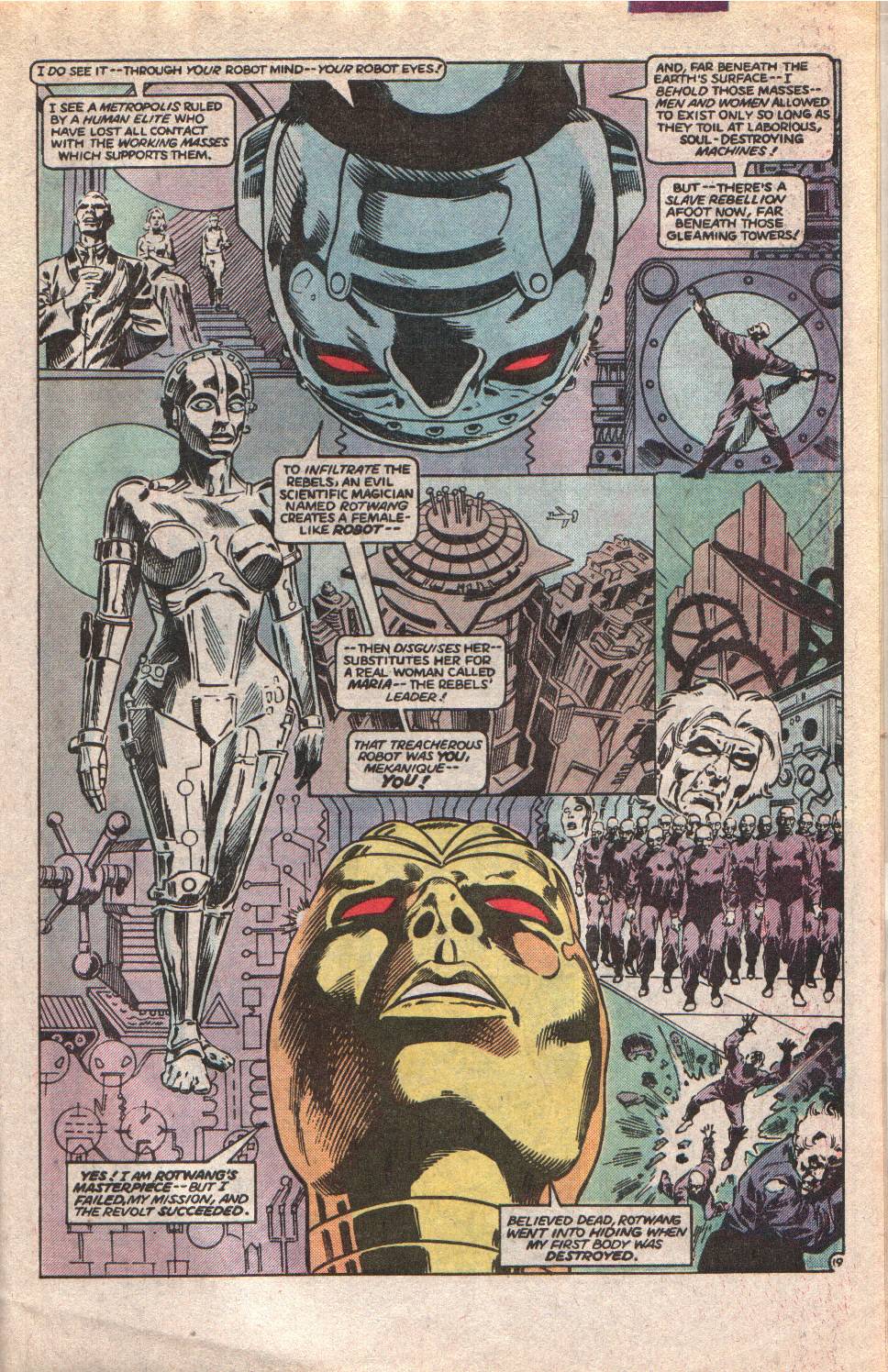 Turns out she is the robot Maria of Fritz Lang's (and Thea Von Harbou) Metropolis, created by Rotwang to replace the voice of the worker resistance to the elites who controlled their society. She failed, as Freder saved mMria and they saved the people from a flood and rose up against their masters. The robot was rebuilt and sent back in time to prevent Maria from ever being born. The plan has succeeded and Mekanique also reveals that, somehow, she has held back the time altering effects of the Crisis, keeping their knowledge of Earth-2 in tact, until she lets the change flow and history is altered, including wiping from existence Superman, Batman & Robin and Wonder Woman. The effects overcome Robotman and he has no memory of what she just said. Everyone thinks the world is hunky dory and FDR gets his photo. Thoughts: Kind of a weird ending that will not carry on, as this is the last original story of the All-Star Squadron, as Roy engages the final 7 issues in pure fan fiction, retelling origins and adapting another All-Star story. So, the issue of Mekanique and her future is left unfulfilled, until Roy picks it up in Infinity, Inc as she is mixed with the history of Per Degaton. So, that's mostly it for the series. In the letters column Roy admits that #60 is the end of the series, as he conceived it, though Secret Origins and Infinity, Inc will carry forweard, and that he has plans for a post-Crisis All-Star book, which will become Young All-Stars. Secret Origins was presenting the origin stories of DC's heroes, starting with Superman and the early focus was on the golden Age, until editorial dictates demanded more modern heroes mixed with the Golden Agers. Infinity, Inc handled the next generation, while also linking to the old JSA adventures (as well as rehash them to sometimes off-putting degrees). As it is, the photo of the All-Stars ends up being a pre-Crisis thing, as Green Arrow and Speedy are also wiped from existence, though they appear in the final image of the All-Stars, post-Crisis....  Quite frankly, this ends up rather disjointed and unsatisfying. The Shanghaied into Space riff left me cold and detracted from the thrust of the book. Mekanique is left unresolved and we see Earth-2 blink out of existence. It feels rather like a big middle finger from DC editorial to fans of the Earth-2 characters and the stories with them. The stories still existed; but, now we could never again visit that world, slightly different from the one we know. I was never a fan of the premise of Crisis unifying the parallel worlds; streamlining them, maybe, but not eliminating them. If that was the goal, then start the whole thing from square one. Too many decisions were made last minute, or for poor reasons and were undone or further altered or made into a bigger mess, within months. I like a lot of what came out of DC, post-Crisis, as the 30 Years Ago thread reveals, when you look at what I was buying. Still, I missed the Huntress being the daughter of Batman and Catwoman, of Earth-2. I missed the Freedom Fighters battling Nazis on Earth-X. I missed the JLA/JSA crossovers and I would soon miss the JSA, as they were, for all intents and purposes, wiped out of existence in the DC Universe, until they backtracked on that. I hated that whole Ragnarok limbo mess. DC celebrated 50 years of existence by dumping their past, in favor of a new present and their past is what made them unique. It took a little time for them to understand that and it took a new generation of fan writers to remind them (and some editorial changes). Historical Notes: The little girl's cat is named Ignatz, the mouse character in the comic strip Krazy Kat. That was also the name of Roy & Dann Thomas' cat. Nice way to treat a cat: naming it after a mouse that hit cats with bricks! Admiral Higby (misspelled) is a tribute to retired Coast Guard Rear Adm Frank D Higbee, a veteran of WW1 and 2, who was Warden of the Port of Los Angeles, during WW2. Roy and Dann Thomas became acquainted with him and appropriated him for the story. Arvel messed up his uniform, giving him gold stripes down his trouser seams. The Navy has no such uniform, neither does the Coast Guard. They also put him in the Navy, though he was a Coast Guard officer, during WW2. That's been par for the course for the series, as the artists seem to lack proper WW2 uniform references. Iran did break of relations with Japan in April 1942, as in the story. Metropolis was filmed in 1927, directed by fritz Lang and conceived by Lang and Thea von Harbou, who wrote the screenplay. Rudolph Klein-Rogge, who was a mainstay for Lang, and had been involved with Von Harbou before she left him for Lang, played Rotwang, the evil genius inventor of the Robot who replaces Maria. Brigitte Helm portrayed Maria and she would become a foe of the Nazis, as she was targeted for marrying a Jewish man. She hated what the Nazis were doing to the film industry and retired to Switzerland, in 1935. She did not act again until an appearance in a short film, in 1978. She died in 1996. Klein-Rogge would also portray Lang's criminal mastermind Dr Mabuse, in both Dr Mabuse the Gambler and The Testament of Dr Mabuse, a film which ended up being banned by the Nazis as it was a thinly veiled allegory of Hitler and the Nazis. Lang left the country, though he embellished the story that he fled after a meeting with Goebbels, which doesn't hold up to cursory examination of his actions before permanently leaving Germany, first to France and then to the United States, where he worked in Hollywood, though he did not enjoy the experience. Von Harbou remained in Germany, working as a scenarist in the German film industry, under Nazi control, while secretly marrying and Indian student, with whom she had an affair, while married to Lang (who indulged in his own affairs). Metropolis remains a cinematic masterpiece and has been referenced in things like Queen's "Radio Gaga" video, in the design for C3P0 in Star Wars, in the Colossus of Roads in Dean Motter's Terminal City, and with the League fo Extraordinary gentlemen. Some of the cityscape of Los Angeles, in Blade Runner, owed a legacy to Metropolis. In Japan, manga god Osamu Tezuka drew inspiration for his 1949 series, Metropolis. Later, Roy & Dann would revisit Metropolis, with Superman, in collaboration with Jean-Marc and Randy Lofficier, as part of a trilogy. September 1944 In the Pacific, as part of Operation Stalemate, the 1st Marine Division landed on the island of Pelilieu, in the Marianas island chain, to seize a Japanese held airfield, as part of the strategy to support Gen MacArthur's push to retake the Philippines. US strategy placed importance on the island to protect MacArthur's right flank and provide an airfield for future strikes north. Planning deviated little from previous landings, with the Marines landing in three sectors, expecting to face the same kinds of battles they had elsewhere, fighting the Japanese on the beaches and moving inland to secure the island. The navy's Underwater Demolition Teams (UDT) cleared beach obstacles and then a 3 day naval bombardment commenced, pausing only to launch carrier-based airstrikes on the island. The island was pounded mercilessly for the three days and it was believed that the Japanese would be all but wiped out, offering a token resistance to the landing forces, who would overwhelem the 11,00o Japanese troops stationed there. The US attacked with 47,000 personnel. What the US planners did not know was that the Japanese losses in previous operations had led them to re-examine their defensive strategy and abandon the idea of stopping an invasion on the beach. Instead, they developed heavy fortifications, with a system of bunkers and tunnels, honeycombing an island, well protected against bombardment and air strikes, by masses of natural rock, while setting up defensive positions that had overlapping fields of fire, concentrated on invasion routes. Thus, the Japanese could survive a bombardment and impede any advance inland for as long as the position could hold out. In fact, the Japanese mostly survived the 3-day bombardment with few casualties. They then fought a determined defense for the next two months, as the Marines and US Army reinforcements expended tons of ordinance and spilled gallons of blood routing out individual positions. The airfield was taken on the 2nd day and was launching artillery spotter planes by the third. It then provided a field for Marine Corsair aircraft to launch strikes on defensive positions, firing rockets into cave mouths and dropping a new weapon, napalm. This jellied gasoline was effective at burning away concealing cover, as well as burning out the defenders of such positions. The Marine pilots were engaging targets almost as soon as they lifted off and didn't even bother retracting their landing gear, as they would drop their ordinance and then maneuver into a landing pattern to rearm. In the end, the Mariens expended 1500 rounds of ammunition for every Japanese soldier killed. The 1st Marine Division suffered 6,500 casualties, a third of the entire division. The Japanese pretty much fought to a man. The 1st Marines were withdrawn after a month of fighting and spent their time rebuilding and recovering until the invasion of Okinawa. One of the Marines there was Eugene Sledge, who kept a diary of his experiences in his New Testament he carried in his pocket. In 1981, he turned these diary entries into a combat memoir, With the Old Breed: At Pelilieu and Okinawa, which is considered to be one of the most honest and finest accounts of a combat soldier. Sledge didn't pull punches, taking the reader into a world of fear and stress, fatigue and death, in a war of attrition to take the island. His memoir would provide material for both the Ken Burns documentary, The War and the HBO mini-series, The Pacific, where his role was played by Joseph Mazzello. Sledge suffered severe post traumatic stress upon returning home and it was only through the study of biology, which helped him focus on life, rather than death, allowed him to make peace with his time there. He earned his doctorate in 1960 and was a popular professor at Alabama College (now the Univ of Montevallo). He died in 2001. On the Eastern Front, the Soviets continued their push through Estonia and signed a peace accord with Finland, ending their war which had raged even before the fight with Germany. The Bulgarian government fell and a communist regime took charge and reallied itself with the Soviet Union. In Italy, the occupied "neutral" nation of San Marino was liberated by Allied forces. The nation declared neutrality early in the war, but the Allied advances in 1943 led to its occupation by the Germans, as part of the Gothic Line, protecting the southern frontiers of Germany. Fighting raged over 3 days. The Allied gains continued in Western Europe. On September 3, the Allies liberated Brussels, the capital of Belgium and then the port of Antwerp, on the 4th. This was a prize for the Allies, as they now had a deep water port in which to move supplies, equipment and men in greater numbers, helping to alleviate supply problems plaguing their rapid advance. The exiled Belgian government returned to brussels on the 7th. By September 10, Luxembourg was liberated. On September 12, the Allied forces from Operation Overlord (Normandy) and Operation Dragoon (Provence) linked up, near Dijon. The stage was set for one of the most audacious Allied operations of the war, Operation Market Garden. 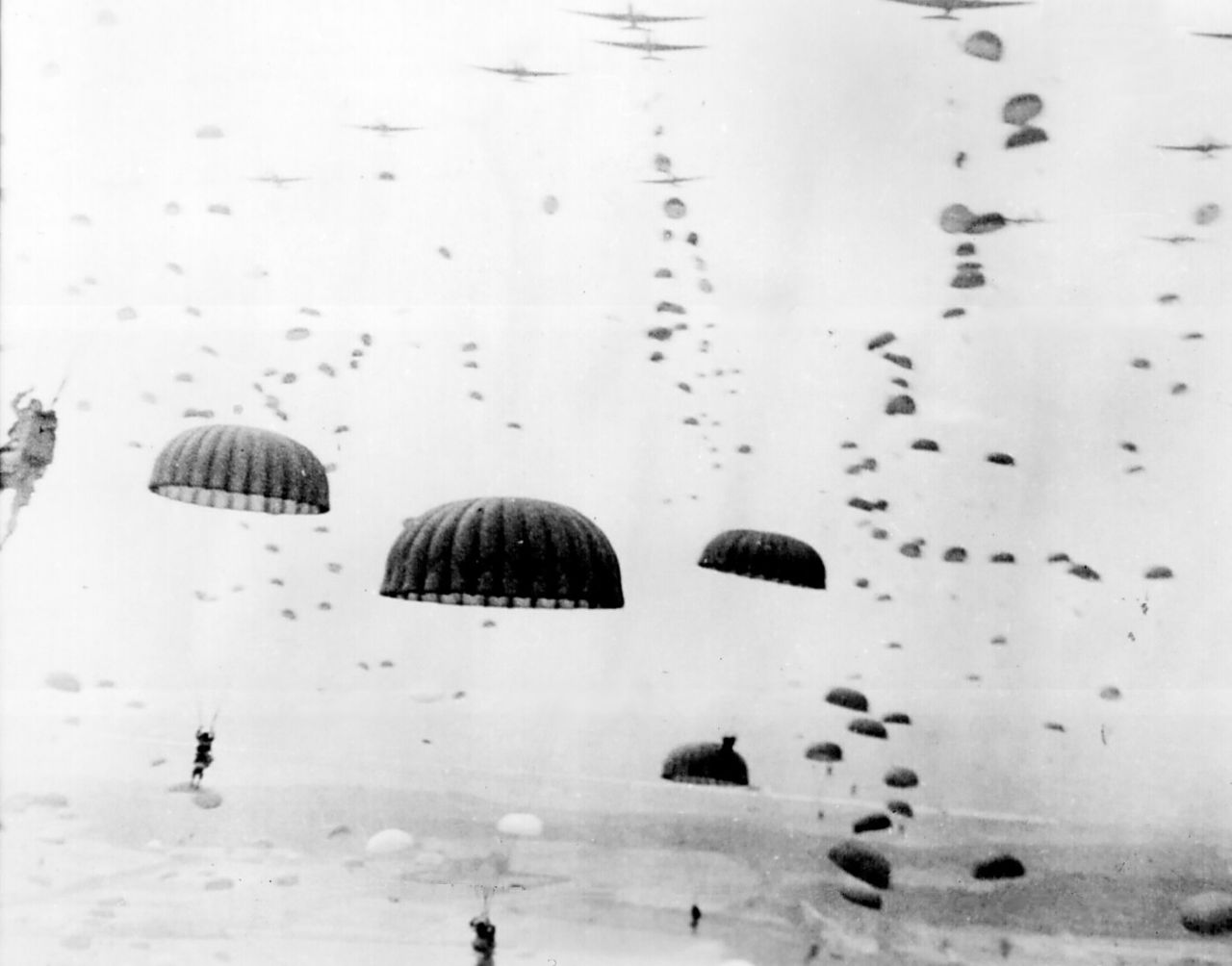 The plan was a bold one: a combined airborne and armored invasion of The Netherlands. The target was the bridge across the Rhine, at Arnhem, to allow the Allies to control an access point into Germany and end the war quickly. Amazingly, the plan came from notoriously cautious British Field Marshal Bernard Montgomery. Montgomery's plan was to employ the 1st Airborne Division, in conjunction with the US 82nd and 101st Airborne Divisions to seize a series of bridges across the Meuse River and two tributaries of the Rhine, as well as other canals and tributaries. The airborne forces would then be reinforced by the ground contingent and press forward to ultimately relieve the British paras at Arnhem and then bypass the Siegfried line into Germany. The plan consisted of two segments, Market was the airborne insertion of the paratroops all across Holland, with orders to sezie, intact, the key bridges and hold them against counter-attack until the ground forces could arrive. Garden was the ground portion, undertaken by XXX Corps, under the command of Lt Gen Brian Horrocks, one of Montgomery's most capable commanders. They had to fight their way through some 60 miles of enemy held territory and link up with each airborne contingent. The timetable for XXX Corps to reach Arnhem was 4 days, at most, along a two-lane highway, with surrounding ground that would inhibit tactical maneuvering. Allied intelligence painted a picture of the Germans as defeated and demoralized, on the run from the Allied advance. They believed the best troops had been withdrawn to Germany and that the defenders would be second tier units. Dutch Resistance intelligence suggested otherwise and they sent reports of troop stagings in key areas, including Panzer troops. Aerial reconnaissance even captured photos of tank units under cover, carrying out maintenance. These warning signs were ignored and a general attitude of not rocking Monty's boat prevailed. Allied logistics were committed to Montgomery, causing a halt in Patton's 3rd Army advance. The US 101st were assigned the bridges at Eindhoven (across the Son and Veghel), the 82nd had the bridges at Grave and Nijmegen and the British 1st Airborne and the Polish 1st Independent Parachute Brigade were given the rail bridge at Oosterbeek, in Arnhem. Transport was an immediate issue, as there were not enough C-47 Skytrains to deliver all of the paratroops and tow all of the gilder troops on the first day of operations. Instead, 90% of the aircraft were used to drop the paras on the first day and tow gliders on the second, then provide supply drops and reinforcements. Loss aircraft was a major concern, leading to the 1st Airborne's landing zone being nearly 10 miles from their objective, eliminating the chance of a coup de main attack on the Oosterbeek bridge, as at Normandy, with the Pegasus Bridge. The Germans were now under the command of Field Marshal Von Runstedt, one of the Wehrmacht's most capable leaders. he, along with Gen Model and Gen Sturdent, commander of the Fallschirmjaeger, had taken command of the situation and began building defensive lines along the Albert Canal, in the wake of the losses in July and August. These were not second tier troops. On the 1st day, the American landings went well, with the bulk of the paratroops landing on or near target, unlike at Normandy. The 101st achieved their objectives without major incident, until the Son Bridge was destroyed before it could be captured. A similar bridge nearby could not be taken. XXX Corps, led by the Irish Guards commenced their attack and then were ambushed by fallschirmjaeger and SS Panzer troops. With air support of Hawker Typhoons, they hit them hard and eventually routed them, but, their timetable had called for them to cover 13 miles in the first 2-3 hours and they had progressed only half that, throwing the advance behind schedule. The loss of the Son bridge required engineers to bring up Bailey Bridges, a prefab bridging structure that had to be floated across the river and assembled into a functioning pontoon bridge. This created further delays as XXX Corps could not advance until the bridge was completed. The 82nd ran into stiff resistance at the Grave Bridge and Nijmegen required a water-borne assault, using collapsible boats... 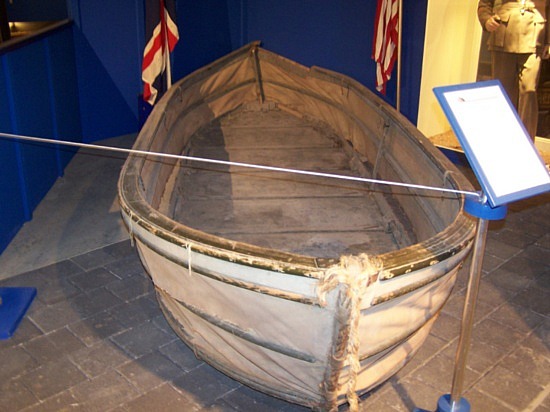 The 82nd took heavy casualties crossing the river to attack the bridge at both ends; but, the succeeded in their mission, capturing the bridge intact. At Arnhem, Lt Col John Frost led the advance force into Arnhem, then ran into heavy resistance at the bridge, including panzers. They were unable to communicate with headquarters due to problems with their radio crystals. Headqaurtersd had its own problems as their troops were scattered and commander Gen Roy Urquhart even had to take refuge in an attic to avoid capture by German troops, at one point. The Germans counter-attacked and overran British drop zones and subsequent resupply runs dropped supplies into German hands. The force at Arnhem was completely cut off from the rest and suffered heavy casualties, eventually surrendering when they were out of ammunition. The British launched an operation to withdraw as many troops from the area as possible, crossing the Rhine by swimming and in rubber rafts, as a relay system was set up, all under cover of darkness. This was after 9 days of fighting, over twice as long as planned. British 1st Airborne suffered 8,000 casualties, while the total Allied losses were between 15,000 ant 17, 000, to the German 6-13,000 estimated casualties. Of the 10,000 troops dropped near Arnhem, 1400+ were killed and 6000+ captured. The Allies continued fighting in the Netherlands until February of 1945, when Arnhem was finally liberated in Operation Plunder. The operation was a limited success in the south, but the northern end was a fiasco that took far too many casualties without achieving the primary objective. Losses were such that further airborne operations were not conducted until 1945. Much denial and scapegoating abounded. Montgomery continued to push the idea the operation was 90% successful. Polish General Sosabowski, who had been one of Poland's most effective officers at the start of the war and built their first Airborne unit, was painted as a failure by Montgomery's supporters, despite the excellent record of the Polish Brigade in fighting and aiding in the withdraw of the 1st Airborne. The Poles were delayed by weather in their jumps and Sosabowski had been a vocal critic of Montgomery's plans and Gen Browning's optimism. After the war, he could not return to Poland, due to the Communist regime, who considered him a traitor. He ended up working in a factory and most who knew him only learned he had been a general and a war hero after his death. On September 19, the Battle of Hurtgen Forest began, along the Belgium-German frontier, which would last into mid-December. The Allies were trying to break through the Siegfried line and move into the Ruhr Valley, hoping to take control of the damn there, to prevent flooding that could stop an Allied advance. The Allies suffered 33,000-50,000 casualties, while the Germans suffered 28, 000 but held the frontier, before counter-attacking with the Ardennes Offensive, aka The Battle of the Bulge. The US 1st Division suffered the bulk of the casualties in heavy fighting. In total, the Allies suffered over 140,000 casualties in the campaign to breach the Siegfried Line. , something that would not occur until 1945. On September 2, Anne Frank and her family are transported to Auschwitz. September began Hongerwinter, a famine which ravaged occupied Northern Holland. German forces had cut off food and fuel shipments to the farmlands and the occupied areas were densely populated. Soup kitchens worked to feed the populace; but, somewhere between 18,000 and 22, 000 are estimated to have perished. The winter proved to be one of the harshest on record, which contributed to the high death toll. the caloric intake dropped below 1000 calories and was down to about 500, by February, before the area was completely liberated. The Allies, in an amazing act of cooperation, secured permission to carry out mercy flights (code named Operation Manna and Operation Chowhound) to drop supplies into affected areas, flying on a specific course, unescorted, provided the Allies did not bomb German areas. In his commentary for the movie Black Book, director Paul Verhoeven spoke of his childhood, eating the soup provided at the soup kitchens, which was often made with things like tulip bulbs. he said he could still taste it, watching the scenes of the soup kitchen, in the film. On September 8, the first V-2 rocket attack on London occurred.
|
|
|
|
Post by codystarbuck on Feb 16, 2021 20:28:01 GMT -5
All-Star Squadron #61 The secret origin of Liberty Belle! Well, let's see, first you make a mold, then you heat the metal ingot until it is molten, then pour it into the mold........ Creative Team: Roy Thomas-writer/editor, Mike Harris-pencils, Tony Dezuniga-inks, Cody Weiss-letters, Carl Gafford-colors. No credit for Dann Thomas. Adapted from Boy Commandos #1, from a story by Chuck Winter & Don Cameron. Synopsis: Liberty Belle relates her origin for Tarantual's book... 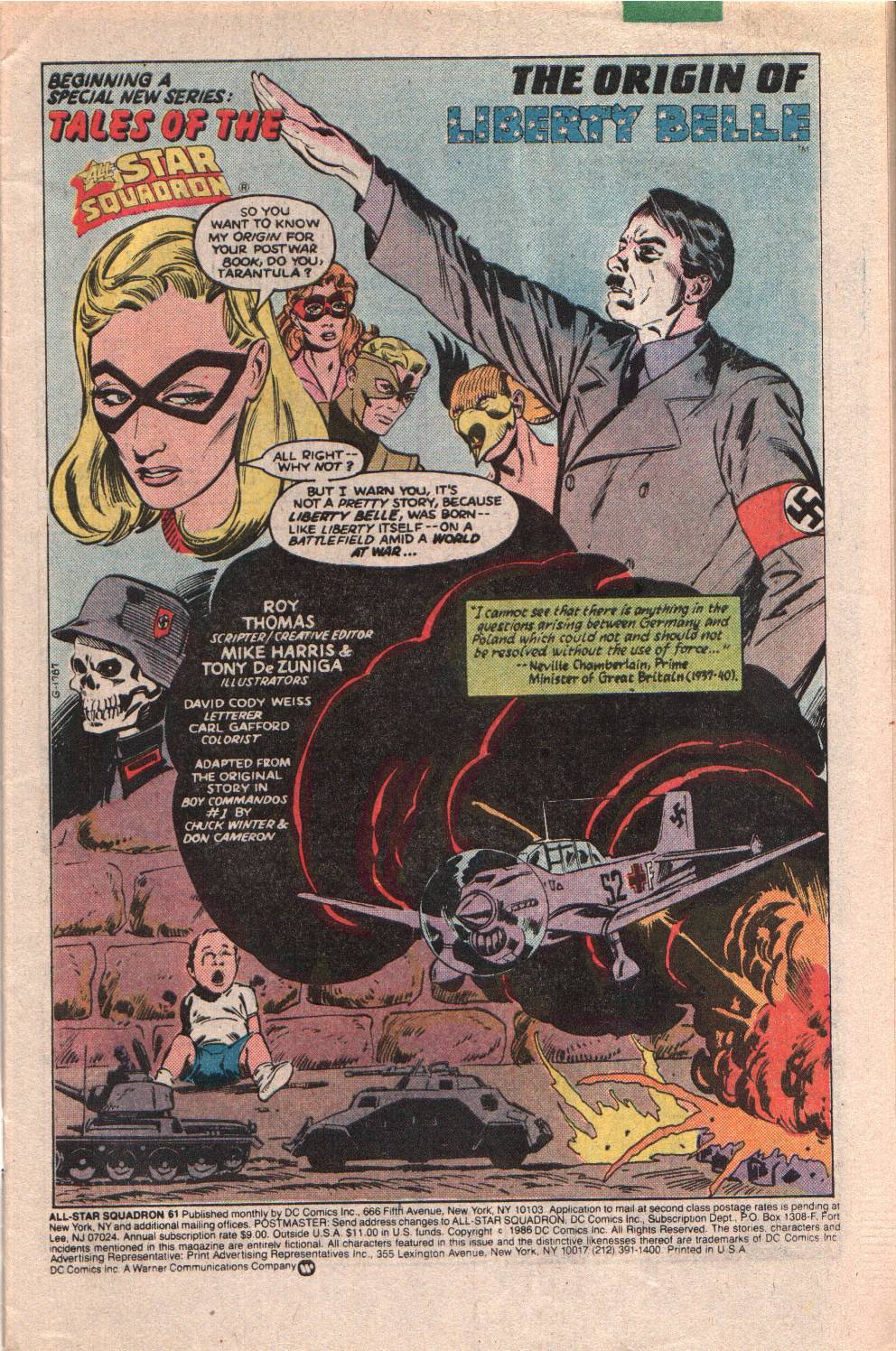 We cut to Warsaw, Septermber 1939, one week into WW2. Richard cannon, and American businessman is at the US Embassy, looking to speak with Maj. Lawrence, the military attache. he makes moves on a young woman who turns out to be the major's niece, Libby Lawrence. Libby goes to lunch with him, despite his forward manner, as she likes him. He was at the 1936 Berlin Olympics, where Libby won swimming medals, while Will Everett won track medals, alongside Jessie Owens. They walk along an Rick says this isn't his fight, when an air raid siren goes off and they seek shelter. Bombs hit up ahead, but away from the US Embassay. However, the Major had gone to their hotel and Libby sees a Stuka drop its load on the hotel and finds the dead body of her uncle, in the aftermath... 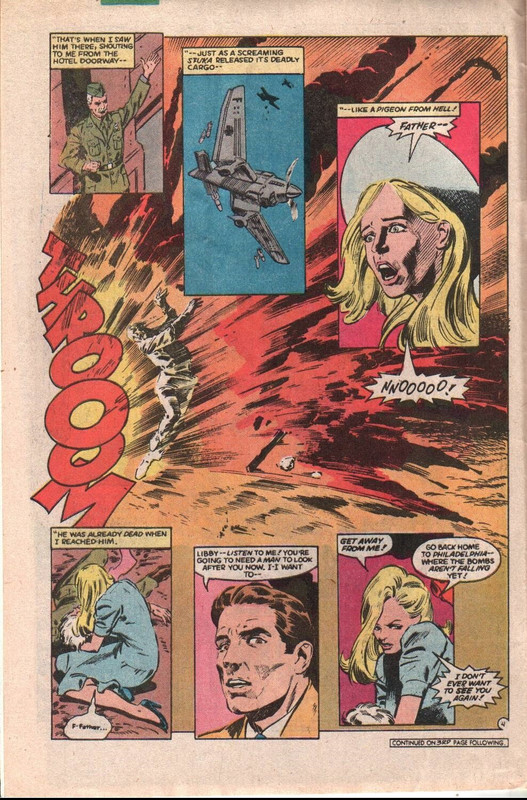 Warsaw falls and Libby witnesses Jews been rounded up by the Nazis. She is caught but rescued by a Standartenfuhrer Krupp, who she knew as Rick Cannon. He gives her a letter of transit and puts her on a train to the Netherlands. She thinks he is a German spy, who masqueraded as an American, to gain intelligence. nah, too obvious... Libby relates what she had seen to Dutch military officials, who disbelieve and accept assurances of Dutch and Belgian neutrality, as in WW1. Libby doesn't buy it and warns them and leaves. Holland and Belgium fell in May, 1940. Libby is again on the wrong side. She is grabbed and silenced by "Rick Cannon"/Standartenfuhrer Krupp, who saves her from a German patrol and puts her on a wagon that goes into France. 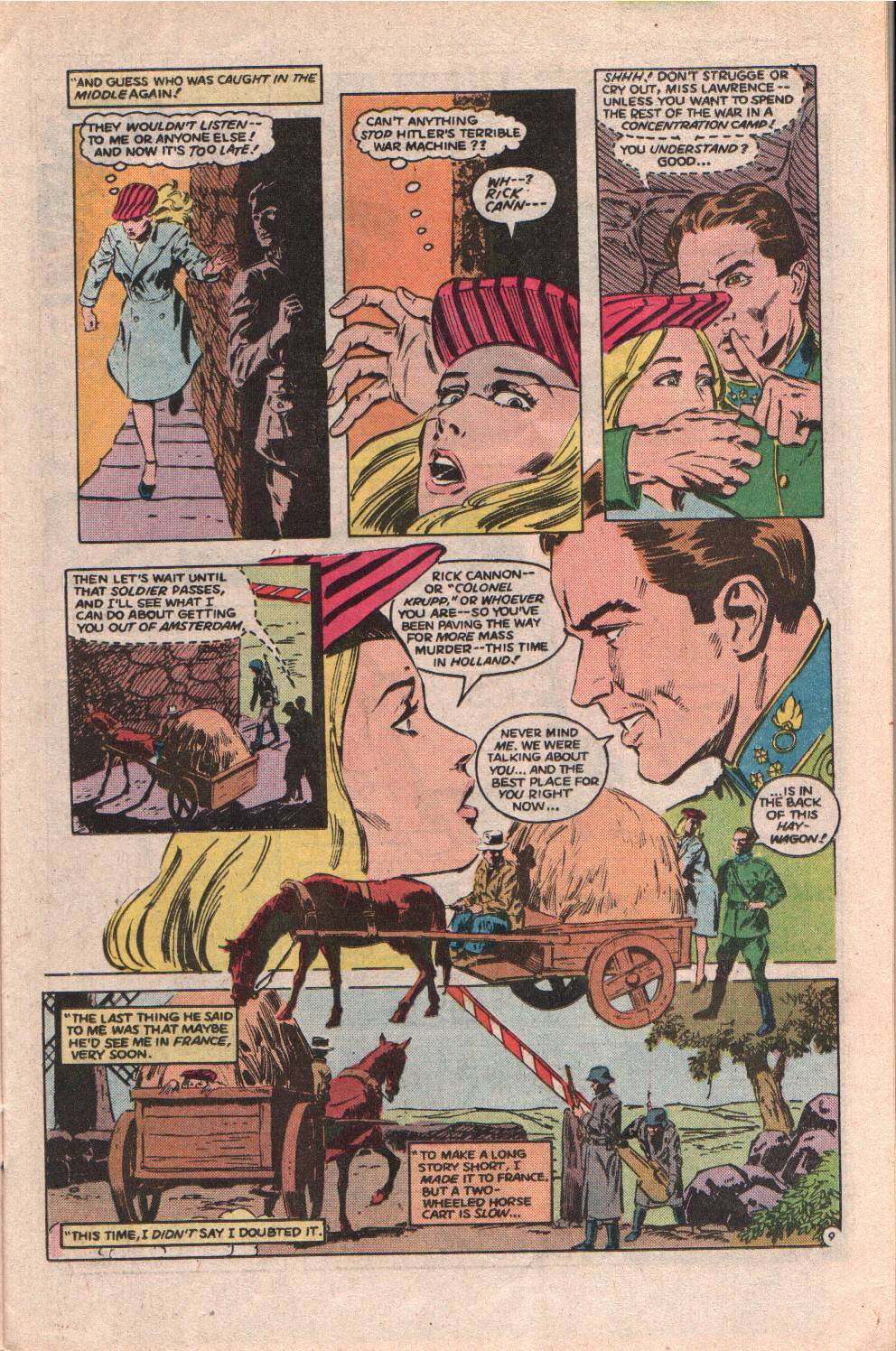 Libby still ends up on the wrong side, as the Allies are encircled at Dunkirk. Again she meets Cannon, who gets her on a boat across the Channel. The boat is strafed by a BF-109 (mistakenly called a Stuka, in the dialogue) and Libby is the only survivor. She swims the English Channel to freedom, arriving in her skivvies. She becomes a press sensation and then a reporter, broadcasting war news to neutral America. After a year, Libby returns to Philadelphia and visits Independence Hall and the Liberty Bell. There she meets a guard, Tom Revere, who notices her Liberty Bell pin (an award for swimming championships) and when he polishes a spot on the ball, it rings and Libby's pin begins vibrating. She makes excuses and leaves. She thinks of the diaries she found in her attic, of an ancestor, Bess Lynn, aka Miss Liberty. She then spots Rick Cannon, engaged in conversation with a German saboteur. They are meeting at the Hibbs Estate. Once again, Libby is left to figure Cannon as a German spy and calls the FBI. She is interrupted by her vibrating pin and hangs up and feels compelled to go herself. She fashions a costume and creates the identity of Liberty Belle... 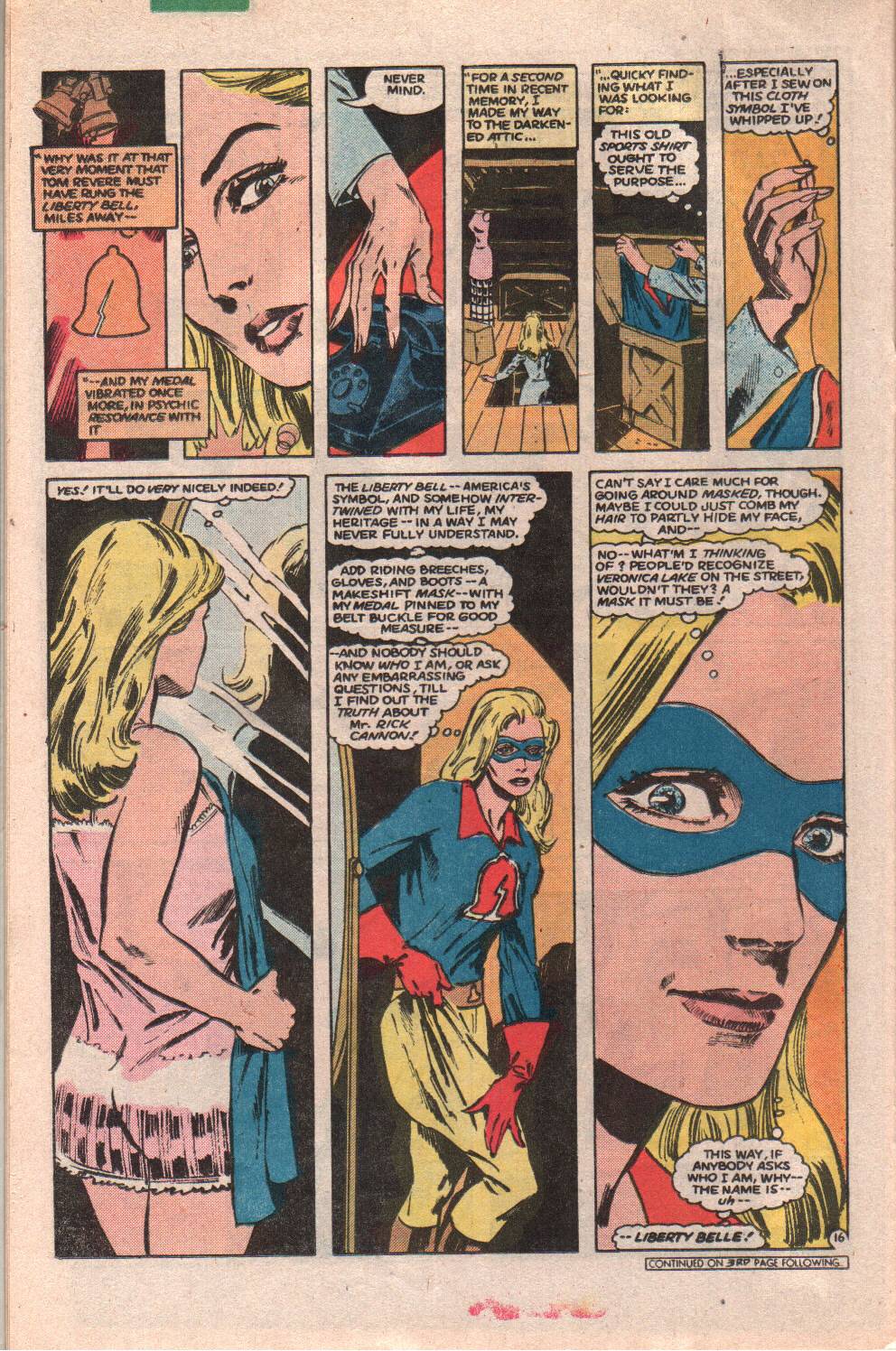 At the Hibbs estate, she observes a meeting of agents, who brief about their network in the Philadelphia area. Then, Rick Cannon reveals himself to be from G-2 (Army Intelligence) and draws his weapon. A fight ensues and he gets a Luger to the back of the head and Libby springs into action. 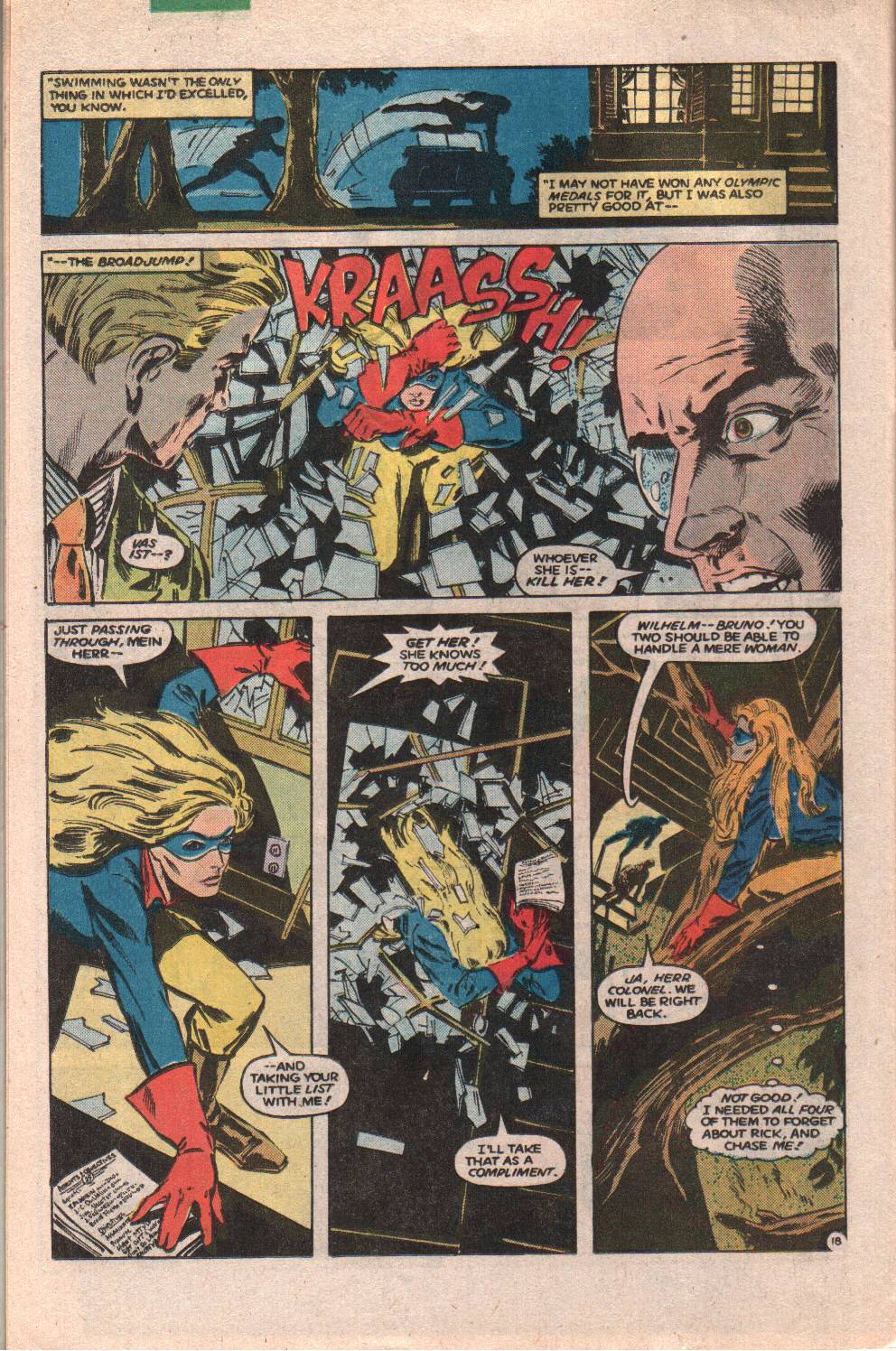 She escapes with the list and hides in a tree, then drops down on her hunters. She jumps into a boat and goes across a lake, avoiding shots. The Germans pursue and she swims under their boat and dumps them into the lake. They are captured and she checks on Rick Cannon and tells him she can be reached through Tom Revere, at Independence Hall. Libby ends the tale to join Johnny and take the honeymoon they haven't had. The letters pages announces that the series is at an end, as it exists, with a new magazine to take up the post-Crisis Squadron. These last issues will deal with the core members and their histories. Thoughts: Roy is indulging in his fan fiction expansion of old Golden Age stories. Liberty Belle debuted in Boy Commandos #1, in 1942 (making her appearance at the start of this series an anachronism; but, it works). We heard the basic details early on in the series, but this gives us some depth, while also establishing Rick Cannon as her Steve Trevor, if you will. Roy had intended to do something more with Rick Cannon, but never found the right moment, then Crisis upended everything. The art is on the sketchier side; but, it captures the emotional beats well and stages the action well. Personally, I think a 3 or 4-issue mini-series would have been a better venue for telling Libby's origin nd giving it some greater weight. As it is, she was a mostly forgotten character before Roy and after, until James Robinson took her up in The Golden Age and her hero name was passed on to daughter Jesse Quick, in JSA (after emulating her dad, earlier). Liberty Belle was a good character and one of the best in this series; so, you'd think DC would have done more to raise her profile; but, I guess she was an icky girl and there was only room for Wonder Woman and Black Canary (Libby needed a sexier costume). That's over-simplified; but, I think the fact that she was a female character didn't have many people jumping to do much with her, beyond Roy and James Robinson. Historical Notes: Libby takes us through the bombing and fall of Warsaw, the invasion of The Netherlands and Dunkirk. On September 1, 1939, the Germans manufacture provocation and invade Poland, touching of WW2, in Europe (Japan and China were already fighting, in Asia). Great Britain and France, adhering to their treaty obligations, declared war on Germany. The US remained neutral. On September 17, the Soviet Union invades from the East. On September 28, Warsaw surrenders. The Germans and Soviets agree to the division of Poland. Germany is occupied with exerting control in Poland, Czechoslovakia and other areas. The Soviet Union goes to war with Finland. Along the frontier of France, tensions are high, but a German invasion does not come. March 1940-The Soviet Union and Finland sign a peace accord, ending the Winter War. Hitler and Mussolini meet and Hitler informs him the Germans are ready to attack in the west and Mussolini agrees to join in the war. In April, Germany invades Norway and sets up a puppet government. Denmark is also invaded and capitulates in 6 hours. The British land forces in Norway to drive out the Germans. The British suffer heavy losses and are forced to evacuate their remaining forces, by June, while also transporting King Haakon and Prince Olav from the country. On May 10, the Germans invaded the low countries of Belgium, The Netherlands and Luxembourg, with the first large scale drops of paratroops, as the German Fallschirmjagger landed in advance of panzer trops and infantry, seizing key bridges and canals and catching the Dutch and Belgian armies mostly by surprise. The Dutch Army had not significantly modernized its armaments since WW1 and the Germans had superior examples of tanks, planes and vehicles and had mastered the art of combined operations. The Dutch Army had good professional soldiers and eladers, but were woefully under-armed with armored vehicles, mobile artilelry and the air arm flew biplanes against Messerschitts and Stukas. The country capitulated in 5 days. In Belgium, the Fallschirmjagger executed a daring airborne assault of the key defensive fort of Eben Emael, using shaped charges (a new weapon) to blast their way through the concrete structure. They used the explosives and flame throwers to neutralize outer defenses, then blasted their way into the main fort and then isolated the defenders in lower areas. They were thus able to capture a key bridge that the fort guarded (after eliminating some pillboxes) which allowed German troops and armor to pour in. The Belgians were better equipped than the Dutch and fought hard, but eventually capitualted by the end of the month. Luxembourg was officially neutral, but as considered strategic becuase of its position on the northern end of the Maginot Line, the system of French fortifications along the frontier with Germany. France did not extend the defenses to their other borders, considering the Ardennes forest and the neutral nations as enough of a buffer. This was why the Germans targeted these areas, as it gave them an avenue into northern France, around the Maginot Line. Luxembourg is a small duchy, with a small volunteer corps of soldiers, who stayed in barracks, while the police attempted to stop the Germans. The Germans occupied the capital within 9 hours of launching the invasion. Grand Duchess Charlotte fled to France and eventually set up residence in Canada, for the duration of the war. France was attacked as well, though their borders were not severely threatened until the 12th of May. The Germans moved in via the Ardennes, but the road system slowed their advance. The French engaged them in a tank battle at Hannut and destroyed 160 tanks, but at the cost of 121 of their own. The Germans hit them with the largest aerial bombardment the world had ever seen, making dive bomb attacks on French positions. Miscommunication and panic created a gap in French defenses, at Sedan, which the Germans exploited. After the Luftwaffe airstrikes, the defenses along the Meuse River began to falter and collapsed. The French and British fought a retreat, eventually to Dunkirk, where the Germans called a halt, under orders from Hitler. The Allies had suffered heavy casualties and capture of forces, with nearly 60% lost as prisoners of war or killed in the Siege of Calais. The British launched Operation Dynamo, beginning on May 26, which sought to evacuate soldiers and key civilian leadership across the Channel, The Miracle of Dunkirk. Ships of all sizes and types were mustered and made multiple trips, ferrying survivors back to England. On the 27th, the Germans began bombing Dunkirk and the RAF was switched to providing close air support of the evacuation, inflicting heavy casualties on the Luftwaffe, for every RAF plane downed. By June 4, over 300, 000 troops and civilians had been evacuated, though French and British forces remained to fight a rearguard action. Many of those were later evacuated, while other were taken prisoner. The Germans launched a new offensive at Somme and and Aisne and met heavy resistance. The Germans relied on the Luftwaffe to silence French guns, so that infantry could move forward. By June 10, Paris was declared an open city, as the Luftwaffe had inched towards air supremacy. By the 14th, the city capitulated. On June 25, in the same rail carriage where the Germans had signed the armistice ending WW1, the French were forced to capitulate to the Germans. October 1944- On the Eastern Front, German losses continue to mount, as the Red Army captures Riga, in Latvia and by month's end have liberated Kirkenes, the first Norwegian town to be freed from Nazi rule. Romania and Bulgaria had turned on Germany and the Red Army pushed on against them in Hungary, leading to the Battle of Debrecen, which led to heavy fighting, delaying the Soviet advance on Budapest, with the Germans inflicting heavy losses, before finally being defeated. In Yugoslavia, the puppet government collapses in Serbia. By October 20, Belgrade has been liberated by combined forces of the Yugoslav Partisans, the Bulgarian and the Red Army. On October 12, the Allies land in Athens The Allies launched a new offensive in The Netherlands, Operation Pheasant, designed to push the Germans out of the Brabant province of Holland., after two weeks, German resistance was broken and the areas cleared. The Germans fought a fighting retreat, but the eventual ousting opened up Allied supply lines. In Poland, the Warsaw Uprising ends and the destruction of the city commences. On October 6, members of the Sonderkommando, in Auschwitz, stage an uprising that is put down. October 10 saw the systematic massacre of 800 Romani children. On October 30, Anne Frank and her sister are deported to Bergen-Belsen. In the Pacific, the Allies launch the Invasion of the Philippines, at Leyte. Adm Halsey had carried out probing strikes on the island and found Japanese defenses "lacking." The timetable for the invasion was pushed up, as the Philippines were a key strategic target in cutting Japan off from their forces in China and for continued movement towards the Japanese home islands. Preliminary operations commenced on the 17th, with the Rangers seizing key islands in Leyte Gulf_ Suluan, Dinagat and Homonhon. Homonhon & Dinagatwas deserted, but the Rangers overcame opposition from the Japanese on Suluan. They set up navigation aids for the landings that were to follow. UDt carried out beach reconnaissance and found the sites free of obstacles. Landings commenced on October 20, after 4 hours of naval bombardment. Landing forces in some sectors faced as much delay from terrain as opposing forces. Within an hour, most sectors had established a beachhead big enough to land heavy vehicles and supplies. Gen MacArthur landed at Red Beach, with plenty of newscameras waiting, to witness him wading ashore from a landing craft and then make a radio broadcast that he had returned to the Philippines. Leyte afforded many advantages, including roads that allowed tank deployment, plus deep water landing sites to bring in supplies and heavy equipment. By the end of the day, the Allies were a mile inland and controlled a sector 5 miles wide, as well as a nearby airfield. On the 21st, they captured the provincial capital of Tacloban and restored civilian government. By the 24th they had secured the San Juanico Strait. They began the push into the Leyte Valley. Here is where they encountered stiff resistance and fighting would continue into December, before the island was completely secured. Meanwhile, the largest naval battle in history (depending on definition) unfolded. On October 12, Adm Halsey began a series of airstikes against Formosa (modern Taiwan) and the Ryuku Islands, designed to draw out Japanese land based aircraft and fight them in a war of attrition. The raids were designed to eliminate the aircraft as a threat to the landings at Leyte. The Japanese lost nearly 600 aircraft in 3 days, almost their entire air strength. The Japanese now became committed to a last ditch attempt at luring the US fleet into a decisive naval action to stem their progress. Japan, however, had suffered heavy losses int he Battle of the philippine Sea, losing most of its naval airpower. The Japanese launched a three pronged attack. The Northern Force was built around several carriers, which lacked aircraft or trained pilots. They acted as bait to lure out the defending air forces. Meanwhile, a Southern Force would attack the main US fleet, at Leyte, via the Surigao Strait. The Central Force would attack via the San Bernadino Strait. Center Force consisted of 5 battleships (including the Yamato and Musashi), 10 heavy cruisers, 2 light cruisers and 15 destroyers. It was spotted and engaged by US submarines Darter and Dace, on the 23 and they engaged, sinking the heavy cruisers Atago and Maya and damaged the Takao. Takao turned back towards Brunei. On the 24th, the Battle of Sibuyan Sea occurred, with land based aircraft launched from Luzon, in support of Center Force. The aircraft were intercepted and shot down by combat air patrol, from the USS Essex. The USS Intrepid launched strikes against the Musashi, Nagato and Yamato and succeeded in sinking the Musashi, as well as badly damaging the Myokeo, a heavy cruiser, which also returned to Singapore, where both it and the Takao were declared irreparable and remained as floating gun platforms. Meanwhile, a Japanese bomber scored a hit on the uSS Princeton, setting fire and causing heavy damage. The fire was contained, but a resulting explosion caused further damage and the ship was lost. Central Force was bloodied, but still in a position to attack. Adm Halsey committed a task force of battleships, centered around the USS New Jersey, with securing the San Bernadino Strait, with supporting aircover from the 3rd Fleet. They failed to detect Northern Force, which was the bait for the Japanese operation. Northern Force intercepted confused transmissions which made it seem like Center Force was withdrawing and the started their own withdrawal, until receiving orders to committ all forces against the US Fleet. This led tot he Battle of Surigao Strait, on the 25th. The battle was the last battleship-to-battleship clash of the war and in history. Southern Force, with the battleships Yamashiro and Fuso, along with the heavy cruiser Mogami and 4 destroyers met the US force of 6 battleships, 4 heavy cruisers, 4 light cruisers and 28 destroyers (as well as 39 PT boats). 5 of the 6 battleships had been damaged or partially sunk at Pearl Harbor. The Japanese ran a gauntlet of PT boats, who launched multiple, but unsuccessful torpedo attacks, but kept reporting contacts to the main force. The Japanese then ran into the destroyer screen and the Fuso and two destroyers were sunk, while the Yamashiro was also hit by torpedoes. The USS West Virginia picked up the remaining ships on radar and fired salvos, using radar fire-control systems, allowing them to fire outside of visual range. Only one ship in the force survived to escape, encountering the secondary group that was to support Southern Force, who saw the wrecked ships and retreated. On the25th, Central Force engaged US ships off Samar. Halsey had gone north and left a force of destroyers and escort carriers in a vulnerable position. Adm Clifton Sprague ordered his escort carriers to launch aircraft and withdraw into the cover of a squall, with destroyers and destroyer escorts providing smokescreen. The Japanese thought they had encountered Halsey's group and gave orders for a general attack. The USS Johnston, a destroyer was closest to the Japanese and launched a desperate head-on torpedo attack on the ships. They succeeded in damaging the Kumano, forcing it out of line and spurring the US to order "small boys attack." The USS Hoel and Heermann (destroyers ) and Samuel B Roberts (DE) launched torpedo attacks at high speed, drawing the fire of the Japanese, but forcing them to maneuver chaotically to avoid torpedoes. Hoel and Heermann were hit multiple times and sank. The Roberts continued attacks, with the captain telling the crew that they faced overwhelming odds, with little hope of survival. Johnston also remained in the fight with its 5 inch gun, before it was sunk. the escort carriers launched all available aircraft, with whatever armament was available, 450 planes. Most were older planes and more geared to patrol and anti-submarine duties, but, without supporting air cover, they were able to carry out unopposed attacks on the Japanese ships. The heavy defense convinced the Japanese commander that he faced the main fleet, but he received a report of carriers to the north and decided to expend his forces against the carriers. Northern Force was finally engaged off Cape Engano and destroyed most of their aircraft after they launched. By the end, the US had lost 7 ships, including the escort carrier St Lo, which was the first warship sunk in a kamikaze attack. The Japanese lost 26 warships, including the battleships Musashi, Yamashiro and Fuso, the fleet carrier Zuikaku 9the last surviving carrier of the force that attacked Pearl Harbor), 3 light aircraft carriers, 6 heavy cruisers, 4 light cruisers and 9 destroyers; a third of the forces committed to the operation. The US suffered 3,000 casualties to over 12,000 by the Japanese. The battle secured the landing beaches of Leyte from attack from the sea and ended Japanese naval engagements until April of 1945, when they launched a final, suicidal sortie. Japanese ships returned to port and did not leave again. Japanese holdings in Southeast Asia were cut off, blocking vital resources such as oil, vital for ships and aircraft. Japanese armament manufacturing was all located in Japan, yet the raw materials were in Southeast Asia, crippling their industry. From this point, the Japanese ceded the Philippines to the Allies, focusing instead on the defense of the Japanese home islands. The fighting in the Philippines would continue into 1945, as they sought to gain control of the largest island, Luzon.
|
|
|
|
Post by zaku on Feb 17, 2021 4:06:18 GMT -5
I find it a little difficult to understand why Crisis would have "totally ruined" this comic. The big difference (regarding the WW2 adventures) is that the "duplicate" characters have been deleted. But since Thomas used anyway them very little for various reasons , I think it could reasonably be said that 90% (or more) of the stories may have remained identical even in the Post-Crisis era.(I didn't actually read them, I'm basing this hypothesis on your excellent reviews  ) |
|
|
|
Post by mikelmidnight on Feb 17, 2021 12:44:27 GMT -5
Liberty Belle was a good character and one of the best in this series; so, you'd think DC would have done more to raise her profile; but, I guess she was an icky girl and there was only room for Wonder Woman and Black Canary (Libby needed a sexier costume). That's over-simplified; but, I think the fact that she was a female character didn't have many people jumping to do much with her, beyond Roy and James Robinson.
I never thought A*S quite 'got' Libby.
She was clearly based on Veronica Lake, but until Paul Smith, the artists never too advantage of the resemblance.
Libby in her secret id was also uniquely butch, almost mannish in her presentation, and a lot could have been done to make that interesting but it never was.
|
|
|
|
Post by codystarbuck on Feb 24, 2021 17:37:47 GMT -5
All-Star Squadron #62 The Origin of the Shining Knight! I believe it involves Brasso... 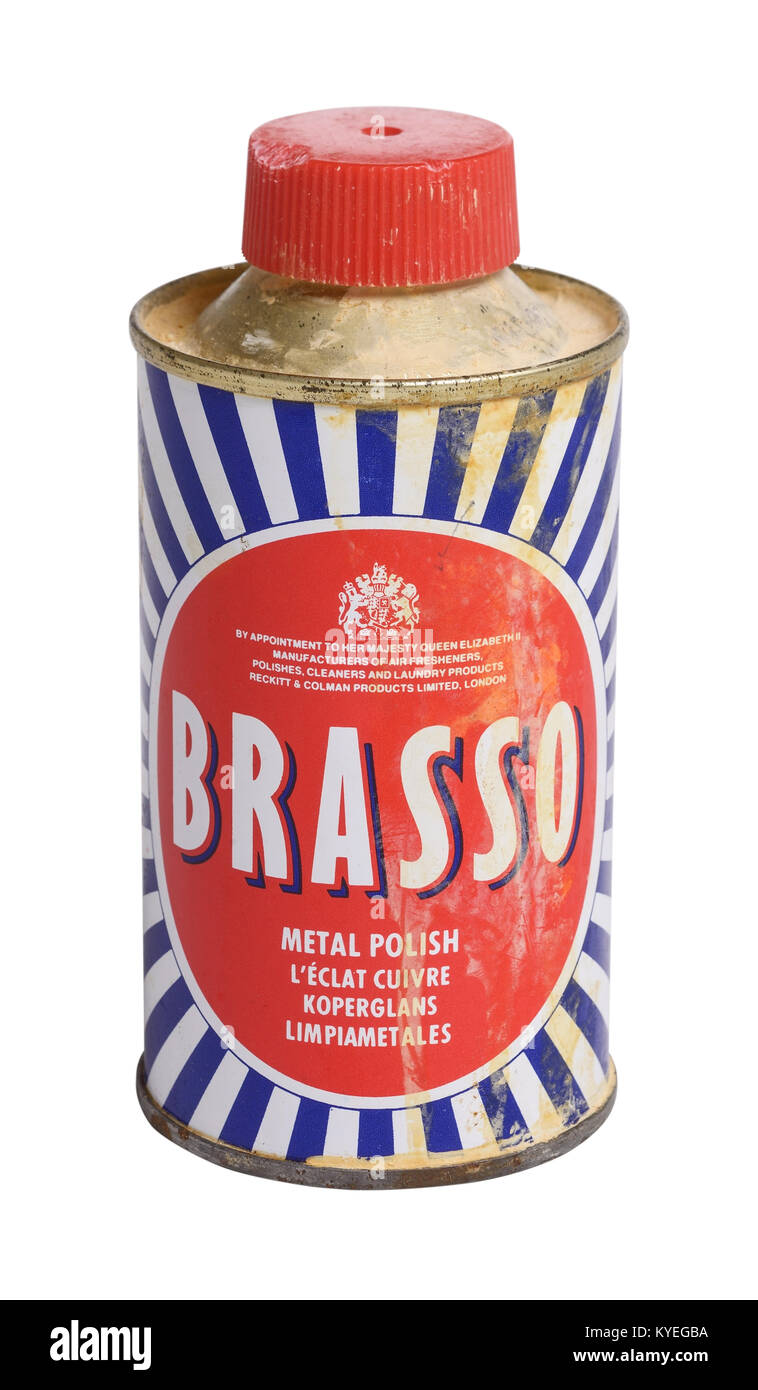 Creative Team: Creative Team: Roy Thomas-writer/editor, Tony DeZuniga-artist, Cody Weiss-letters, Carl Gafford-colors. Based on Adventure Comics #66, with art by Craig Flessel Synopsis: We go back to the (fictional) days of King Arthur, which looks vaguely Fosterian, as Queen Guinevere's cousin, Sir (Jimmie) Fallon gets F-ed up by the ogre, 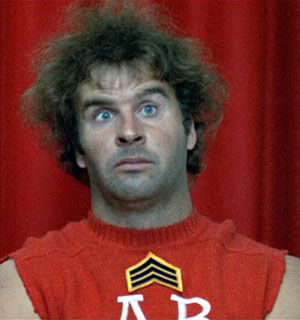 Blunderbore. The Knights of the Round Table..... ....argue over who gets to go pop a lance in his @$$ as payback. The winner is Sir Justin... 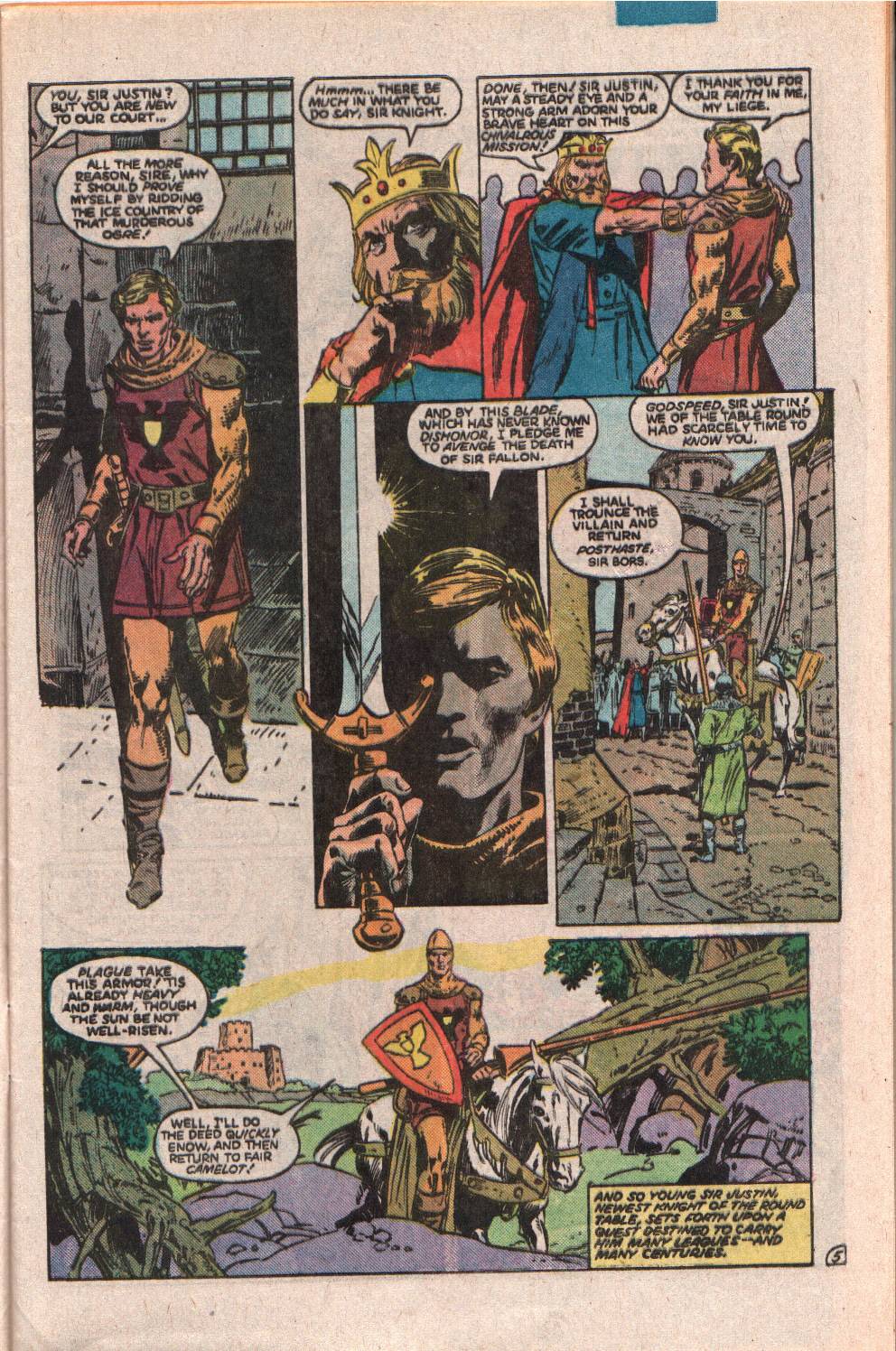 Wow; who knew he was blond? The rookie knight sets out on his quest and comes across some dues wearing someone else's colors and they fight and he inadvertently releases Merlin, from a spell. Merle rewards him with new threads.... 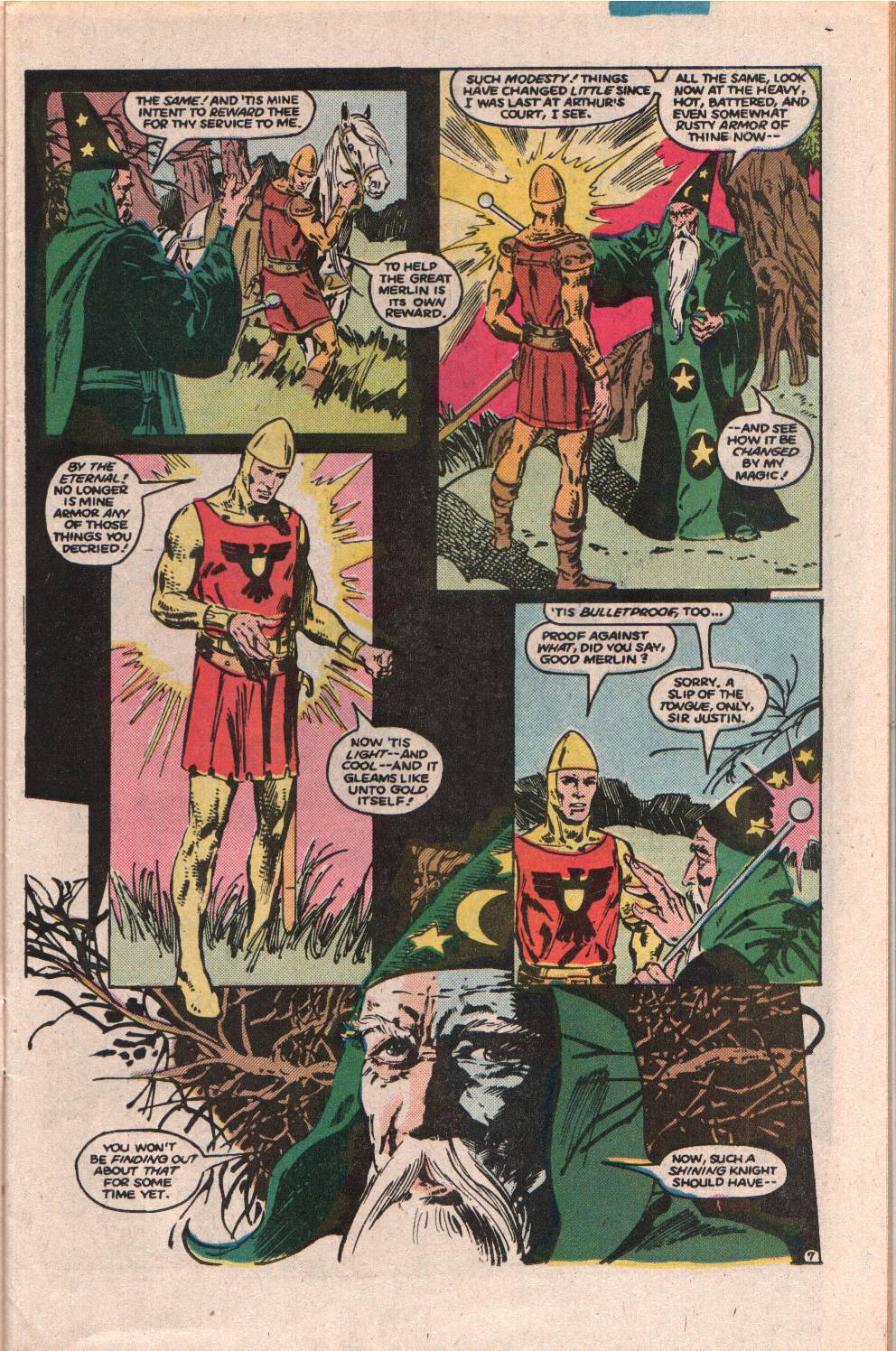 ...and a hint about the future. He peps up his sword a bit and turns his horse into Winged Victory which irks Mobil. Ooooooh; John Byrne on Superman, in 2 weeks! 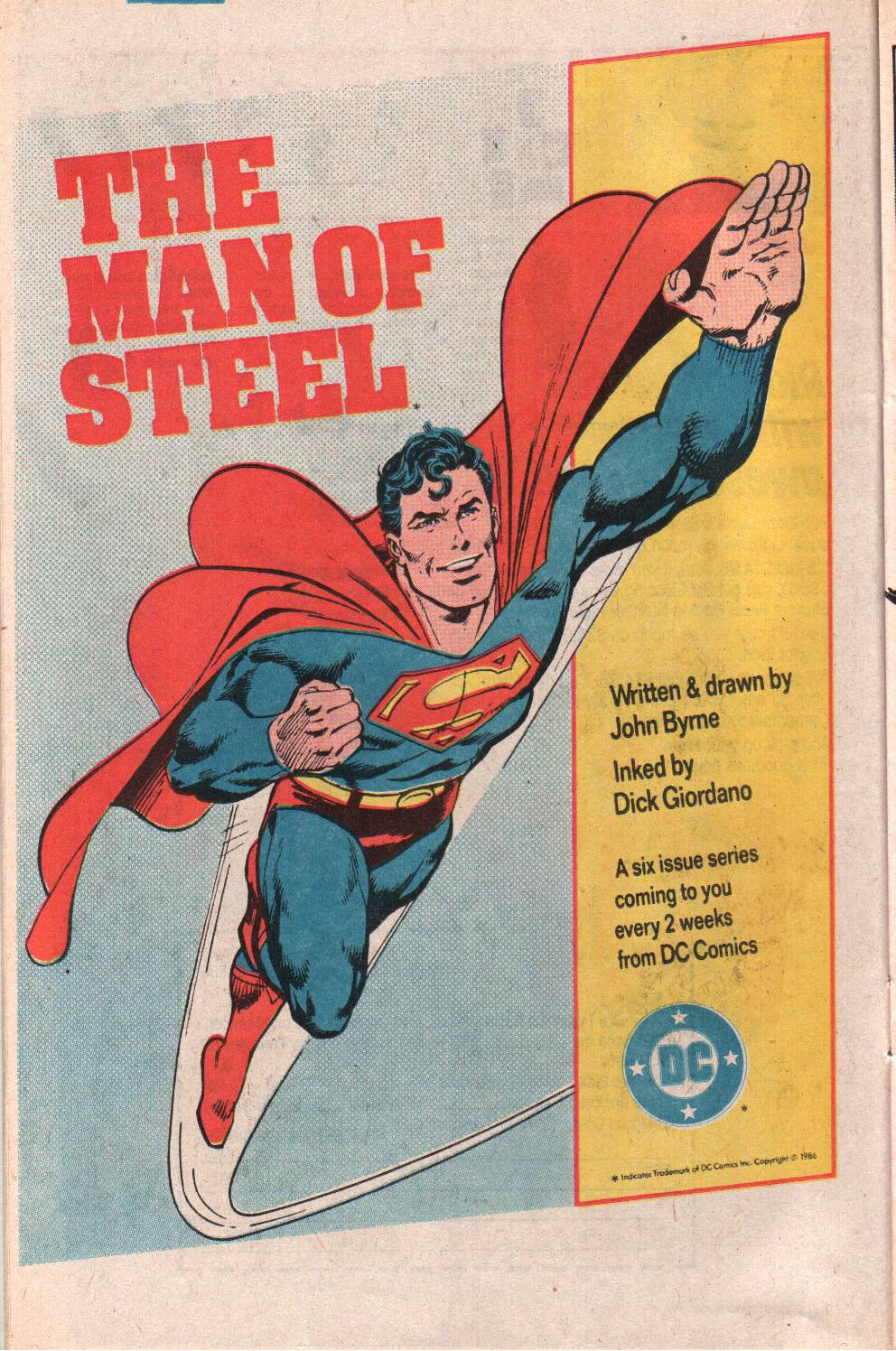 He takes WV out for a spin, then runs into Blunderbore.... 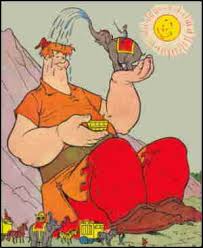 No, no; that's Stumbo. I said Blunderbore... 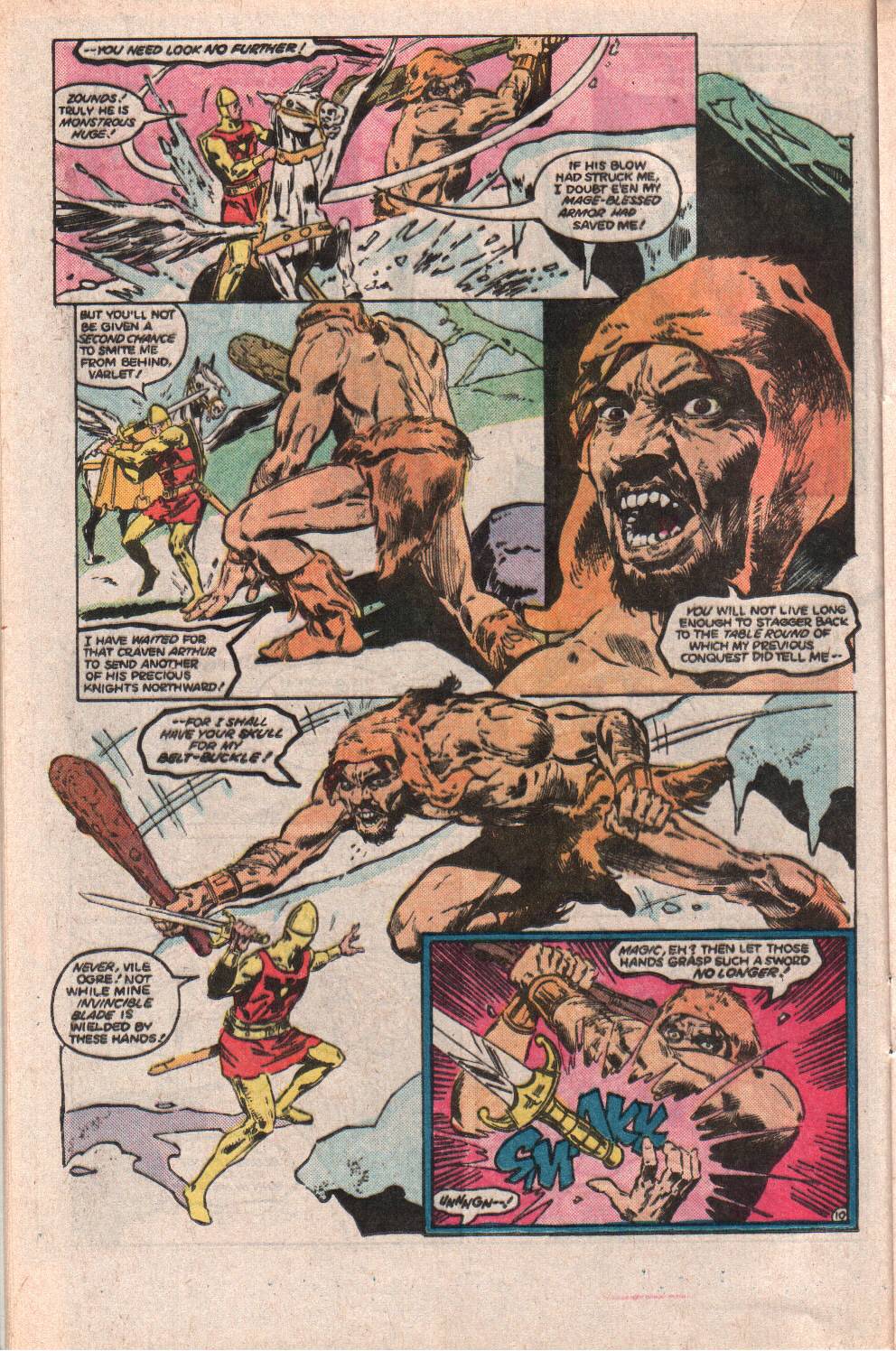 He is pretty POd about Sir Justin invading his 'hood and he calls him out. They fight and Sir Justin sticks hsi shiv into him, but Blunderbore kicks Justin and WV off a cliff. Sir Justin and WV end up encased in ice (it is the Ice Kingdom) and floats off through the centuries, until his ice floe comes ashore, in New England, in the 1940s. He is unfrozen (caveman lawyer), thanks to the dynamite of a Dr Moresby, who takes him to New York and gives him some modern clothes. He shows him around a museum to explain the history and technology he missed... 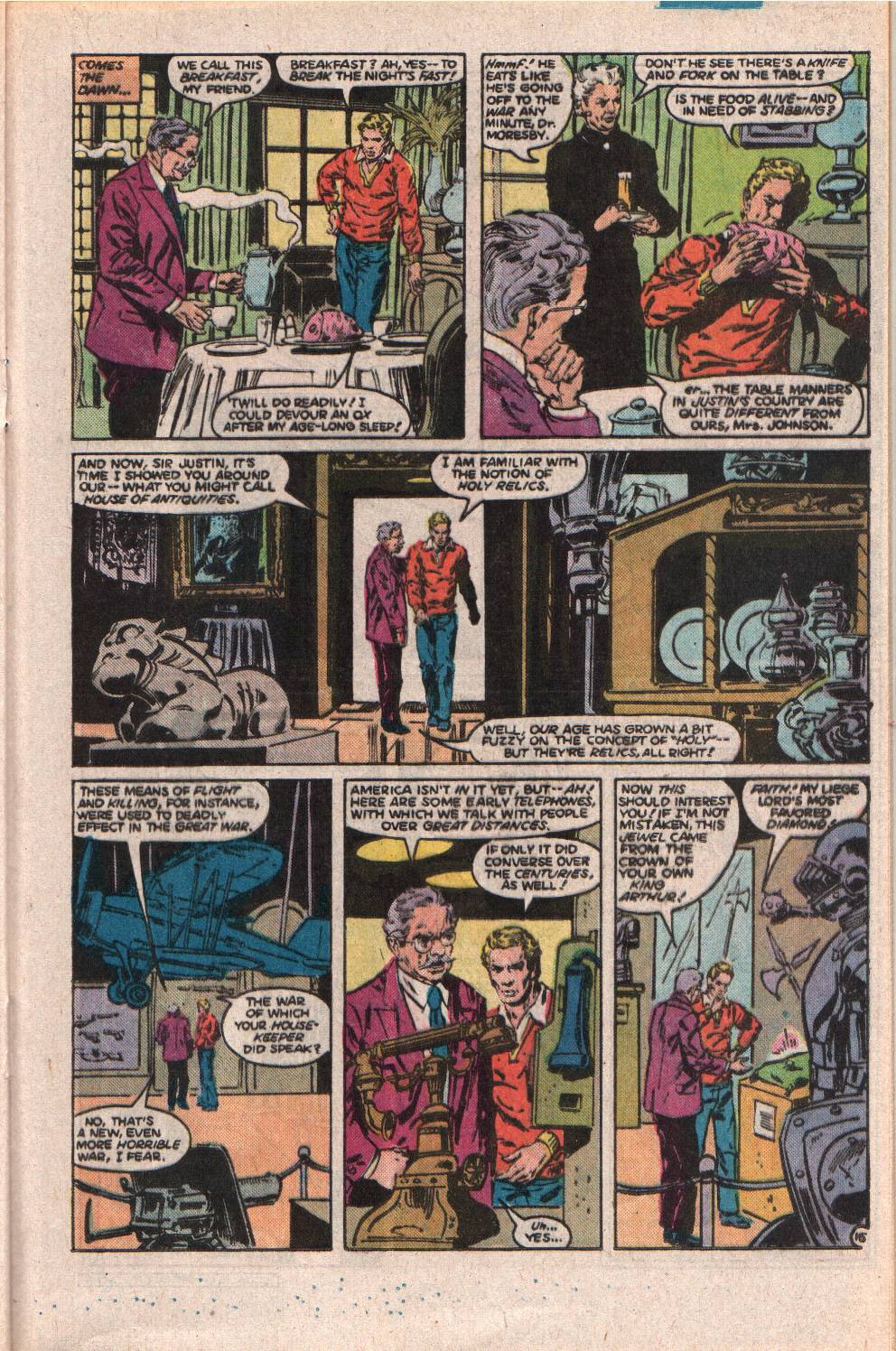 The subject of Arthur and Gunivere comes up and Moresby mentions Guinevere's little dalliance with Lancelot and Sir Justin grabs a sword and is about to go ye royal postal, when a lady turns up and he simmers down. She flirts with him and says that if he is a chivalrous knight, she will have to become a damsel in distress.... 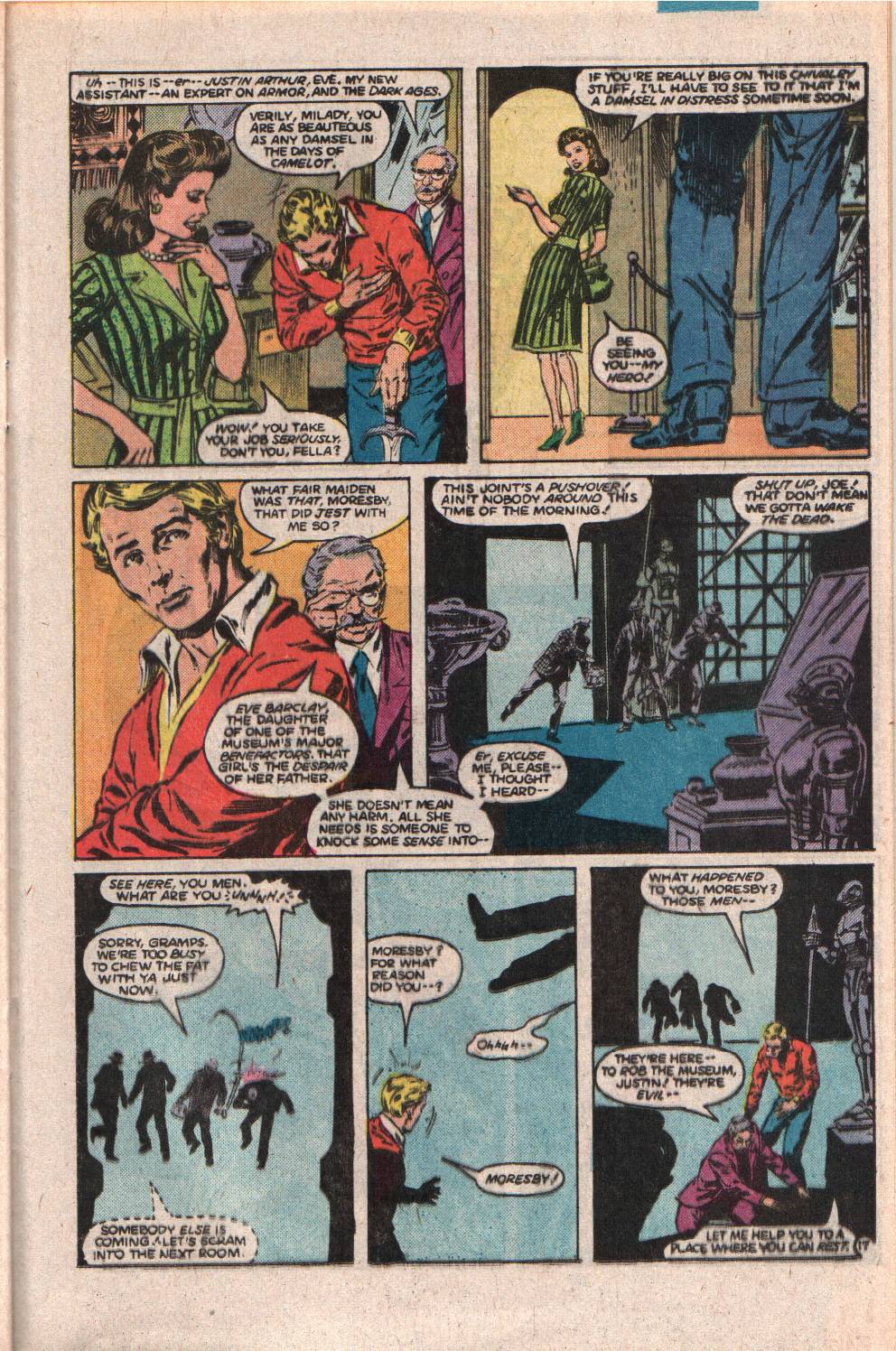 Kinky! Some hoods turn up to rob the place and injure Moresby. Sir Justin dons his armor and brings payback for his homie. 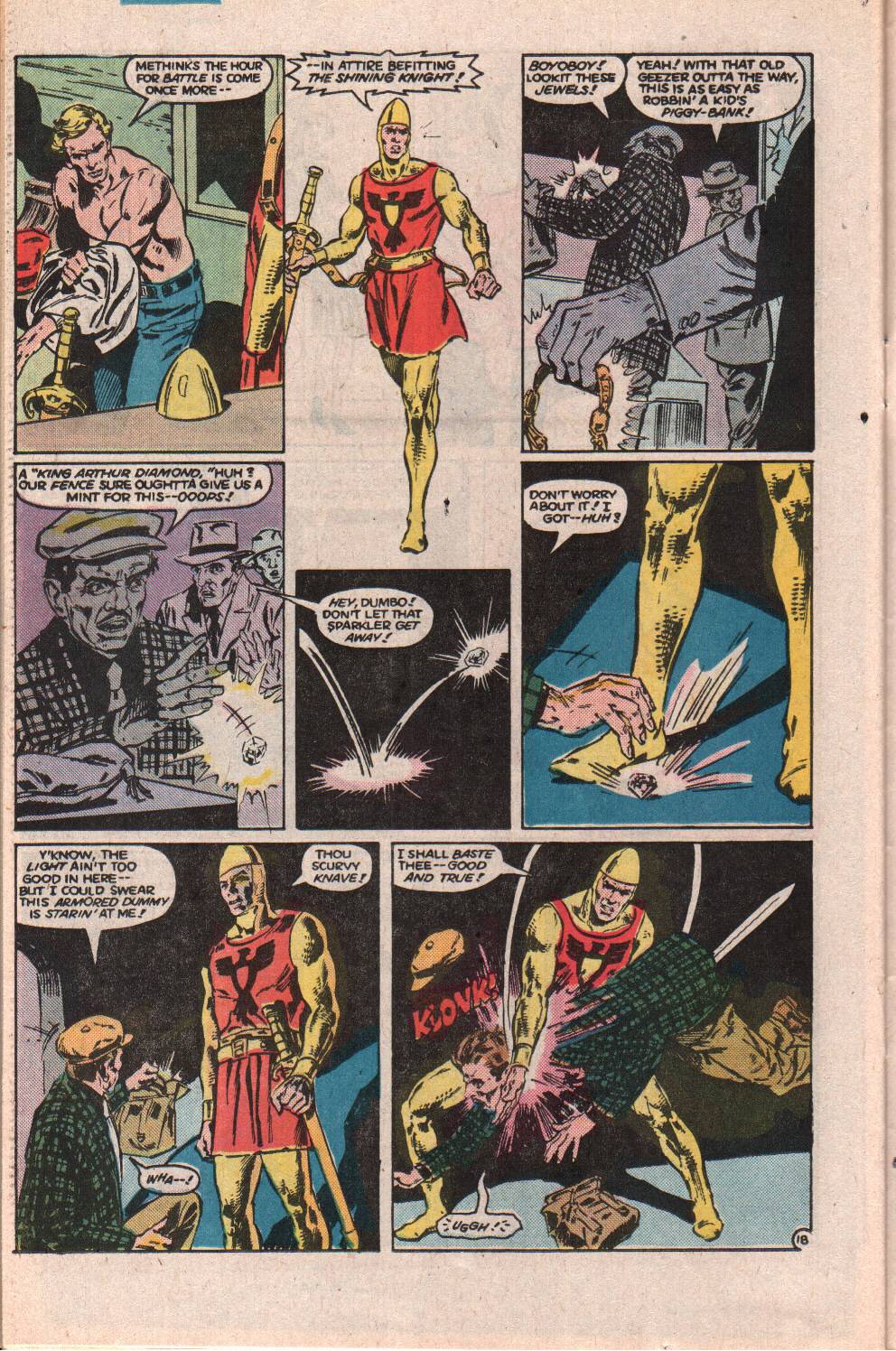 Round Table; represent! They bring guns to a sword fight and he defeats them the Camelot way, then chases after them with his lance. 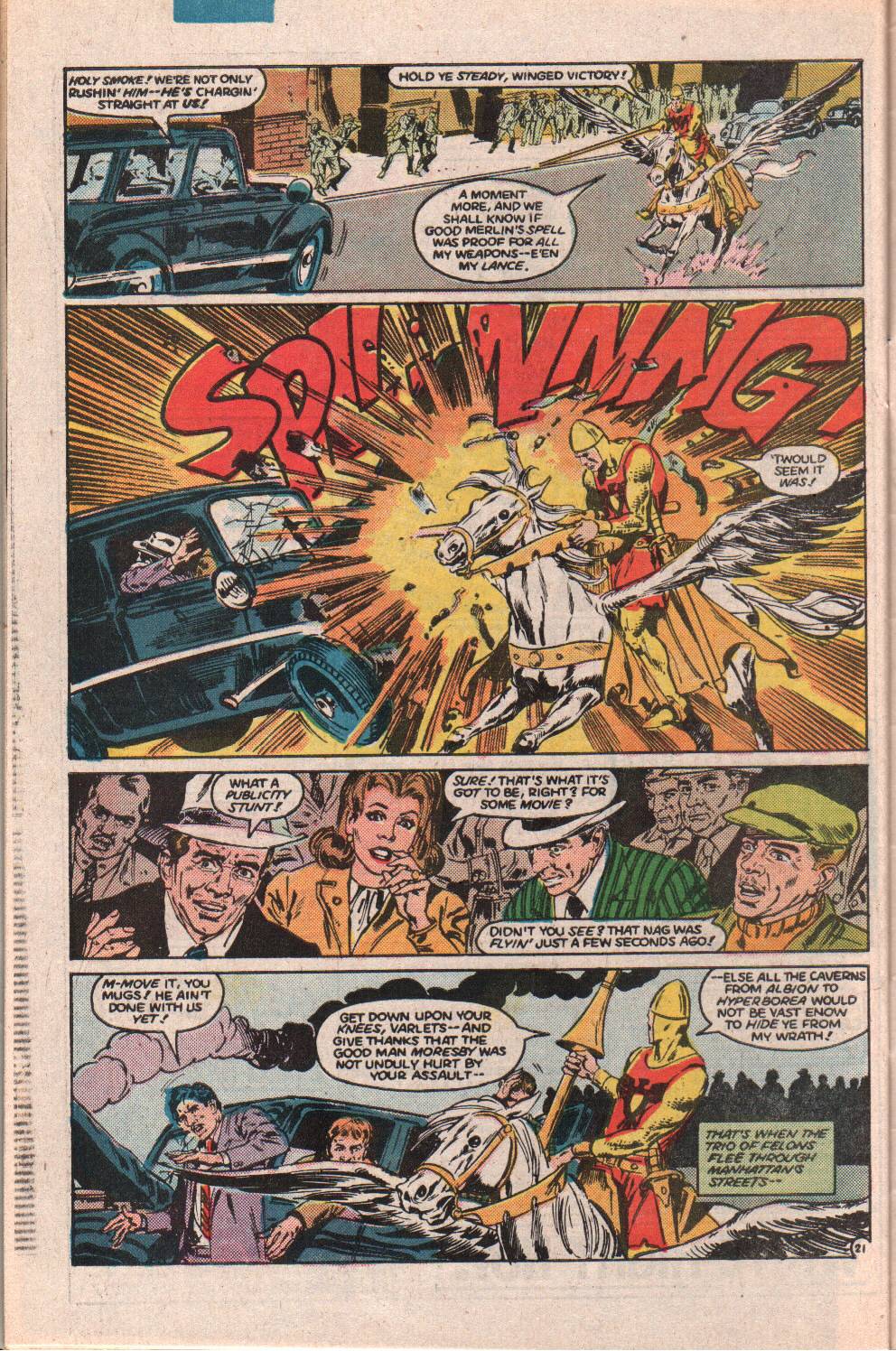 The crooks are rounded up, the lady gushes some more and Sir Justin goes on to become a member of the Seven Soldiers of victory and the All-Star Squadron, as well as market his image for video games... 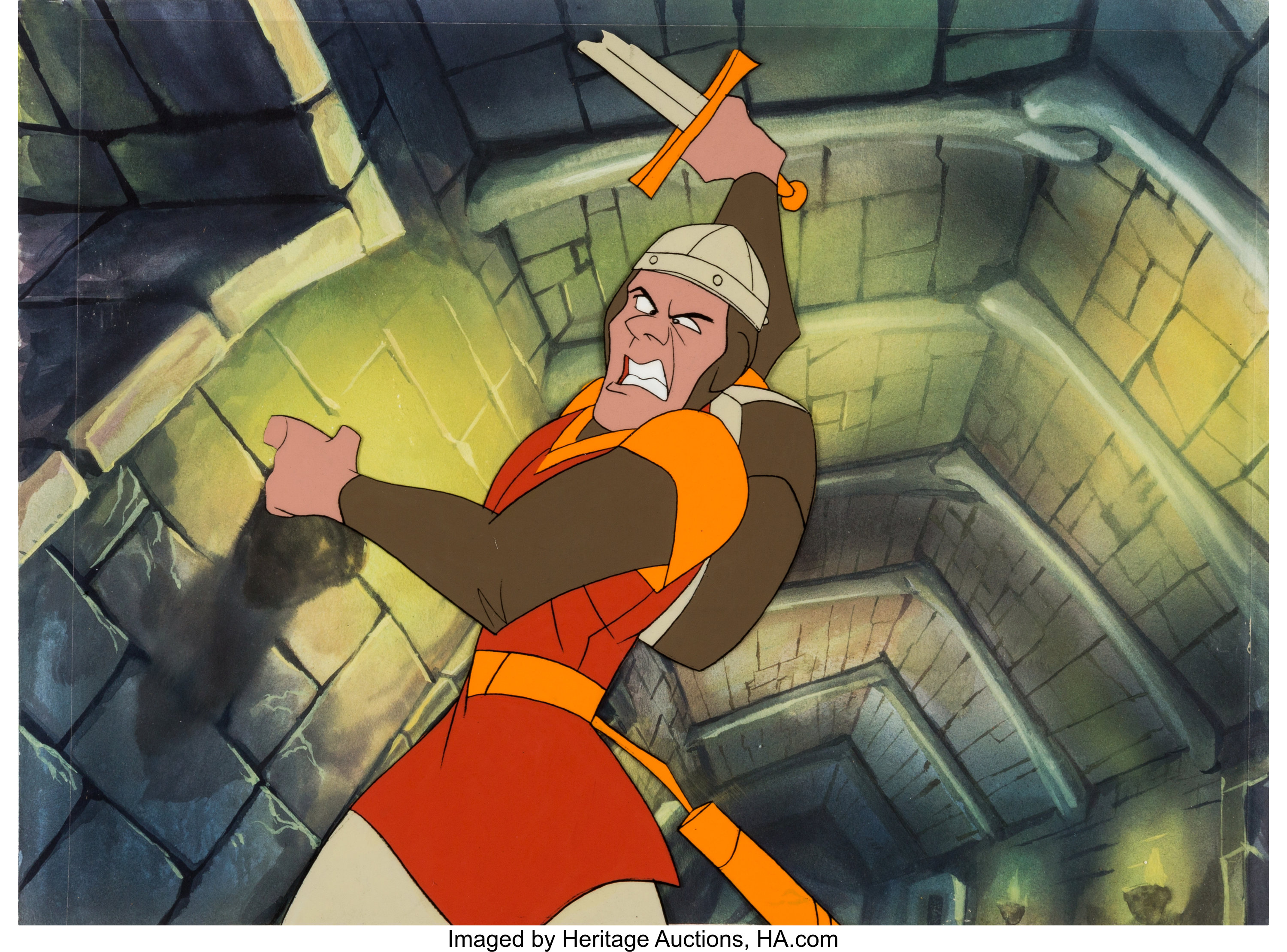 In the letters pages, people talk about the Crisis reboot and how it affects the Squadron. Many suggest replacing Superman with Captain marvel and Roy hints that it isn't possible (well, it was, if you thought about it; but, DC had other ideas). There are suggestions for Tarantula to take over the batman role, a bigger presence from the Freedom Fighters (and Miss America as a stand-in for Wonder Woman, which sort of happens, in relation to Lyta Trevor aka Fury's parents) and an Aussie fan suggests a Soviet hero for the All-Stars, which Roy is wishy-washy about, but says there has been an idea for a Soviet for a while. Thoughts: Fun origin tale and really nice art from Tony DeZuniga, who gets to exercise his inner Hal Foster (whose Prince Valiant was shamelessly ripped off for Shining Knight and just about every other Arthurian or medieval tale in Golden Age comics (and Silver Age, for that matter). The modern lady with the hots for him is actually kind of intriguing and I wouldn't have minded a mini-series to explore their relationship. I think this is also the first time I have seen Sir Justin without his chainmail, revealing him to be blond, which might be a nod to Captain America, even though Sir Justin being frozen in ice predates Steve Rogers having the same done to him. The fish-out-of-water should be more pronounced, though, as Sir Justin comes from a period antiquity, rather than just a couple of decades before. Cap's culture shock would have been relatively minimal, in the 60s, though more pronounced today, as seen in the MCU films. Sir Justin would have been ignorant of the science behind the technological marvels, not to mention Old English and the modern variety are vastly different. So, yeah; more of this would have been fun. Historical Notes: There is little evidence of the existence of a historical "King Arthur;" just a lot of theories as to an inspiration for the legends and ballads. Arthurian lore borrows heavily from other cultures and is generally tweaked to fit the time period. The 9th Century Welsh Historia Brittonum (written in Latin by a Welsh cleric) mentions King Arthur and 12 battles, including the Battle of Badon. However, scholarship suggests that the work is highly suspect, from a historical record perspective, as are the 10th Century Annales Cambriae. In both cases, there is evidence of later editing to add elements to Arthur that are absent from earlier versions. The real cornerstone to things if Geoffrey of Monmouth's 12th Century Historia Regum Brittaniae, which consolidates some of the stories and provides a foundation for later works, such as Thomas Malory's Le Morte D'Arthur, Tennison's Idyll's of the King and TH White's The Once and Future King. The latter has a strong influence of Roy's interpretation, with Merlin depicted as living his life backward, remembering the future (his past) as he suggests Sir Justin's armor is bulletproof. That work was unfinished in 1941, as only the sections of The Sword in the Stone, The Queen of Air and Darkness, and The Ill-Made Knight had been published (the latter only one year before). In fact, the war was a major factor in the rather dark and despondent final section of the collected work, as White became disillusioned by mankind and the horrible death toll of the war, both soldier and civilian. It does not carry the brighter optimism of The Sword in the Stone, written just before the outbreak of the war, in 1938. Foster's Prince Valiant is set in the legendary Arthurian time, though he mixes in 5th Century history, as Britain is plagued by the Saxon invasions, as well as other Viking raiders. Val is the son of a deposed king from the Germanic state of Thule (near Norway), whose people come to live in the fens of Britain. Val has adventures within these marshes and swamps, encountering prehistoric beasts (standing in for dragons and monsters), ogres and the like. He meets Sir Gawain and comes to Camelot, first as Gawain's squire, then as a full-fledged Knight of the Round Table. he later regains his father's kingdom, helps Arthur defeat the Saxons, helps the European kingdoms battle and defeat the Huns, meets Aleta, rescues her after they have been parted and goes on a Viking exploration to North America, where son Arn is born. Foster had a long shadow in comics, influencing adventure strips and, especially, comic book artists, who swiped his poses and layouts and drawing style, both from his run on Tarzan and Prince Valiant. He influenced everyone from Kirby (especially his Demon series) to Wood (who swiped techniques and costuming from the work) and beyond. The basic design for Sir Justin is pretty much Prince Valiant, with golden chain mail, instead of silver, and the winged horse. Another inspiration for the character is Mark Twain's A Connecticut Yankee in King Arthur's Court (one of my favorites of Twain's writing), which tells of a modern man who slips through time to Arthurian times, but with a knowledge of engineering and manufacture and is able to bring some technology to Camelot and becomes Sir Boss and fights against Mordred as his traitorous knights with six-shooters. Shining Knight was kind of forgotten, after the SSV appearance in JLA, apart from Roy's use, until the Stars and STRIPE book, where we learn that Sir Justin had suffered from Amnesia and was the janitor at Blue Valley High School, until his memory is restored. What a waste of a good character! Would have rather seen him in the hands of James Robinson than Geoff Johns. November 1944- The European Theater is a bit quieter. The Allies begin Operation Queen, an attempt to breach the Siegfried Line and enter the Rur Valley, the heart of German industry. The main obstacle wasn't so much the Siegfried Line as the Hurtgen Forest, a dense are where the Germans had established a layered defense. The 1st Army advanced slowly through the dense forest and met stubborn resistance. The 9th army advanced through the Rur plains. Both ends encountered heavy resistance, but had the aid of Allied air supremacy. By December, the forces were in striking range of the Rur dams, when the Germans launched the Ardennes Offensive, aka The Battle of the Bulge. In the East, the Germans had been pushed back in Estonia and were in a precarious position, when operations were launched to evacuate German forces from the archipelago of islands that dominate the sea lane approaches to Helsinki and St Petersburg. British air forces launch Operation Catechism, a bombing raid on Tromso, Norway, where the German battleship Tirpitz was anchored. The Tirpitz was the sister ship of the Bismark, which had wreaked such havoc on British shipping, until it was destroyed in a large scale hunter-killer operation. Previously, the ship had been damaged in an attack by British X-class mini-submarines. 32 Lancaster bombers, armed with 12,000 pound Tallboy bombs (a massive explosive bomb, designed by Barnes Wallis, who helped develop to skipping bombs for the Dam Busters Raid), which were designed to penetrate heavily fortified structures, such as bunkers and casements. The bombers were guided by radio signals from Norwegian agents. Several outposts spotted the bombers, but their course led the Germans to believe they were headed for the Soviet Union. A call to scramble fighters came too late to reach the Tirpitz anchorage, before the attack. Between 9:41 and 9:49 am, the Lancasters released their Tallboys, with multiple hits on the Tirpitz. Damage was extensive and attempts to control flooding could not counter the volume of water coming in. At 9:50, with the ship already at a 30-40 degree list, a magazine turret exploded, causing the list to increase until the ship was on its side and the order to abandon her went out. At 9:52, the ship heeled over and capsized. Over 1,000 men were killed or trapped on the ship. The ship's destruction left the Kriegsmarine without any capital ships to threaten Allied Supply Convoy routes. Much debate has raged about the necessity of the raid, as the Tirpitz had not been repaired since the previous attack with the X subs and Allied convoys had been all but unchallenged for some time. With the loss of France, Germany lost the vital submarine base at La Harve and this seemed more a propaganda exercise than a strategic target. In the US, Franklin Roosevelt was elected to a 4th term, as President of the United States, the only man to ever serve more than two terms. This would spur on efforts that led to the 22nd Amendment to the US Constitution, which placed term limits on the presidency, to 2 terms or a maximum of 10 years. Harry Truman was exempt from the provisions of the Amendment, since he was in office when it was ratified; however, he chose not to seek re-election, in 1952, after a poor performance in the New Hampshire Primary. In the Pacific, the fighting continues in the Philippines, while submarines continue to wreak destruction on the Japanese merchant and naval fleet. Immediately after Pearl harbor, President Roosevelt ordered unrestricted submarine war on all Japanese shipping and attacks began soon after. However, with the loss of the Philippines and threats to Midway and Australia, the submarine effectiveness was low, worsened by poor performance of US torpedoes. By 1943, improvements in tactics and equipment, as well as the seizure of islands as new bases gave greater range to submarine forces and from 1943 until the Japanese surrender, the US submarine fleet launched an relentless attack on Japanese shipping, while also relaying vital intelligence about Japanese fleet movements and interception of troop ships bringing in reinforcements. In November 1944, the USS Queenfish succeeded in sinking the aircraft carrier Akitsu Maru, while the USS Archer sank the Shinano, the largest aircraft carrier built, until the launching of the USS Forrestal. The Shinano remains the largest ship sunk by a submarine. On November 10, at Seedler Harbor, on the island of Manus, in New Guinea, the USS Mount Hood (an ammunition ship) suffered an accidental explosion which destroyed the ship, as 3,800 tons of cargo went off. The resulting explosion destroyed 22 small boats, damaged 36 nearby ships, and killed 432 men and injured another 371. On Nov 27, in Staffordshire, in the UK, a storage depot at RAF Fauld suffers an explosion of between 3,450 and 3,950 tons of ordinance, killing 75 and creating a crater 1200 meters in diameter and 120 meters deep, in the largest non-nuclear explosion in history and the largest on UK soil. 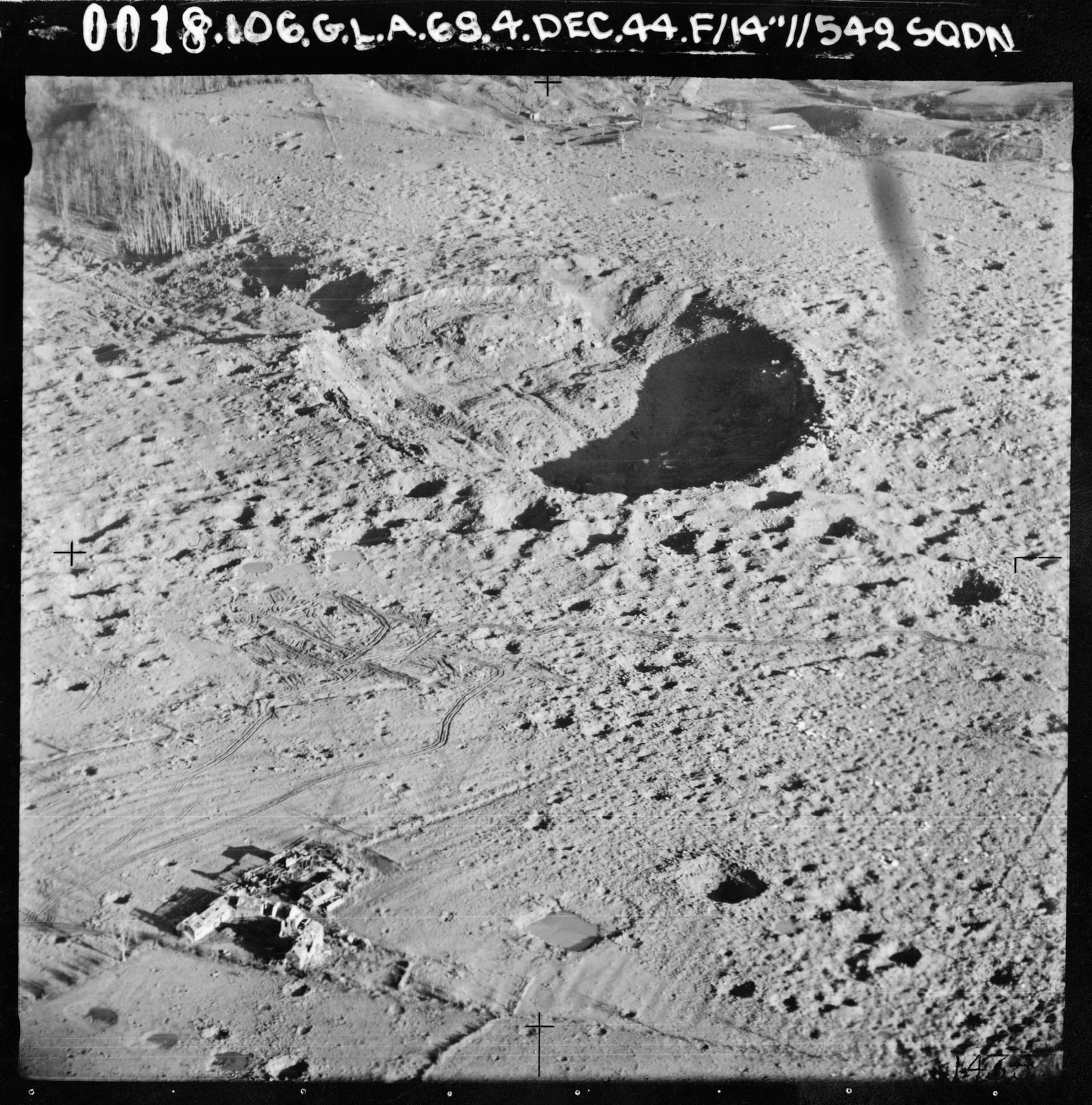
|
|
|
|
Post by codystarbuck on Mar 3, 2021 18:11:14 GMT -5
All-Star Squadron #63 The Origin of Robotman! Um, let's see.....(The Tin Man + Karel Capek's RUR + Adam Link)/Frankenstein = Robotman! Creative Team: Roy Thomas-writer/editor, Michael Bair-pencils, Mike Machlan-inks, Cody Weiss-letters, Carl Gafford-colors Cool; I always liked Michael Bair on Golden Age heroes! Synopsis: We get an excerpt form Dr Robert Crane's journal, which juxtaposes images of Robotman, Brain Wave, the All-Stars and the Delores Winters Ultra-Humanite (or as I like to call her, the Ultra-Sexy Humanite!). We cut to December, 1940, at a Long Island Estate, which looks rather like Dr Zarkov's place, in the Flash Gordon movie...... 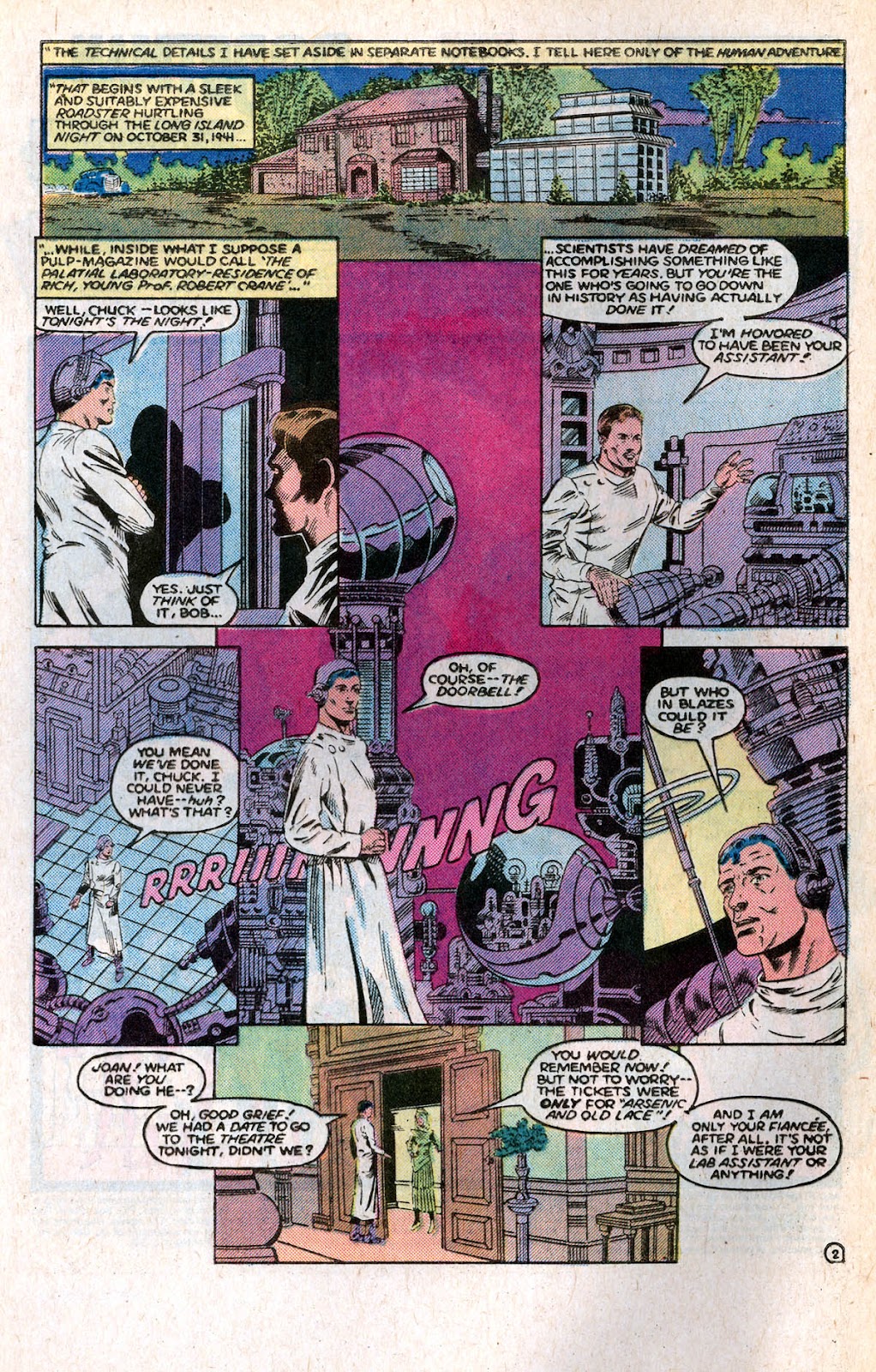 There, Bob Crane is busy befuddling Werner Klemperer and videotaping his sexual escapades. Oh, wait; that was the actor. There, Bob Crane and Chuck Grayson are about to start an experiment that will change science, when they are interrupted by a knock at the door. Since Bob doesn't have an Igor, he has to answer it and it is his fiancee, Joan, wearing a cross between 1940s evening wear and a Star Trek costume... 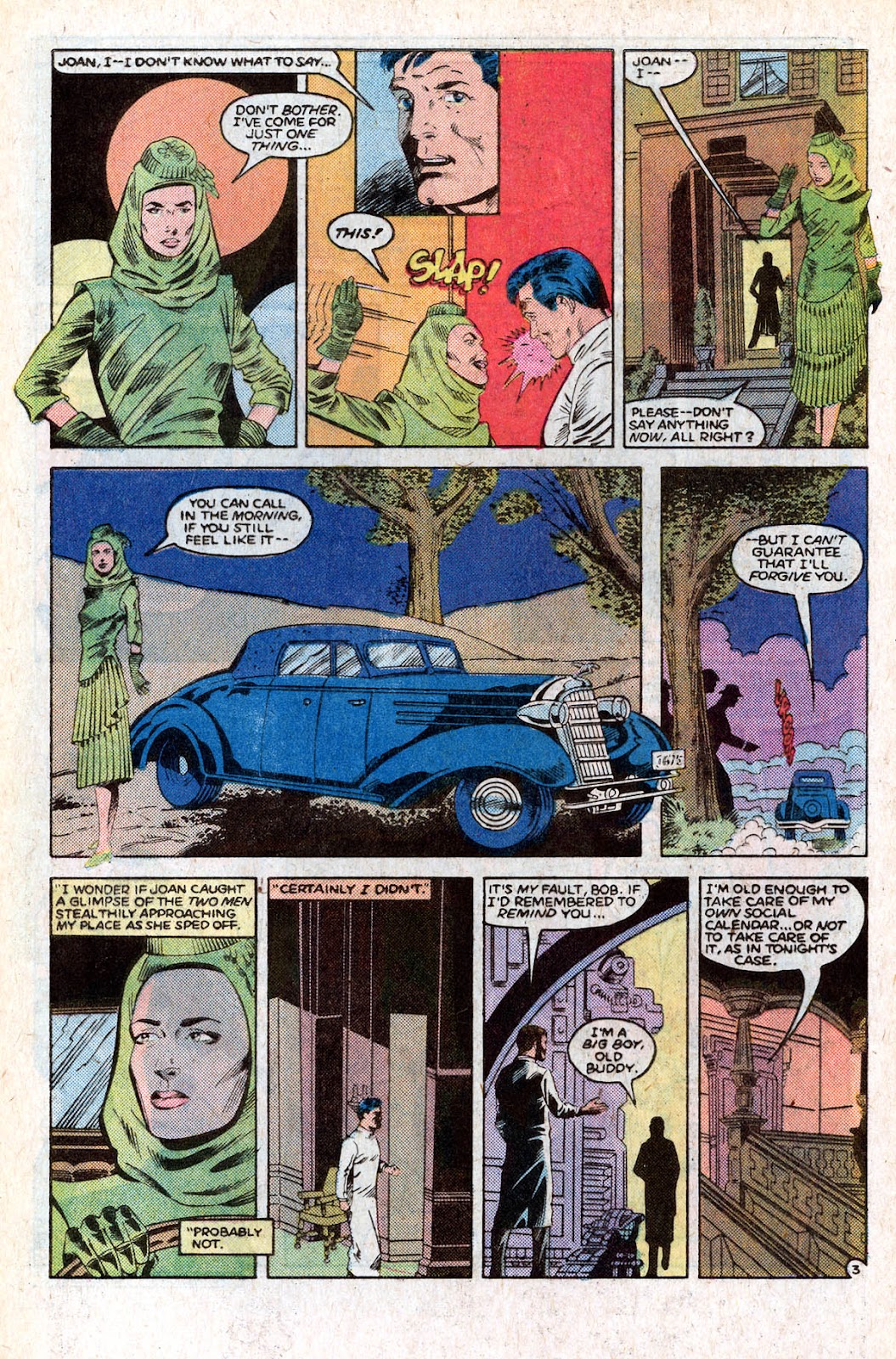 They were supposed to go see Arsenic and Old Lace, at a theater and Bob stood her up for Chuck. She slaps him, then tells him to call her in the morning and drives off. Dames! Who can understand them? Chuck apologizes and says he should have reminded him and Bob tells him not to worry his pretty little head and they get back to manly exercises. The doorbell rings again and it is a pair of hoods, out to steal their new invention, which hasn't even been tested. One of them covers the two chums with his tommy gun, but when the other follows Chuck's eyeline towards a chamber and moves toward it, Bob reacts and gets a chestful of .45 ACP. The hoods pistol whip Chuck and find the robot shell hidden away and realize it is worthless. They take off before the cops show up. Bob has a hazy memory of Chuck picking him up and working quickly to save him... 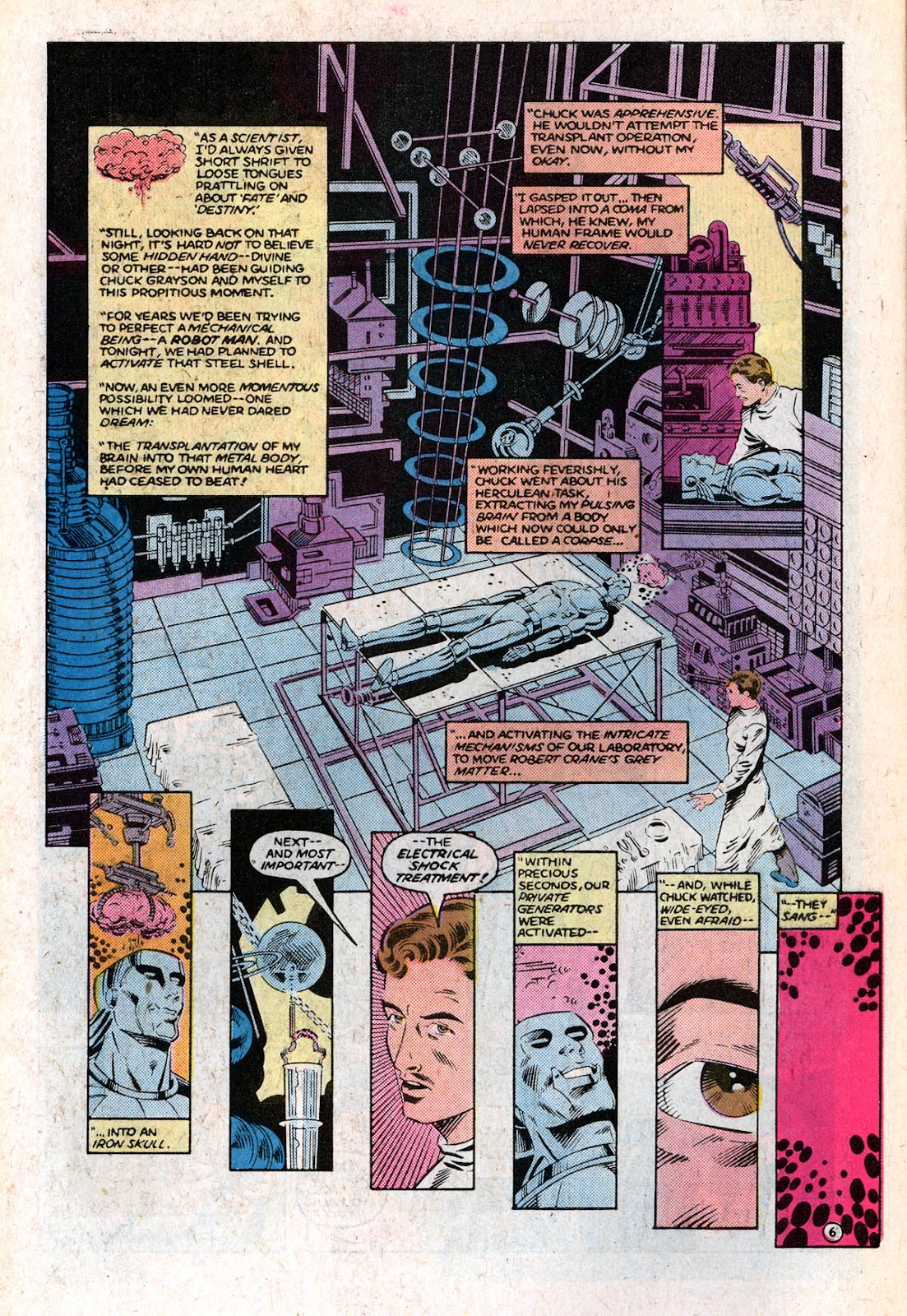 Faster than you can say, "Igor, throw the switch!" electricity jumpstarts the brain and Bob Crain's brain is alive inside the robot body, though how it gets blood and nutrients is never explained. One of the hoods decides to fix Chuck for seeing them and calls the cops to frame him. They come out and find Chuck with a dead man, with no brain and he doesn't believe they will buy his story. He goes off with them. Some hours later, Bob Crane's brain awakens inside the robot. He is elated and looks for Chuck. He tests out his body, then sees himself in a mirror and loses his sluge. 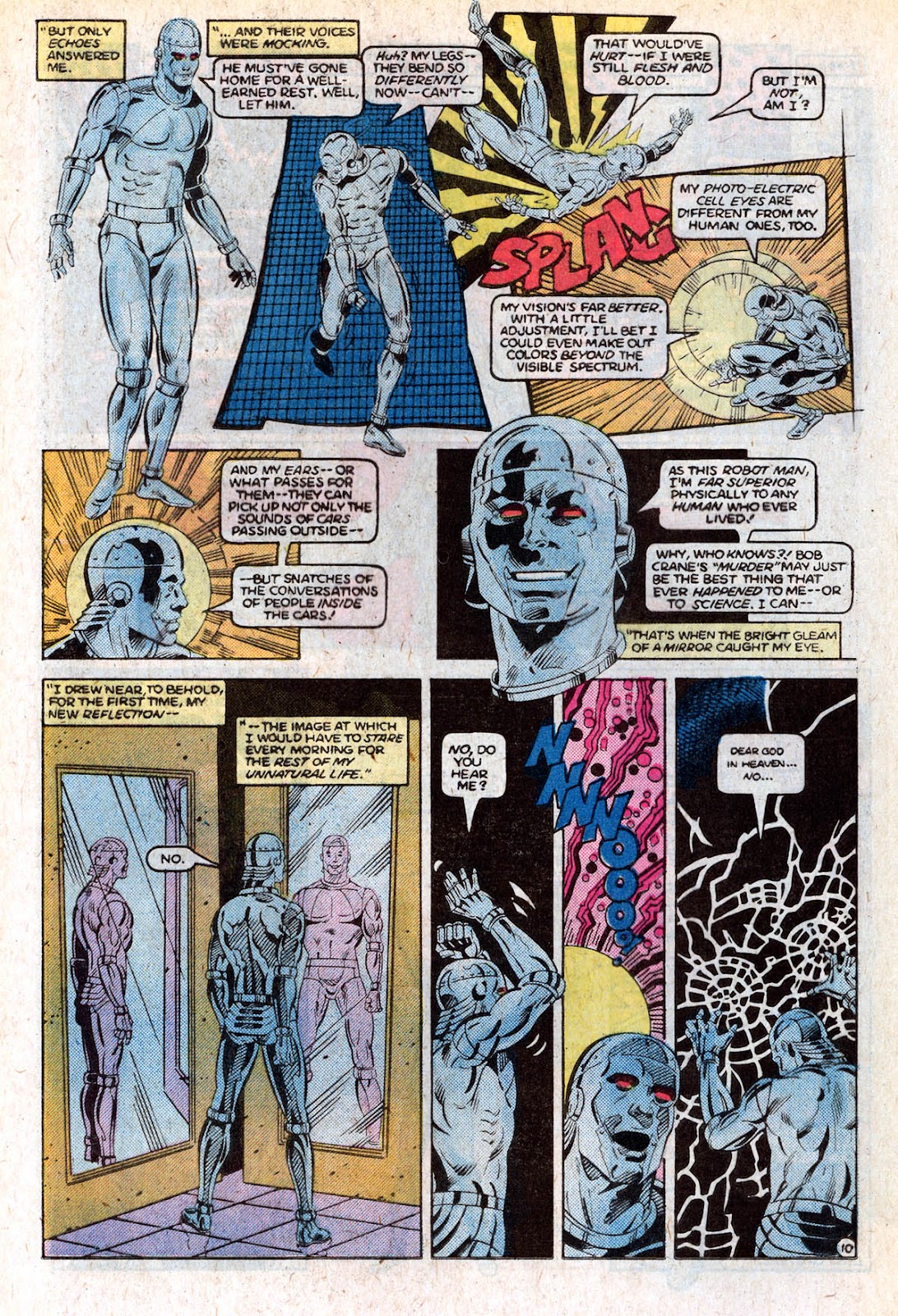 The morning paper is delivered, with Chuck on the front page and Bob goes to his aid. he tries to hail a cab, which speeds away, then a cop pulls a gun on him, since he is obviously not a suburban white guy. He then shoots him several times, which has no effect. Bob runs, but he still isn't used to his new body. He goes back to his lab and creates a fake skin facemask, before Darkman did it... 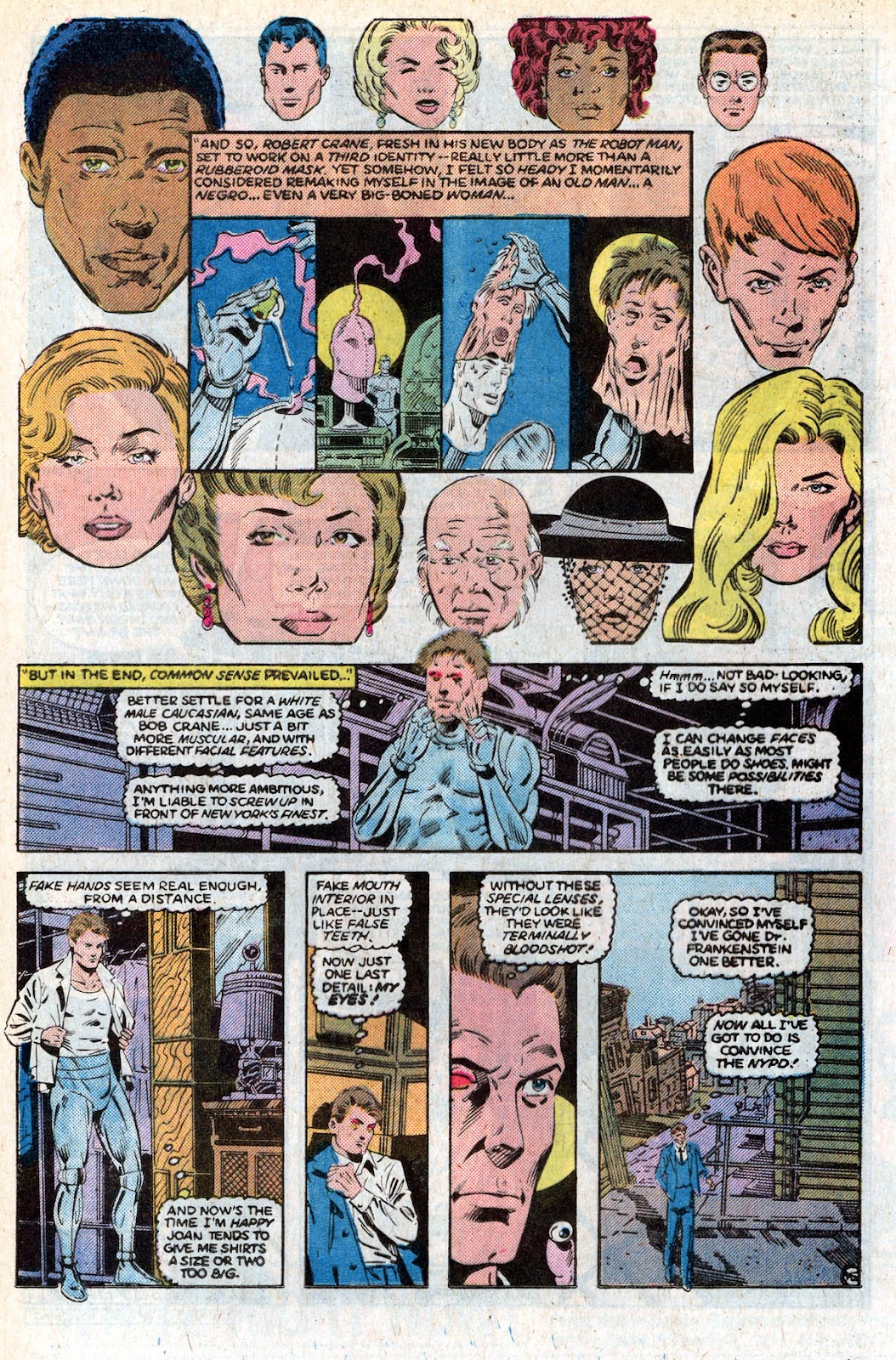 He goes down to the police station, as Paul Dennis. He lets Chuck know that he will get him out, then attends his own funeral and pretends to be a friend of the decease, with Joan. he then goes hunting for the real killers. After slapping some people around, he locates the man and drags him to the governor's mansion, to get a pardon for Chuck.... 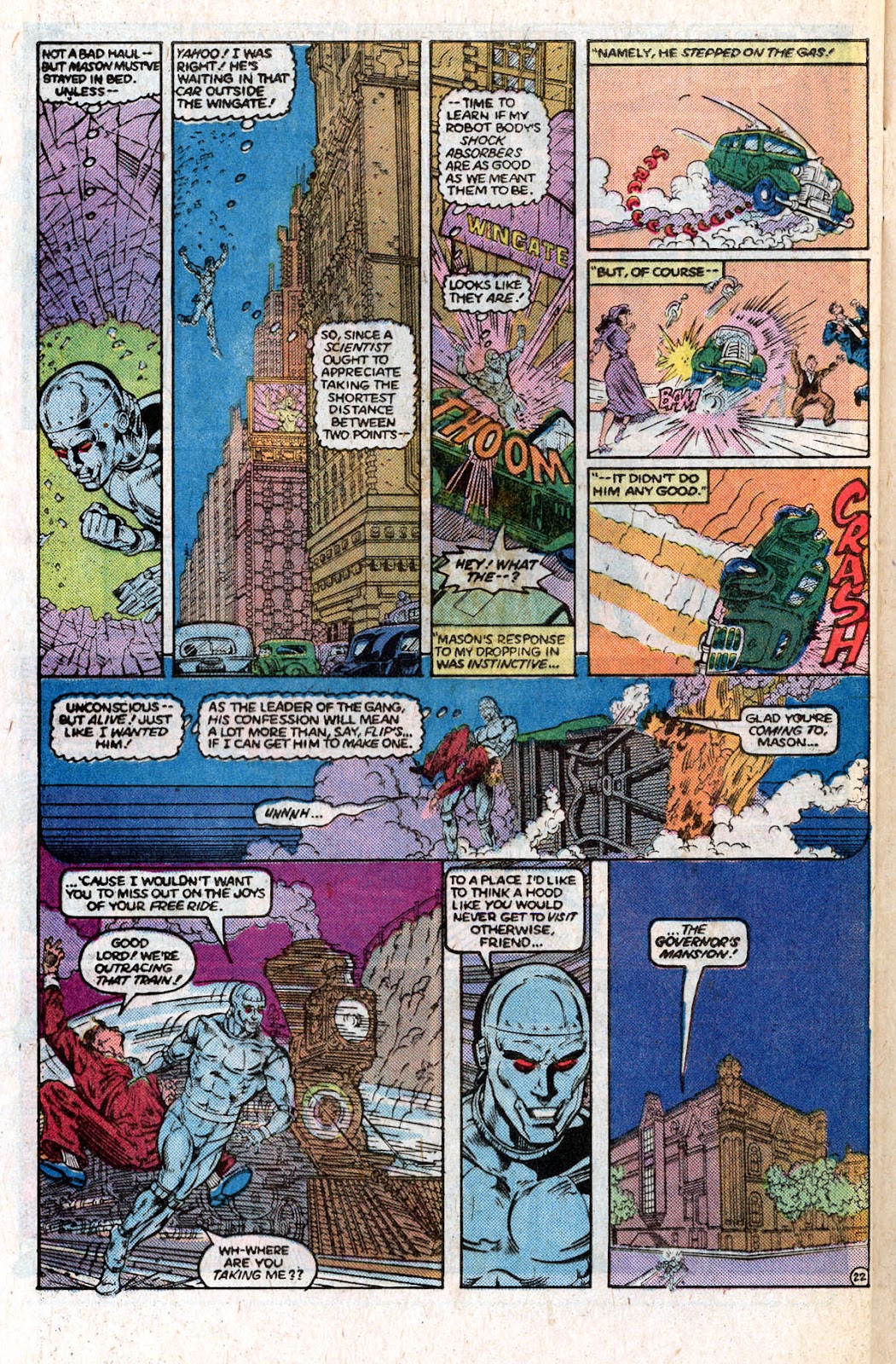 The man confesses and Chuck is released and then Robotman goes on to join the All-Stars. Thoughts: Robotman actually debuted in 1942; but, Roy finessed his origin date a bit to have him around for Pearl harbor and the founding of the All-Stars, as he remarks on the letters page. He also remarks that the "Whatever Happened to..." back-up series, in DC Comics Presents, provided an ending to Robotman, as his brain is placed inside Chuck Grayson's aged body, clearing the way for Cliff Steel to be the only Robotman running around. The Frankenstein connection is made more obvious by copying the electrical equipment seen in the Universal film, as well as a couple of line references. The face is pretty much taken from the Tin Man and Siegel and Shuster were very familiar with Earl and Otto (EandO) Binder's Adam Link, a self-aware robot who appeared in a series of adventures in Amazing Stories, between 1939 and 1942. Roy certainly is and has Crane mention pulp magazines in his narration, which is probably a nod. Karel Capek was a Czech writer who created the play RUR (Rossum's Universal Robots), about a factory that creates artificial people, from organic material (more like the Replicants in Blade Runner), who end up rebelling against their human masters. It popularized the term "robot," derived from the Czech robota, a term for enforced slave labor. The opening splash page makes reference to Ultra-Sexy Humanite and Brain Wave because of the theme of brain swapping, though Brain Wave just mentally controls people, while Humanite swapped his brain into Delores Winters' body and then a white gorilla (and Tex Thompson, in the Golden Age mini-series). Bair is in fine form here, capturing the period and making the dramatic work, while keeping the story dynamic. Nice to have Mike Machlan back on the inking, even if it isn't over Jerry Ordway pencils. Bair would become a favorite of Roy and work on Infinity Inc and some of the Golden Age Secret Origins stories. His work had a nice moody look, with some similarities to Pat Broderick. Historical Notes: At a later moment in the story, Roy name drops the siege of Sevastopol, during Operation Barbarossa, the invasion of the USSR and the sinking of the USS Reuben James. Sevastopol is a key port on the Crimean Peninsula, one of Russia's key shipping centers. It was heavily fortified, with the Maxim Gorky Fortress, as a key defensive point. It was a underground gun emplacement, with twin 12 inch guns that controlled the entrance to the harbor.  The Germans bombarded it with the railway gun Schwerer Gustav.... 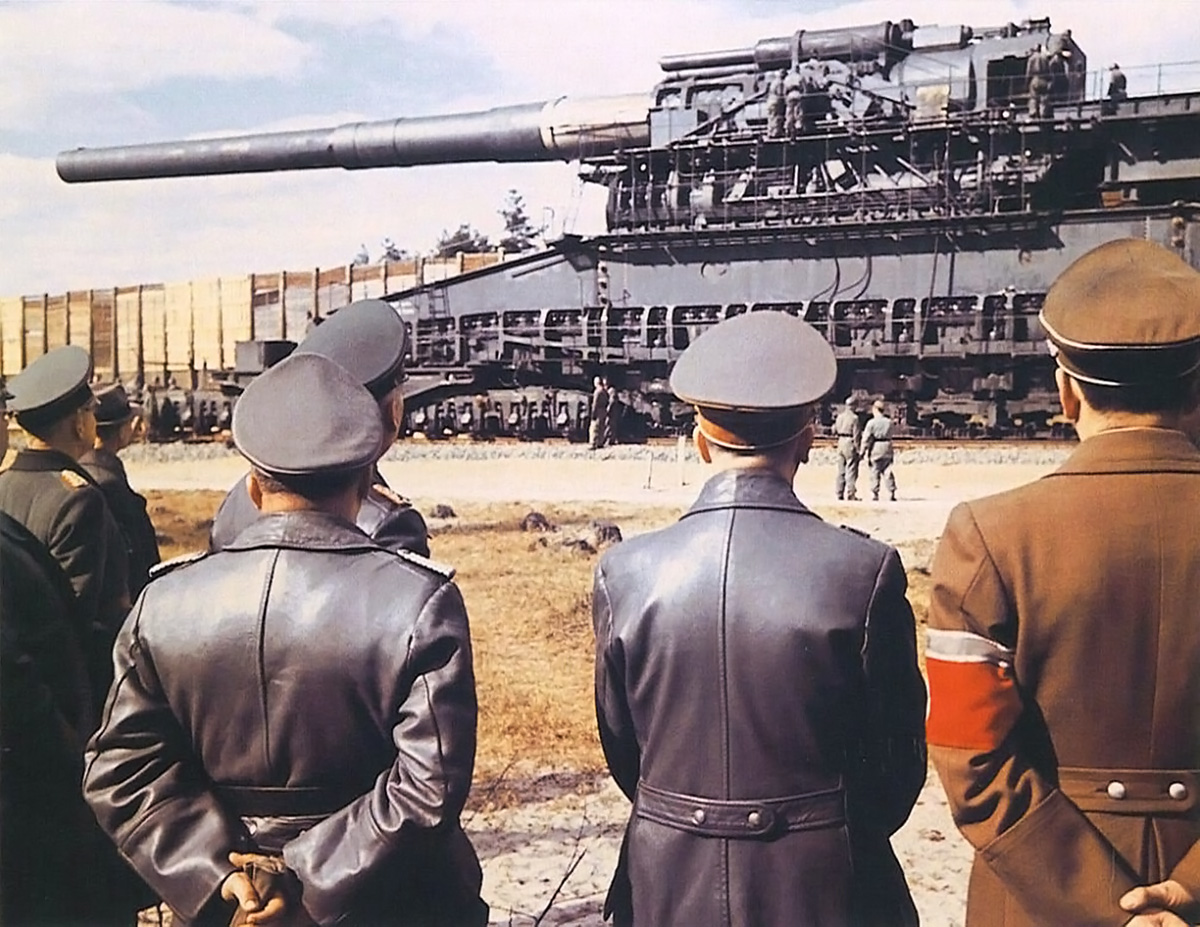 which had been designed to bombard the Maginot Line. they also deployed the massive Karl-Gerat siege mortars, which fired 600 mm rounds... 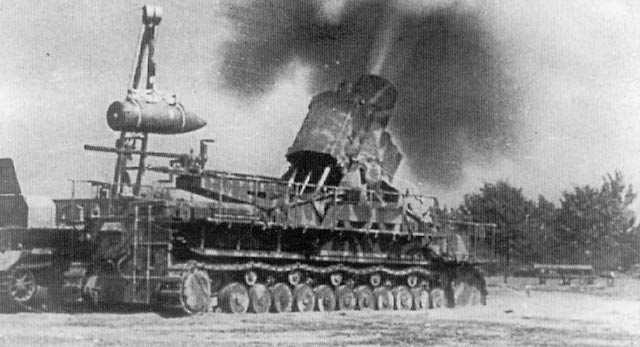 After 250 days of fighting, the fortress and the city fell to Germany and her Italian and Romanian allies. It was liberated in May, 1944, by the Red Army. The USS Reuben James was a Clemson-class destroyer, of WW1 vintage. it was assigned to convoy escort duty, in 1941, ferrying Lend Lease supplies to the UK. On Oct 23, it was torpedoed off the coast of Iceland, with only 44 survivors, out of a crew of 143, there were only 44 survivors. The US was officially neutral and this was an act of war on the part of Germany; but, isolationist sentiment was still strong and opposition to the US involvement with Great Britain suggested that this was reason enough to stay out of the war. That would change in less than 2 months, with the deliberate attack on Pearl Harbor. Woody Guthrie wrote the song, "The Sinking of the Reuben James," commemorating the event and the incident was used in an episode of Foyle's War. A Destroyer Escort was christened the Reuben James, during the war and a later Perry-Class guided missile frigate (FFG) carried the name. That ship was used on Tom Clancy's Red Storm Rising and appears in the film The Hunt For Red October (though it was commissioned after the timeframe of the film). The name refers to a boatswain's mate, Reuben James, who distinguished himself during the Barbary War, where the US fought against Mediterranean pirates. December 1944: In the Pacific, Allied forces land on Mindoro, in the Philippines. The Japanese garrison consisted of only about 1200 men and some 10,000 US troops landed there, along with Filipino guerillas and concluded the operation in 3 days. The island was sought as an airbase for ground aircraft to support landings on Luzon, in the near future, as well as a staging base for such landings. The only significant Japanese defense consisted of kamikaze attacks on naval vessels, during the landings. On December 15, a USAAF aircraft disappeared over the English Channel, while flying in heavy fog. Among the missing was band leader Glen Miller. It was presumed that the aircraft went down somewhere over the Channel, with no survivors. In newly liberated Greece, fighting breaks out between communist and nationalist forces, breaking down into full scale civil war. Guerrilla units on both sides had fought the Nazi occupation; but, both sought to dominate post-War Greece. Eventually, they were battling each other and a civil war waged until 1949, when the communists were defeated. The US supported the Greeks militarily and politically, while the communists were supported by Yugoslavia. They had appealed to the USSR; but, Stalin stuck by his agreement with the Allies not to support the Greek communists. This also pushed Tito and Stalin further apart, establishing the rocky relationship between the two communist powers, even within the Warsaw Pact. The lack of material support from the USSR did much to weaken the communist forces. Continued divides between the ultra-conservative government and the Left led to the murder of a Leftist politician, Gregoris Lambrakis, which inspired Cista Gravas' film Z. That incident occured in 1963 and led to further battles, as courts sought to bring the murderers to justice, leading to a full-scale military coup, in 1967. That regime remained in power until 1974. Many Greeks emigrated to escape the fighting and subsequent economic and political turmoil. Great Britain stood down the Home Guard, believing that the threat to the UK was over. However, on December 24, Heinkel He-111 bombers launched V-1 flying bombs in an attack on Manchester, which killed 42 and injured over 100 in Oldham (just north of the city of Manchester). The Allies were settling into stagnant lines along the German border, expecting things to go quiet for Christmas. However, on December 16, the Wehrmacht and the Waffen SS launched Operation Watch on the Rhine, aka the Ardennes Offensive, aka The Battle of the Bulge.  Supply issues continued to bog down the Allied advance, which greatly contributed to the static nature of fighting, at the time. The Germans saw an opening for a large scale counter offensive, with the objective to push towards Antwerp, retake the port, and cut off and isolate British forces in the north from the US Army and the supply lines. The attack was carried out through the Ardennes Forest, just as the Germans had invaded the low countries, taking advantage of weather and cloud cover to interrupt Allied air operations, which had been constantly attacking German vehicles and rail lines. Large flood lights were used to bounce the lightbeams off the low cloud cover and provide illumination for rapid movement of armored units and support troops. The initial assault achieved the element of surprise and punched a hole in the Allied lines, with large amounts of prisoners captured. Many were young replacements who had never been in battle, including a young private named Kurt Vonnegut. Vonnegut was captured, along with 6,000 others , and ended up in POW camps, including at Dresden, where he witnessed the Allied firebombing of the city. These events would inform his most noted work, Slaughterhouse Five. Hitler committed some of his best units to the offensive, which added to the early success, but which would cost them dearly, in the end. Allied troops abandoned equipment on site and fled in the face or armored attacks. However, at various points, good leaders and battle-hardened veterans began putting up stubborn defenses and the German advance began to weaken. Troops were rushed to cover key areas and hold until reinforcements could arrive. The 101st, along with other units, was assigned to defend the city of Bastogne, which was centered near a key section of crossroads. Forces were deployed around and held off a German siege, beginning on December 20. Casualties were high and air support non-existent. Food, medicine and ammo were in short supply and many of the troops were rushed off to their positions without winter gear. Frostbite was a common cause of casualties, as much as battle wounds. The Germans had Bastogne cut off and sent a message, asking for their surrender. Gen Anthony McAulife sent the most famous and most succinct answer in the history of warfare...... "To the German Commander: NUTS! The American Commander" One of the units defending Bastogne was the 333rd Field Artillery battalion, an African-American unit. The were attached to the 106th Division, tasked to hold a 26 mile stretch of territory, when Army doctrine stated a division should be able to contain a 5 mile front. The 333rd suffered casualties of about 50%, and were reduced to 10 rounds of ammo per day, but they held their ground against German assaults, winning a Presidential Unit Citation. 11 of their officers were cut off during an attack and were massacred by the SS, on sight. Eventually, a break in cloud cover allowed air drops over the city, providing much needed food, ammo and medicines and allowed fighters to target German armor and support units. Finally, on December 26, the vanguard of Gen Patton's 3rd Army reached Bastogne, lifting the siege. However, the 101st was not relieved and continued fighting in the area, against the cream of the German army, until they were relieved on January 18, 1945. During the fighting, the Germans employed special operations units, under SS Obersturmbannfuhrer Otto Skorzeny, the man who led the rescue of Mussolini from the Italian forces. Their job was to infiltrate Allied lines, dressed as American soldiers and commit acts of sabotage and sow confusion to disrupt the Allied reaction to the German offensive. For the most part, their greatest success was in creating rampant paranoia in US troops, leading to challenges to identity, with questions about baseball teams and other parts of American culture. This led to Brig Gen Bruce Clark being held at gunpoint, after incorrectly stating that the Chicago Cubs were in the American League and a captain spending a week in detention after he was caught wearing German boots. Gen Omar Bradley was challenged several times at checkpoints. One notorious affair during the fighting was the Massacre at Malmedy. On Dec 17, elements of Kampfgruppe Peiper, under command of SS Obersturmbannfuhrer Joachim Peiper, captured a fuel depot at Bullingen. Several dozen American soldiers, who had been taken prisoner, were murdered, under orders. Later, at the Baugnez crossroads, his forces encountered elements of the 285th Field Artillery Observation Battalion, in a 30-vehicle convoy. It opened fire but the Americans were armed only with rifles and surrendered to the SS. Prisoners were rounded up and SS machine gunners opened fire on about 120 men. Some attempted to flee and others dropped to the ground, pretending to be dead. Most were shot where they stood. A few survivors made it to the nearby town of Malmedy and were sheltered by Belgian civilians. Eventually, 43 survivors were found. The massacre served to add fire to US response as there were reprisal shootings of German prisoners and there were instances of unofficial orders that no SS prisoners were to be taken. Peiper and his subordinates stood trial, in 1946, in the sight of Dachau, for the actions of their men, at Malmedy. Peiper was sentenced to death, along with 42 others, but the execution was never carried out. Subsequent political situations in the US and Germany led to examination of the interrogation and trial and sentences were commuted, including Peiper's. He was released from prison in 1956, thanks in part to the SS network of influence in politics and industry. He eventually settled in France, under his own name, but was discovered by a communist journalist who found his SS file in the Gestapo archives. His presence in the village where he lived was revealed; and, on Bastille Day, in 1976, his home was attacked by persons unknown and his charred body was found next to a .22 cal rifle and a pistol. Wayne Vansant wrote and drew the comic Battlegroup Peiper, for Caliber Comics, detailing Peiper and his forces during the Ardennes Offensive and the subsequent trials. It is a fairly balanced account, though it ignores his history on the Eastern Front and the Liebstandarte SS Adolf Hitler, the SS division that supplied Hitler's personal bodyguard and had a long history of atrocities on the Eastern Front and in Italy. The series seems to try to absolve Peiper for the blame of the actions of his troops, pointing out some of his recorded orders that were contrary to the massacres, but ignoring his responsibility for the conduct of his forces, as their commander. Peiper had served as an aide to Himmler and was well informed of activities within the "Final Solution," as well as reprisals for the deaths of SS soldiers. I met Vansant at a convention in Atlanta, where he was engaged in conversation by two military reenactment participants, decked out in German uniform, who seemed to have a deep affinity for the SS. Vansant struck me as someone interested in military history, who sought to tell a story in comics, but could have used some more resources. These guys struck me as armchair wannabe Nazis and I quickly excused myself and went off to other parts of the convention. The Allies continued battling to push the Germans back to where the lines had been prior to the offensive, into January 1945.
|
|
|
|
Post by codystarbuck on Mar 9, 2021 17:18:02 GMT -5
All-Star Squadron #64 The funny pages just got serious! Creative Team: Roy Thomas-writer/editor, Wayne Boring-pencils, Tony DeZuniga-inks, Cody Weiss-letters, Carl Gafford-colors That's right; Wayne "Superman" Boring! DC was actually giving back, a bit, in this period. Adapted from a story by Jerry Siegel and John Sikela, which means more fan fiction from Roy. Synopsis: Johnny Quick is reading the funny pages, especially Detective Craig (Dick Tracy?) 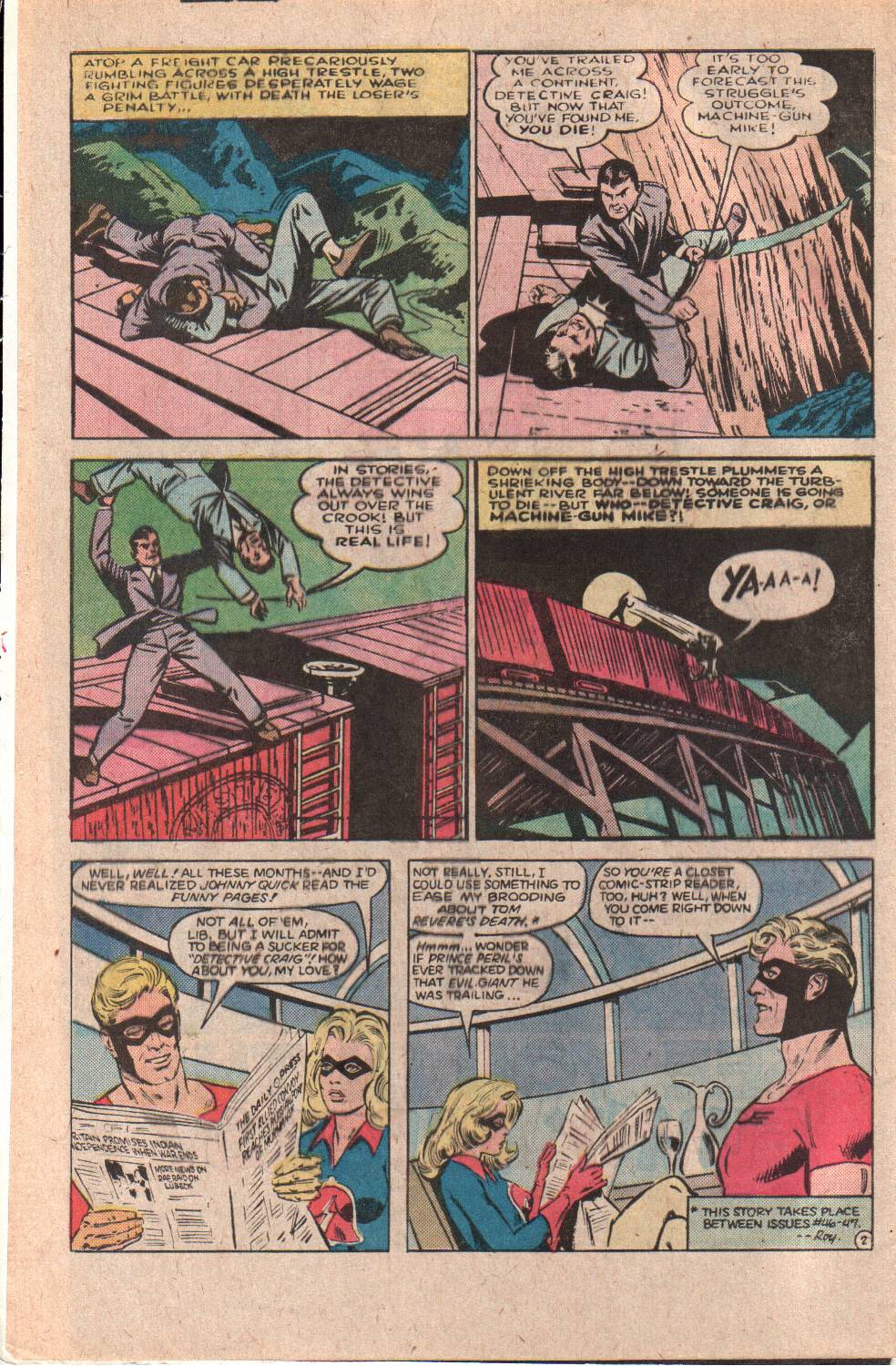 Johnny and Libby (who aren't married yet, as this is set between issues 46 and 47) get mushy and, in Metropolis, the giant Torgo, from "Prince Peril" turns up, causing total chaos. 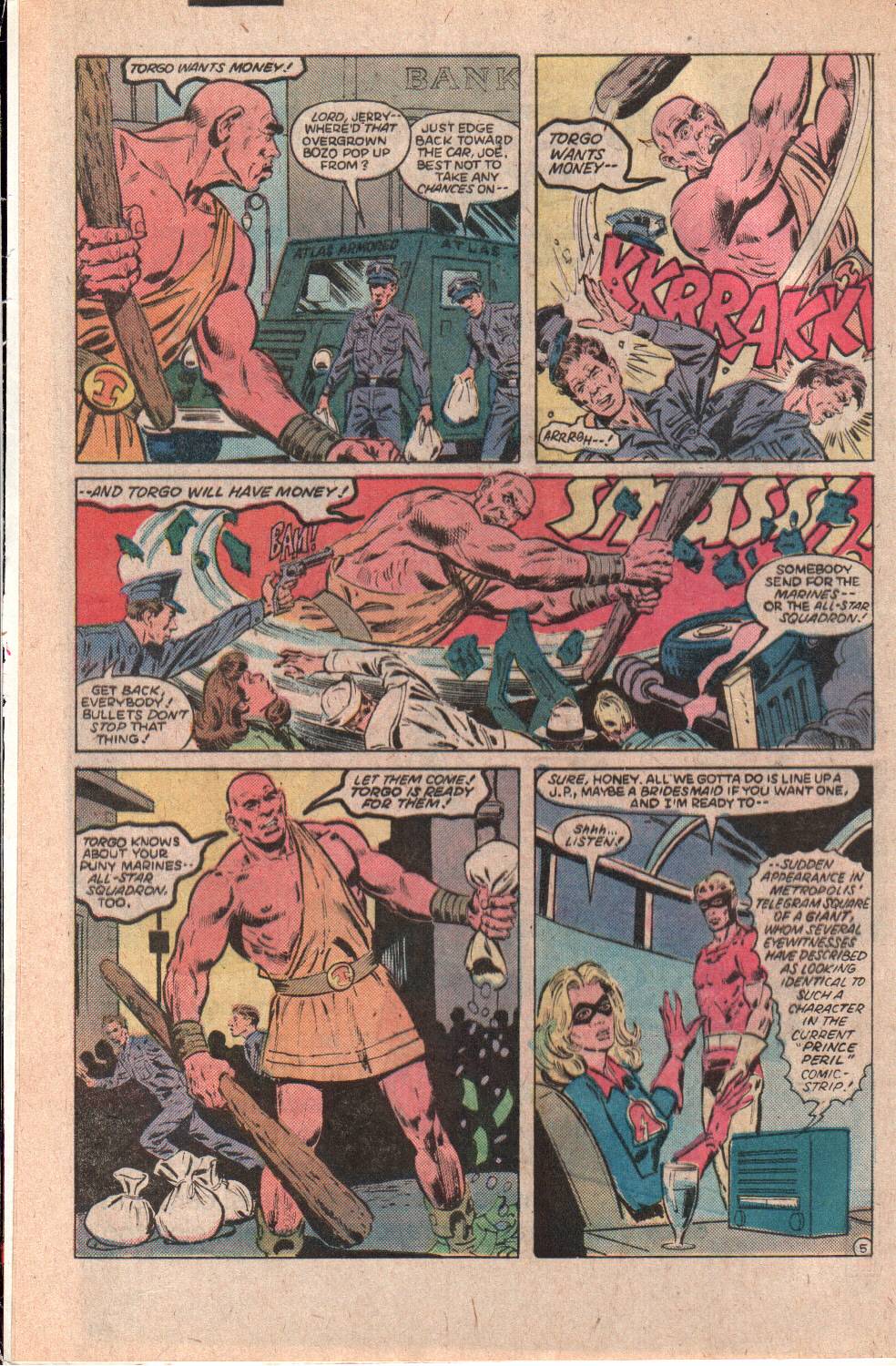 He robs an armored car, the radio broadcasts the news and Johnny and Libby are off to Metropolis, since Superman hasn't arrived on Earth yet (anymore). They get the 411 from one of the guards and track Torgo down in a park, where he is looking for the Master.... They fight, Libby hits him with sonics, he disappears and someone called Funny Face appears and heckles them... 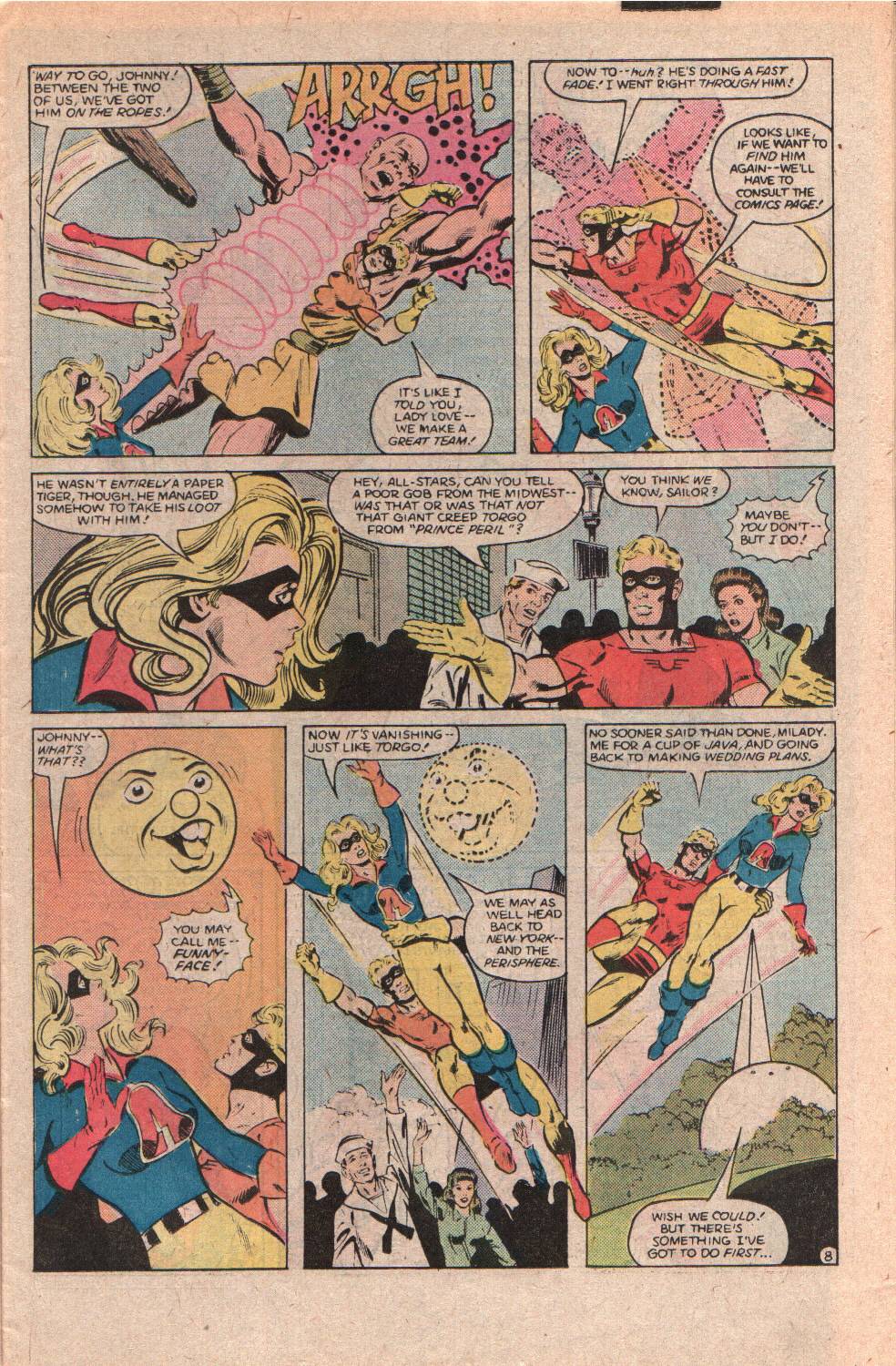 Libby alerts the rest of the available Squadroners and then hears a report of Machine Gun Mike, a villain in Detective Craig, robbing a museum. So, it's off to the races, where we find MGM unloading his weapon, a cross between a Thompson, a Sten and something else... 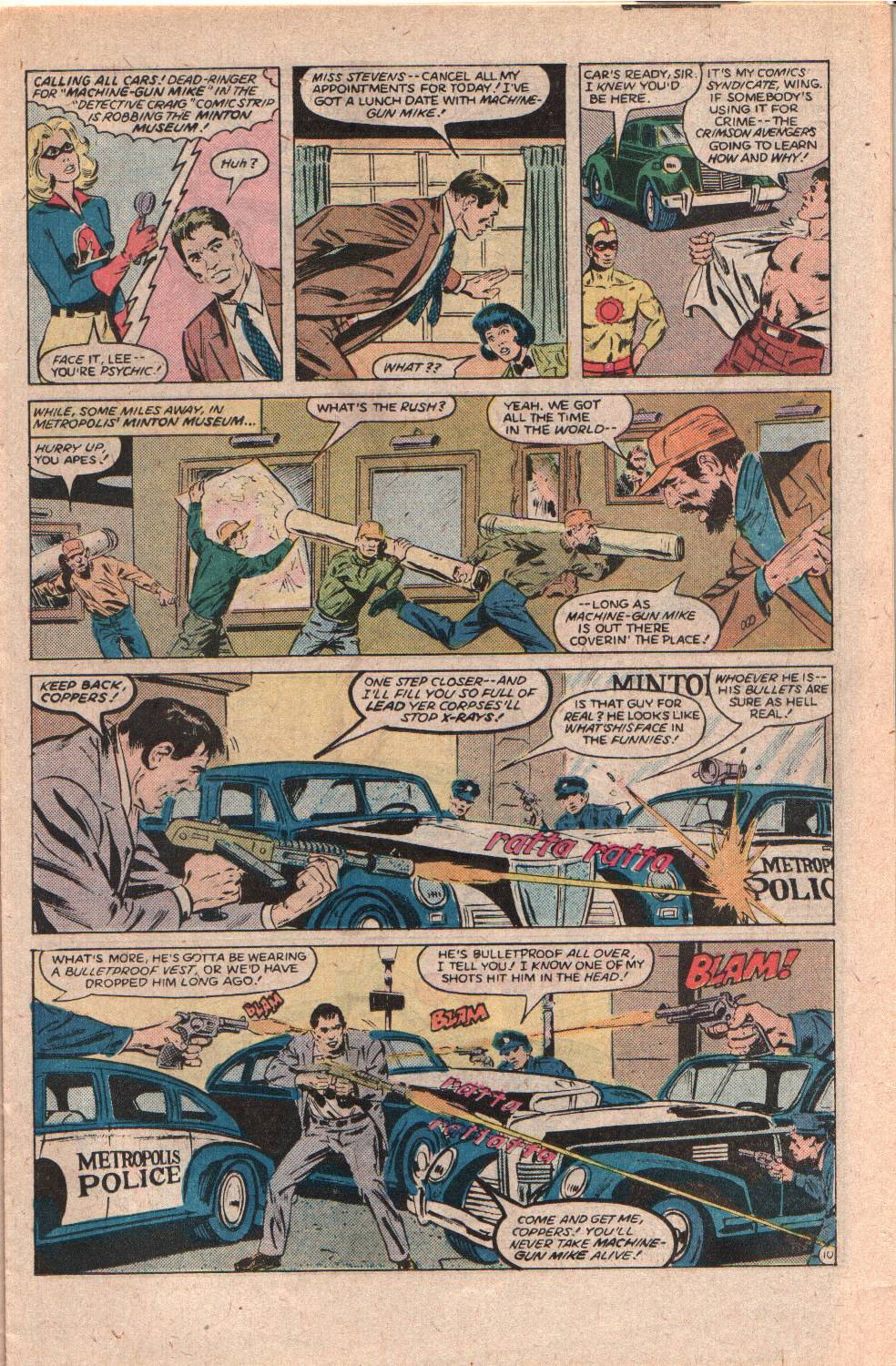 Robotman turns up, whoops him and he disappears, but other crooks are making a getaway and Robotman pursues and catches them. Crimson Avenger and Wing turn up late to the party. Meanwhile, Atom and Firebrand go hunting and run into the Black Raider, a western villain from the Solo Rider. 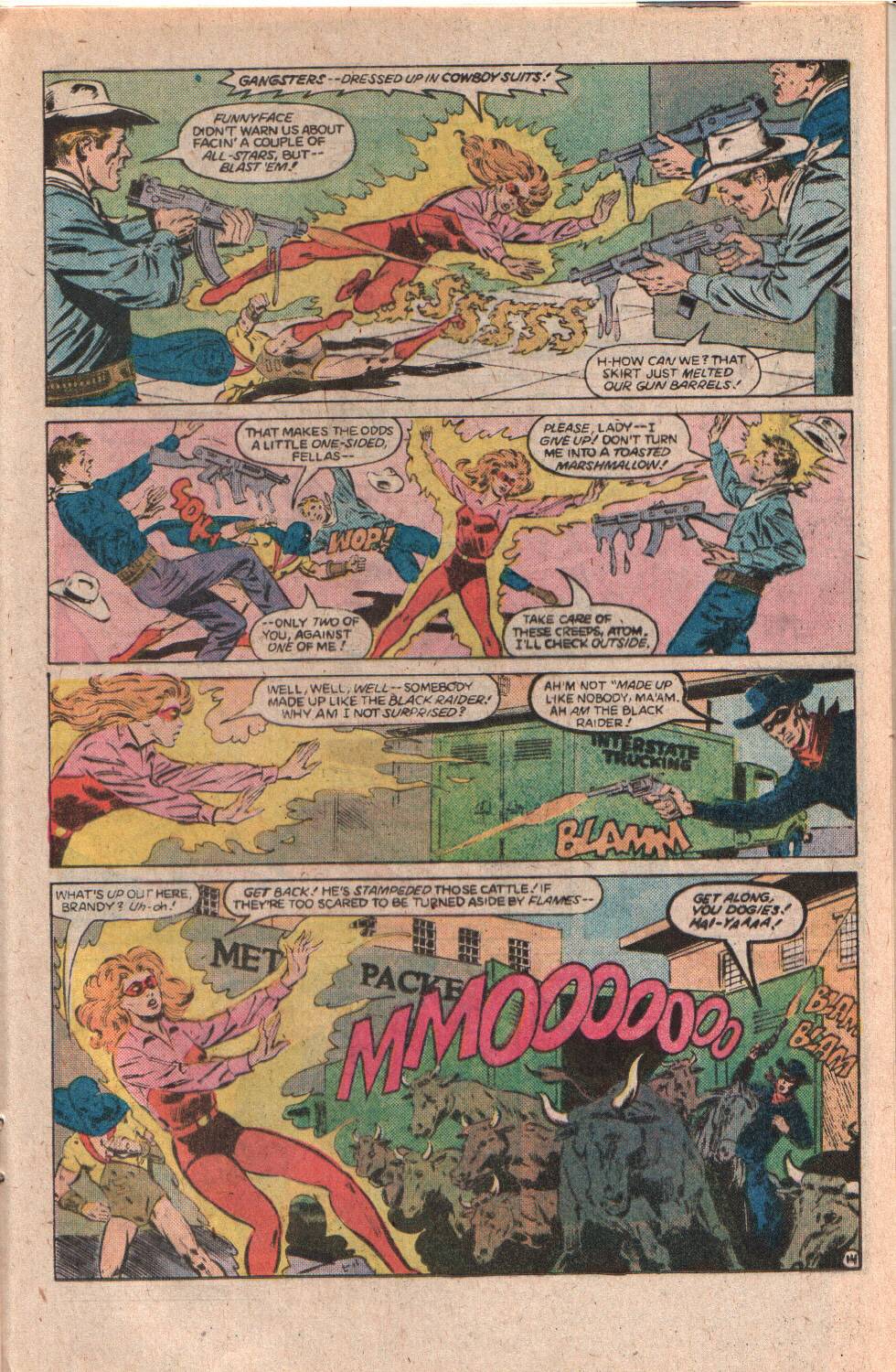 He starts a stampede, Firebrand tries to stop it and gets hit with a stream of water, putting her down for the count and she is captured. Silly girl, leave the fighting to the boys! She wakes up, tied up (of course) while being doused with water, by Funnyface, who is about to bring Goola, the villain from Streak Dugan, to life. He has been doing this with the other comic strip chaarcters. Starman, Sandman and Sandy show up in Metropolis and spot Goola's saucer, attacking a train and go to work. Fight, fight, fight...Goola disappears, Funnyface taunts...and the heroes are fools. tarantual runs into the Viper, villain from Happy Daze and the same occurs. Firebrand had written the address on the comic, before it came to life, so the gang knows where she is at and attack in force. 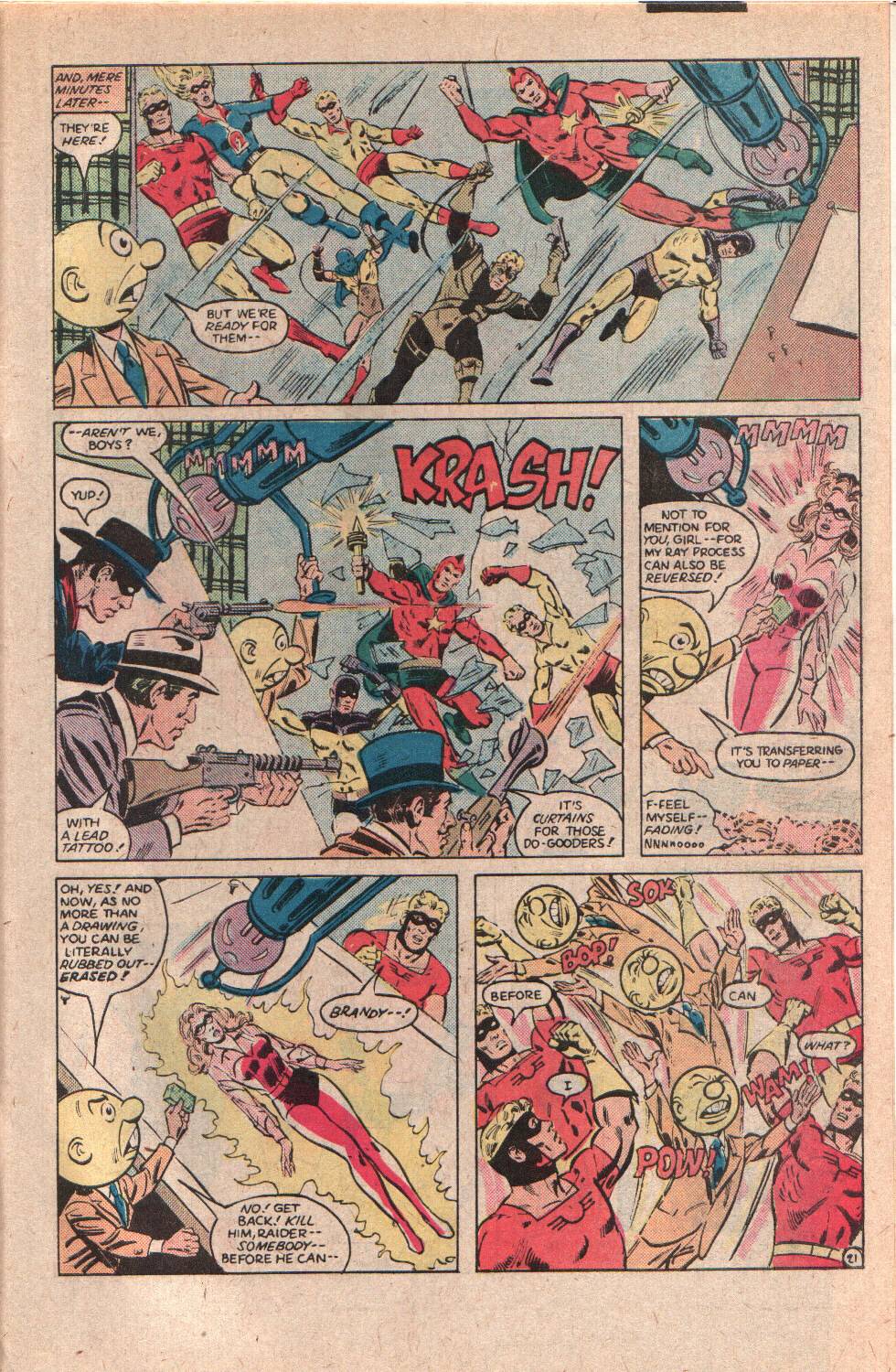 Firebrand is freed, Funnyface is revealed as a huma nutcase inventor, and Libby rubs it in that his deice alone could have made him rich. D'oh! Thoughts: The original tale was from 1942, Superman #19, with Superman in place of the All-Stars. Probably seemed just as goofy then. It's fun, for what it is and it was nice to see Wayne Boring doing some work. He did a few things for DC's anniversary, including Who's Who and Secret Origins. The strips spoofed include Dick Tracy, Prince Valiant, The Lone Ranger, Flash Gordon and, possibly Hairbreadth Harry, which featured the misadventures of a melodrama villain, ala Snidely Whiplash. Sadly, no Alley Oop or Thimble Theater. Historical Notes: The newspaper mentions an Allied convoy safely reaching Russia, as this s the height of the Battle of the Atlantic. It also mentions the bombing of Lubek, the first German city to be attacked by the RAF, in March, 1942.  January 1945 In the Pacific, The Burma Campaign experiences great success as the Battle of Hill 170 cuts off the Japanese 54th Division and makes their position on the Arakan Peninsula untenable and leads to large scale withdrawal of Japanese troops. The Burma Road is also opened into China, allowing large scale supply convoys to pass through, avoiding the more dangerous Himalayan air route into China. Fighting continues in the Philippines. On Luzon, word reaches the Allies that the Japanese have started massacring prisoners and a camp at Cabantuan is threatened. A rescue operation is quickly mounted, involving the Army Rangers, the Alamo Scouts and Philippine guerrillas. The raid is led by Ranger Lt Col Henry Mucci and involves a deep reconnaissance by the Alamo Scouts, who survey the prison and linkup with guerillas. the main Ranger force trekked overland, through grasslands, avoiding known Japanese patrolling areas. After linking up, they prepared to assault the camp. A P-61 Black Widow nightfighter was attached to the raid to create a diversion. The pilot faked a stall and simulated emergency aerial maneuvers, then simulated a crash in the hills beyond, to draw Japanese attention away from the assault target. The Scouts and guerrillas crawled across open ground, cut telephone lines and began assaulting the watch towers and guard barracks. The main force hit the compound and quickly took down the guards. The hard part proved to be rounding up the prisoners, who believed it was a Japanese trick. They were soon gathered and marched away from the camp, with assist from local horse-drawn carts, whose numbers had to be increased as the prisoners were too malnourished to handle the physical part of the march. Wounded were medevaced, after an airstrip was cut to allow a small plane to land. The group continued their journey to the Allied lines. The freed men were fed and treated and eventually sent home on the shipUSS General AE Anderson, which Japanese propaganda claimed was being hunted. The ship arrived safely in San Francisco, on March 8 and were given a hero's welcome. The prisoners provided the first accounts of the atrocities faced during the Bataan Death March and subsequent imprisonment. Although tales were censored, sanitized stories were told and the resolve to defeat Japan was strengthened. Further raids were soon carried out at Santo Tomas Civilian Internment Camp and Bilibid Prison, and Los Banos. In Europe, the Allies were busy recapturing ground from the Ardennes Offensive and crossed the Siegfried Line. During one of these battles, near a place called Holtzwihr, 19 year-old staff sergeant Audie Murphy and his platoon were fighting off a German counter attack, when Murphy was wounded in the legs, earning a second Purple Heart. he was made commander of Company B, while they awaited reinforcement. The Germans scored a direct hit on an M10 tank destroyer, forcing the crew to abandon it. Murphy order his men to take cover in the tree line, while he single handedly provided covering fire with his carbine and directed artillery fire with a radio. Murphy then mounted the stricken tank destroyer and used its .50 cal machine gun to decimate a German squad that was advancing via a ditch, towards his position. he maintained fire until the ammunition was spent, after more than an hour. he inflicted 50 casualties on the Germans and was hit in the leg, as he stood on the tank destroyer, firing. He rejoined his men, and, ignoring his own wounds, led them to safely and then saw that their wounds were treated before his own. For his actions and leadership, Murphy was promoted to 1st lieutenant and awarded the Medal of Honor.  Murphy would go on to become the most highly decorated soldier of the war, with the Medal of Honor, the Distinguished Service Cross, 2 Silver Stars, the Legion of Merit, 2 bronze Stars, 3 Purple Hearts, 2 Distinguished Unit Citations, the French Legion of Honour and Croix de Guerre, as well as the Belgian Croix de Guerre, the Good Conduct Medal, the American Campaign Medal, the European, African-Middle Eastern Campaign Medal, WW2 Victory medal, German Occupation Medal, Combat Infantry Badge, Marksman Badge with rifle component, Expert Badge with Bayonet component. After the war, Murphy would become a rancher and actor, including such films as The Red Badge of Courage and the dramatization of his memoir, To Hell and Back. Murphy suffered from post-traumatic stress after the war, sleeping with a pistol under his pillow and using barbituates to avoid nightmares, until he became addicted. he locked himself into a hotel room to go cold turkey. murphy was one of the first prominent veterans to speak out about PTSD, removing the stigma that often accompanied such cases. Murphy became the man of the house when his father abandoned the family and was forced to drop out of school in the 5th grade, going to work picking cotton. His mother died when he was 16 and his siblings were placed in an orphanage. After first being turned down by the Army for being too small, he enlisted and became a sergeant by the age of 17. he was a lieutenant at age 19. I wasn't commissioned as an ensign until I was 21, after 4 years of training and education. Murphy was a natural leader, with a quiet, calming demeanor that filled his men with confidence He took care of them and brought more back alive than most in his position. The word hero is used too freely in modern times; but, Audie Murphy was a hero; not because he killed the enemy, but because he protected his men and brought them through it and spoke openly about the price he paid, so that people understood the cost of war. on the eastern Front, the Soviets launched twoo offense, the Vistual-Oder Offensive, targeted at Warsaw and Krakow, and a second in East Prussia. By January 17, they had taken and occupied Warsaw. On January 19, they liberated the Lodz Ghetto. Of a population of 164,000 Jews, only 877 survived. The Germans began the evacuation of Auschwitz, leaving behind those too infirmed to move, with no supplies. As many as 15,000 died on the marches to other locations, out of 60,000 moved. On January 27th, the Soviets liberated Auschwitz and Birkenau. Swedish diplomat Raoul Wallenberg, who saved thousands of Jewish lives, was taken into custody by a Soviet patrol, during the Siege of Budapest and was never seen again. The Germans begin Operation Hannibal, a mass evacuation of military and civilians from East Prussia. On January 16, Hitler takes up permanent residence in the Fuhrerbunker, in Berlin. On January 1, the Luftwaffe launch Operation Bodenplatte, a last-ditch effort to cripple Allied air fields int he low countries; but Allied numerical superiority has replacement aircraft at those bases within a week and continues attacking German positions and columns with impunity. the Luftwaffe committed their best squadrons to the attack, and their losses were irreplaceable. Lack of fuel and replacement aircraft and parts would cripple Luftwaffe operations, limiting them to a dwindling defense. On January 24, 9 OSS men and 4 SOE agents are executed, under Hitler's Commando order, along with AP News Correspondent Joseph Morton, who was covering their activities. Morton is the only Allied journalist executed by the Axis, during the war. On January 31, Pvt Edward Slovik is executed, by firing squad, for desertion. Slovik had been a troubled youth and petty criminal and was originally classified 4-F. However, soon after marrying, he was reclassified 1A and drafted. he was assigned to the 109th Infantry Regiment, 28th Army Division. In France, he was separated from his replacement detachment, during an artillery barrage. On October 7th, he finally reported to his unit. The next day, he asked for reassignment to a rear area, as he was too scared to serve in a rifle unit. the request was denied and he deserted on the 9th. he walked to a rear area and presented a cook with a note where he stated he had deserted his post and the circumstances of his desertion. teh cook alerted MPs and he was brought before his company commander, who gave him the chance to tear up his note and return to his unit. he refused. he was brought before the battalion commander and again given the chance to tear up the note and refused. he was put under arrest and placed in the stockade to await court martial. The 28th Division was scheduled to advance into the Hurtgen Forest and casualties were expected to be high. Slovik was convicted in a court martial and sentenced to death. the sentence was reviewed and approved by Division Commander Maj Gen Norm Cota, one of the key figures in strengthening the resolves of troops on Omaha Beach, during D-Day. A plea of clemency was submitted to SHAEF, but the Battle of the Bulge complicated things and desertion was becoming a problem, in France. Eisenhower rejected the plea and confirmed the sentence. On January 31, Slovik was executed and buried in a military grave, with only a numbered marker, the only American soldier to be executed for desertion. The only other soldiers executed in the European theater were for the crimes of rape and murder. in 1987, Slovik's remains were exhumed and returned to the United States. his widow petitioned presidents Truman through Carter for a pardon, for her husband; but, it was never granted.
|
|
|
|
Post by mikelmidnight on Mar 10, 2021 12:52:40 GMT -5
The face is pretty much taken from the Tin Man and Siegel and Shuster were very familiar with Earl and Otto (EandO) Binder's Adam Link, a self-aware robot who appeared in a series of adventures in Amazing Stories, between 1939 and 1942. Roy certainly is and has Crane mention pulp magazines in his narration, which is probably a nod. The Adam Link stories were adapted directly in the 1950s by EC Comics, probably their only continued character (since Moon Girl and the International Crime Patrol) in Weird Science-Fantasy issues 27-29, although I don't believe they were advertised as such. |
|
|
|
Post by codystarbuck on Mar 17, 2021 17:34:46 GMT -5
All-Star Squadron #65 The origin of my favorite All-Star, Johnny Quick! Creative Team: Roy Thomas-writer/editor, Don Heck-pencils, Tony Dezuniga-inks, Cody Weiss-letters, Carl Gafford-colors Heck and DeZuniga are both credited as "artists" on this one and it looks like DeZuniga was doing a lot of finishing on this, as it doesn't scream out "Don Heck." Synopsis: Johnny is relating his story to John Law (the Tarantula, not a cop). Johnny's parents were killed in a car crash, a crash he survived. he was taken in by Prof Ezra Gill, a mathematician, though Roy never expands upon why he took him in (friend of the family, relative, millionaire playboy looking for a junior assistant, etc...). Johnny suffers from survivor's guilt and the Great depression. While Prof Gill seeks a mathematical formula for the secret of space and time Johnny escapes to the movies, where he is engrossed by the newsreels (most people wanted to get into films, Johnny wanted to get into newsreels....strange kid!) 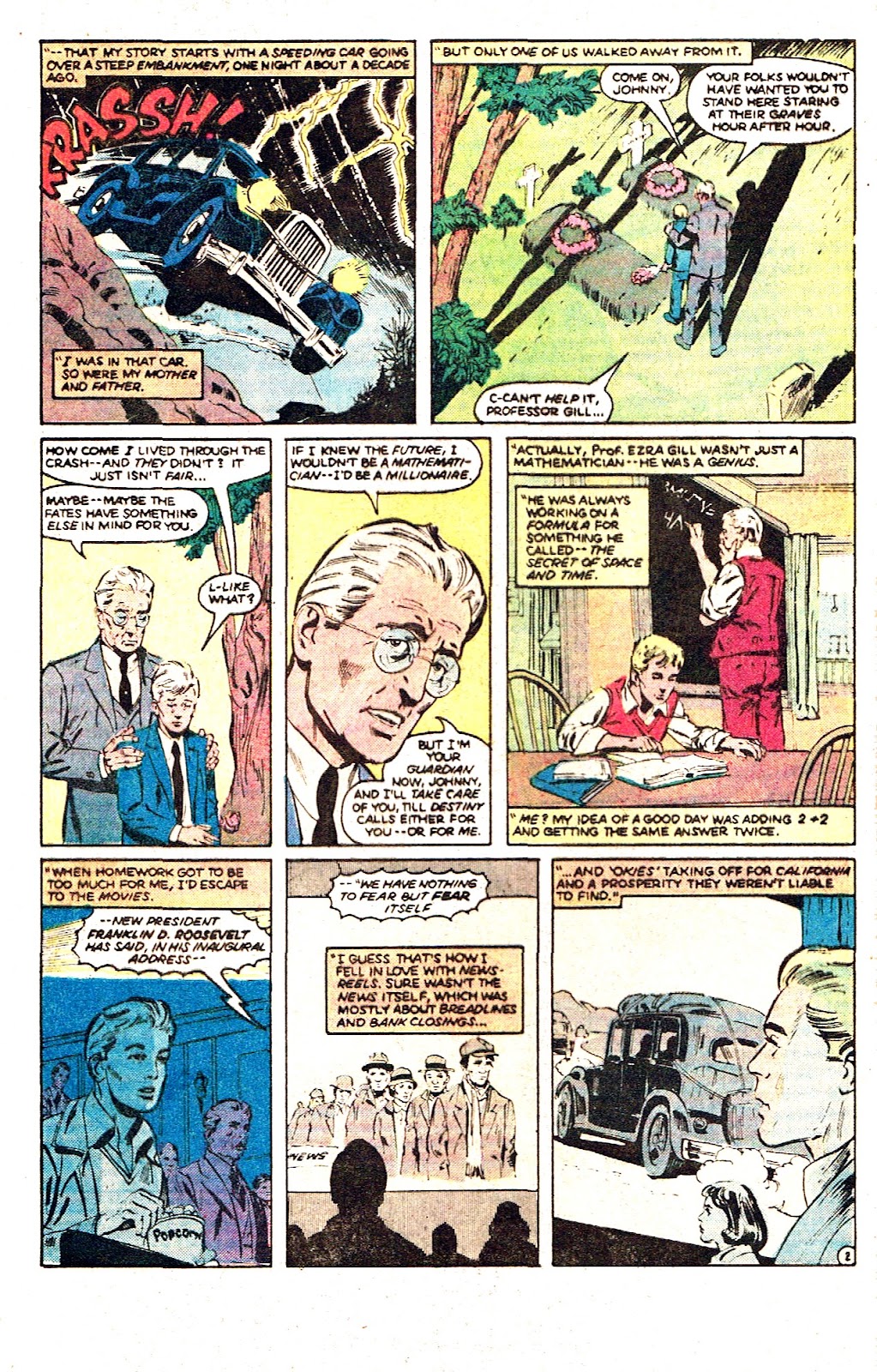 Then, the Prof bursts into Johnny's room and tells him he has found a formula for coordinating gravity and electricity and demonstrates.... 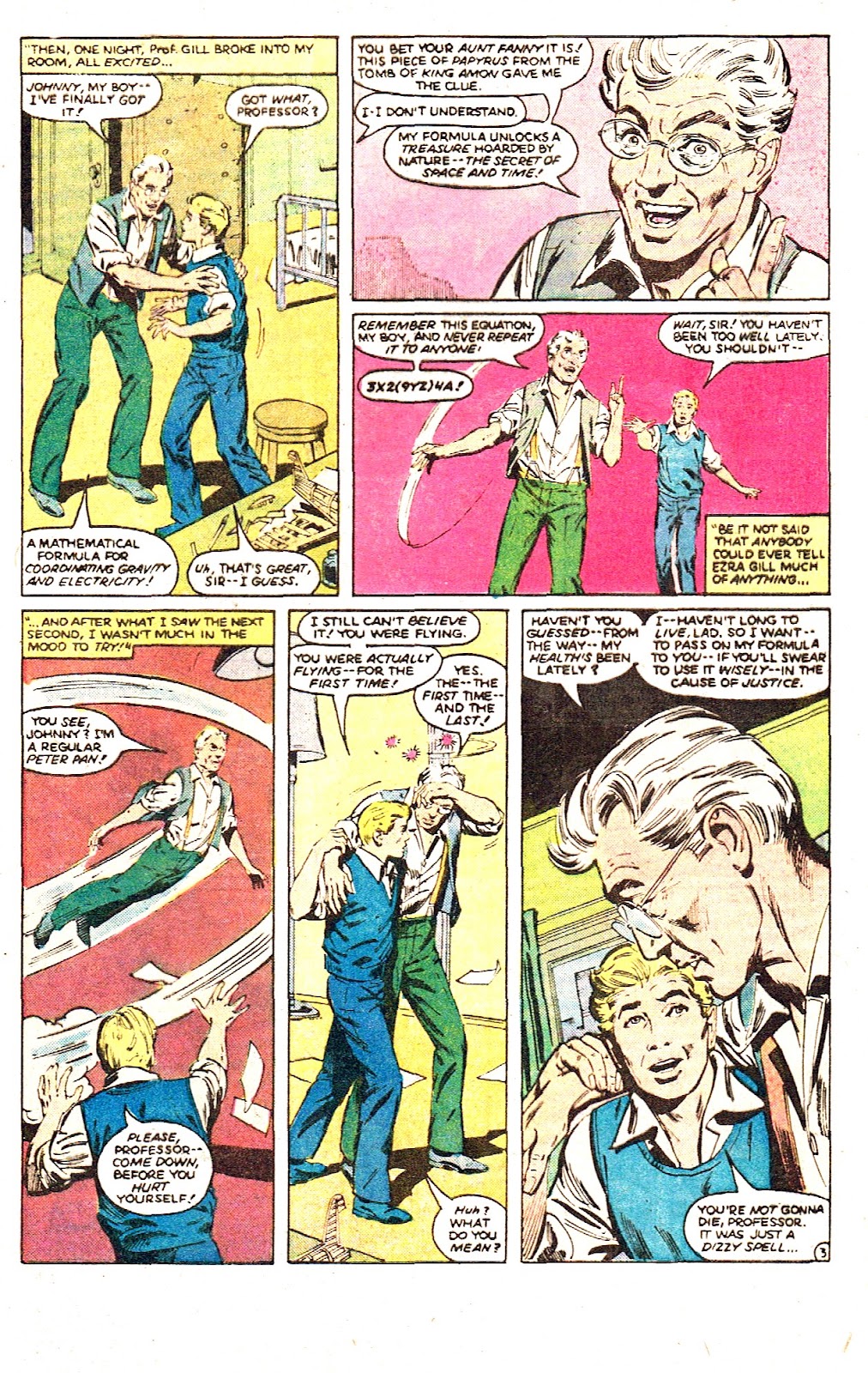 Um......shouldn't a mathematical equation have an equivalency? The Prof is in bad health and he entrusts the secret to Johnny and then collapses weeks later. Johnny, out of desperation, uses the formula to get help. However, he can't repeat the success to get the doctor backin time and the Prof dies. Johnny leaves the formula behind and works on his photography, until he is skilled enough to find work at it, as a news photographer, until the fateful day when he is at the offices of the Sees All/Tells All News, applying for a cameraman job. The boss needs someone right now with experience with a movie camera. Johnny hasn't; but, the other applicant, Tubby Watts has had a little. The boss decides to send them as a team to the World's Fair, to get shots of King George VI and Queen Elizabeth (aka the Queen Mother), with the robot Elektro. Then, Elektro goes berserk and we get the entrances of The Sandman and the Crimson Avenger, as they battle the Phantom of the Fair... 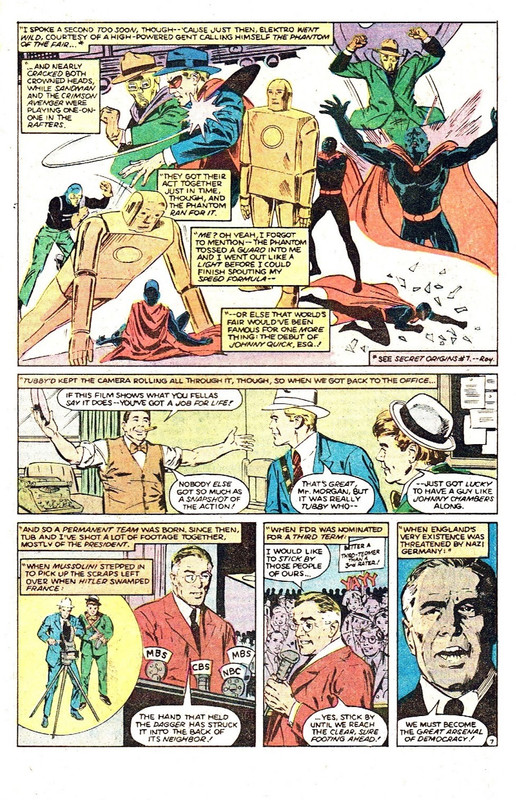 Johnny and Tubby manage to get the only footage of the fight, which gets them the job, as a permanent team. They cover Pres Roosevelt, as speaks of the war in Europe and the danger to Britain and , potentially the US. He covers his nomination for a third term and daydreams of being a hero, called Johnny Quick (a nickname Tubby gave him at the fair, because he picked up operating the movie camera quickly), until he and Tubby are filming a performance of Ethel merman and Bert Lahr, in "Dubarry was a Lady," for charity. Some hood tries to hold up the place and is beaten by the Flash. Johnny and Tubby continue covering the days news, as British speakers are heckled by isolationists and they are sent off to cover a circus. They have to shoot, dressed as acrobats, so as not to distract the crowd and Johnny gets a red and yellow number... 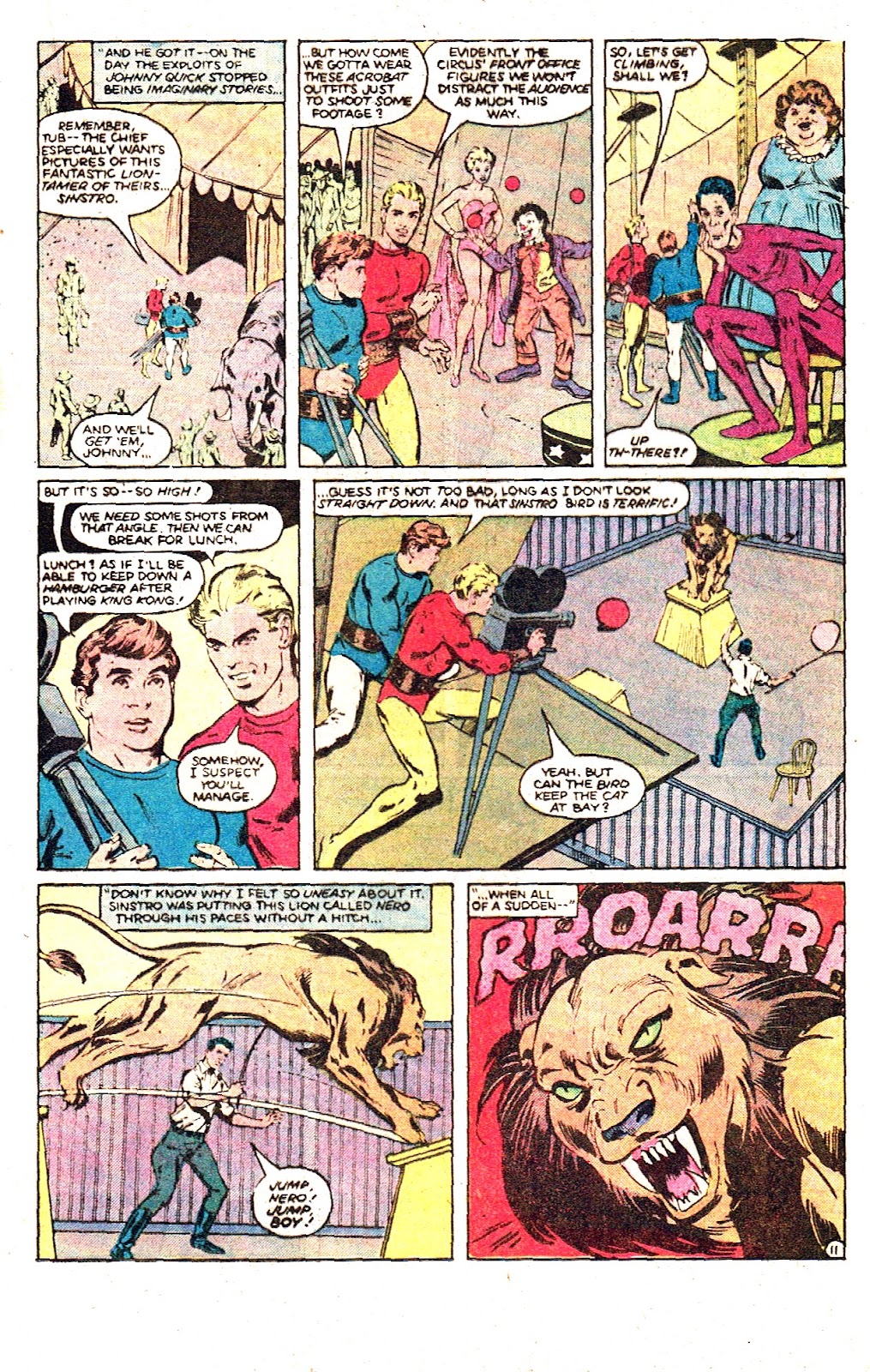 They are busy shooting the lion tamer, when the lion decides he's had enough of getting second billing and has a labor dispute with Sinistro, the lion tamer. Jonny reacts, says his formula and sweeps the lion away from Sinistro... 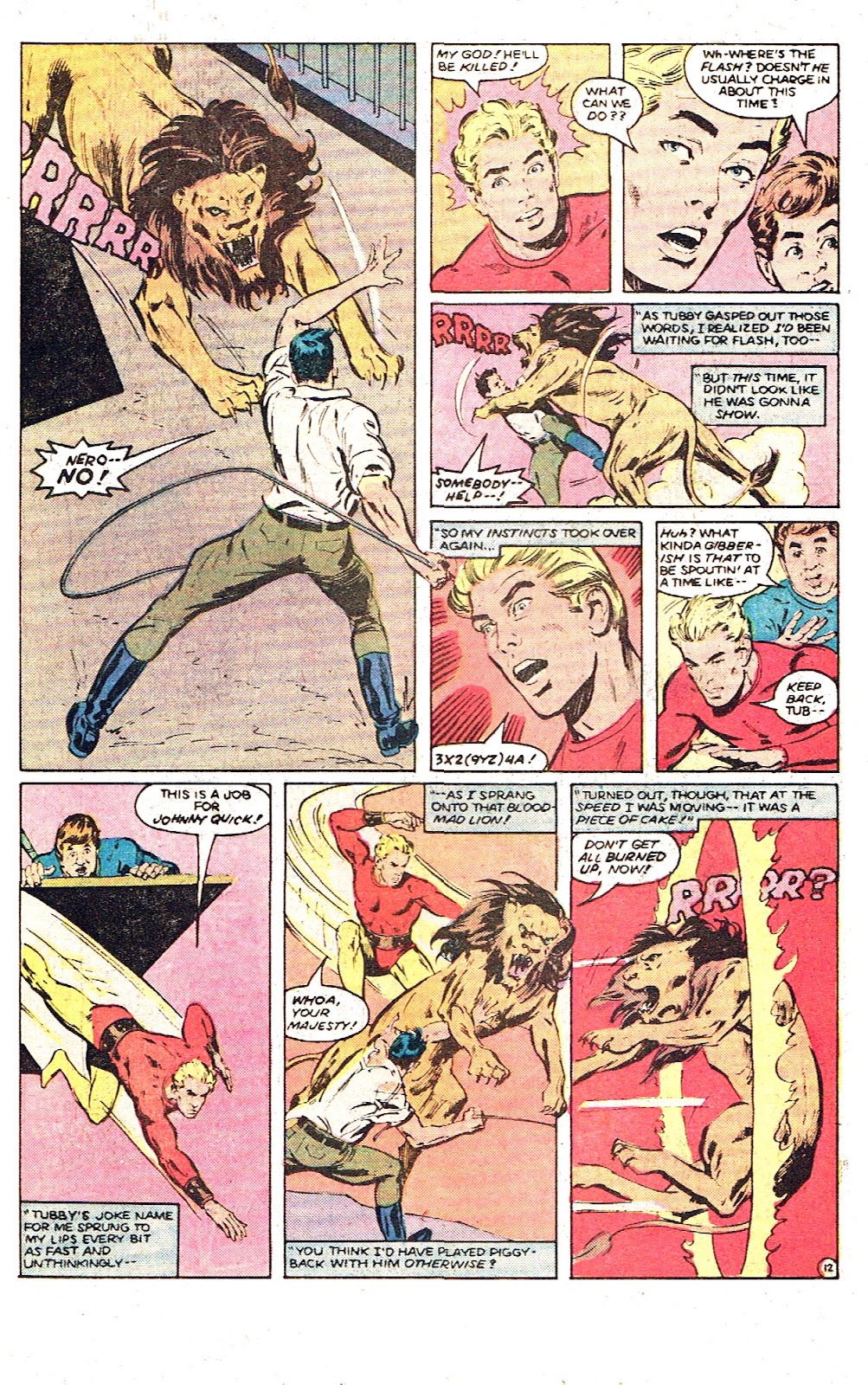 He does this without a mask, so Tubby knows the secret. Later, they develop the footage of the attack, before Johnny jumped in, and spot a clown firing a dart at the lion. He was responsible for the attack. Johhny puts on the suit again and adds a mask to go find the clown. Look, the dart was just a delivery method for a message about how the lion tamer was oppressing the poor lion and he acted upon it. Typical management coloring of a fundamental case of exploitation of the workers! At the circus, the clown is about to be trampled by an elephant, for ticking off the boss, Caesar, when Johnny saves him. He is soon attacked by a fire eater and some roustabouts.... 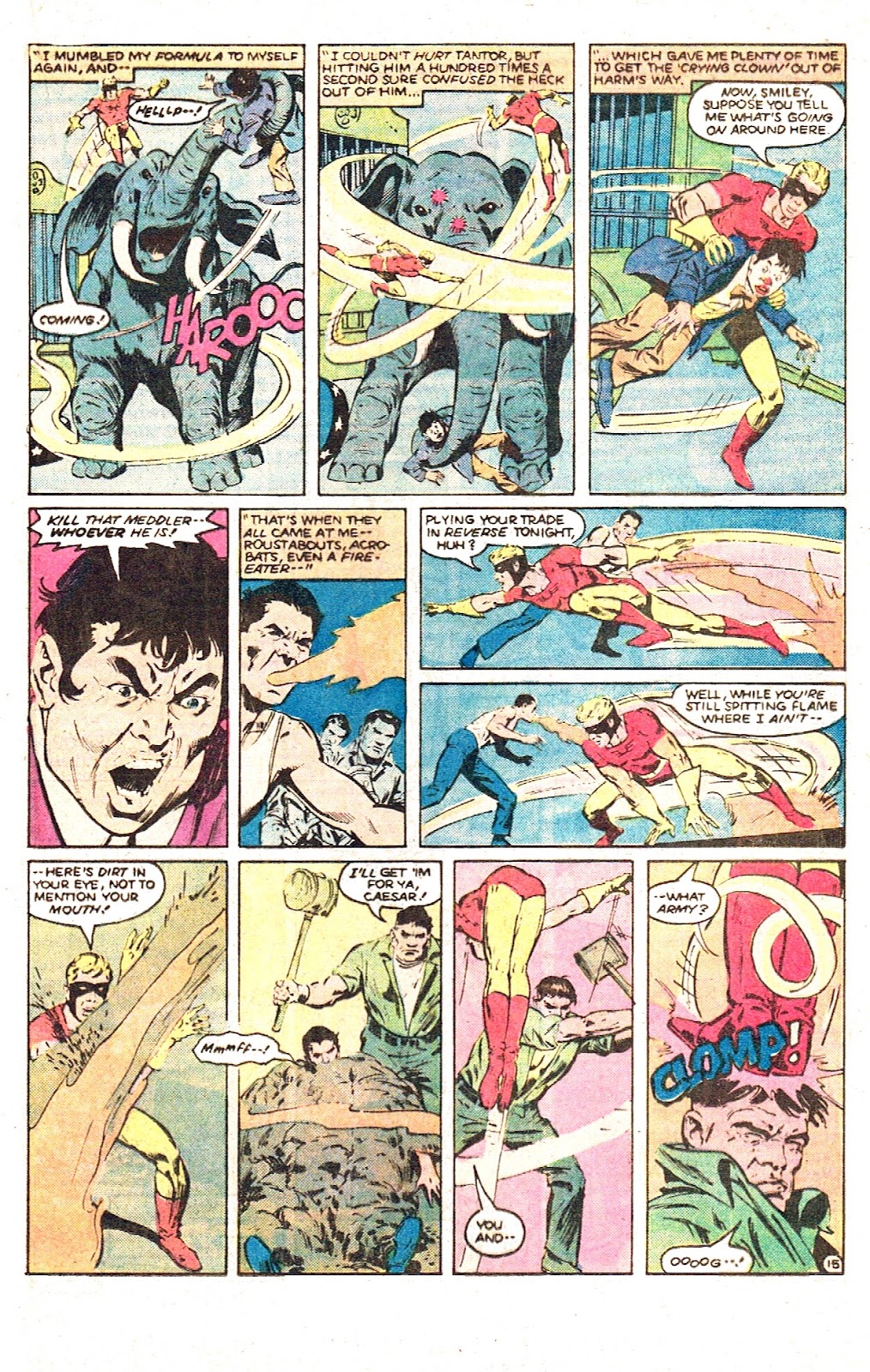 The clown is too scared to squeal, so Johnny goes undercover as a strongman (using the speed formula to perform tricks. He soon learns that Caesar is operating a crime ring out of the circus. he goes after Caesar; but, gets ambushed and hung up to dry. He gets free and captures Caesar, unmasking him as the circus manager. He gets the scoop and the credit, as Johnny Quick, the new masked hero and that all leads to joining the All-Stars, marrying Libby and then she starts to rethink the idea of marrying a guy named Johnny Quick! Thoughts: Roy based the story on the Mort Meskin & Chad Grothkopf original. Meskin was the signature artist on Johnny Quick, which was a popular back-up feature, in More Fun and Adventure Comics, apeparing for about 13 years. He was pretty much left dormant until Roy revived him for this, as a substitute for the Flash. In doing so, he helped erase the idea that Johnny was just a second string Flash and made him his own man. As it was, Meskin didn't copy the visual formula used in the Flash. He used multiple figures to convey Johnny's speed actions, rather than blur lines. Johnny could also fly. Meskin was also one of more memorably stylistic artists working at DC and he also teamed with Jerry Robinson to do memorable stories for Nedor's Black Terror and Fighting Yank. The origin incorporates new material that Roy developed in Secret Origins, as he created a connection between The Phantom of the Fair (a Centaur feature), Sandman and the Crimson Avenger, all of whom were pretty much Shadow swipes (with some Green Hornet, to boot). These were excellent stories, as Roy was fashioning the early post-Crisis Earth hero continuity, with Sandman and Crimson Avenger as some of the earliest costumed adventurers. You see flashes of Heck in this, but DeZuniga is softening the edges of his work, at this point. Heck tries to ape Meskin's style; but, they were very different artists. Meskin probably had more in common with Jack Kirby and he worked for Simon & Kirby's Mainline Comics, before it folded.  Really, DeZuniga makes this look a bit more like Heck's pre-superhero work, on the Atlas westerns... 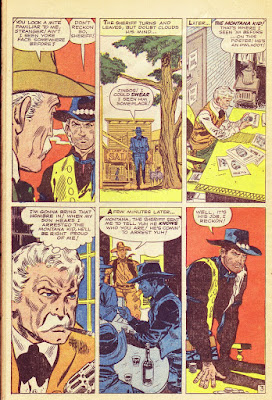 Meanwhile, this needs to be added to the next season of Cobra Kai.... (back cover ad)  Historical Notes: Historical Notes: Roy gives us a rundown of some of the history of the Great Depression, with newsreel shots of Okies packing up for California (as immortalized in John Steinbeck's The Grapes of Wrath and Henry Fonda's performance in the movie adaptation) as well as the 1939 New York World's Fair, which was visited by King George and Queen Elizabeth (no narration) I haven't found any images of them with Elektro (the future Gernsback, the All-Star butler). He also mixes in events and speeches from the 1940 election, as Roosevelt runs for an unprecedented 3rd term, while the UK seeks to sway US public opinion to aid them with weapons and other vital war materials. Roy references the Committee to Defend America by Aiding the Allies, a non-partisan group that pushed for that goal and was instrumental in the destroyers-for-Bases Agreement and the Lend Lease Act, which gave material support (with limits) to the British. he also shows isolationist hecklers, and mentions Charles Lindbergh, who was a major public face of the Isolationist Movement. There was strong sentiment that the US shouldn't have been involved in WW1 and also the Britain and France had not paid back their war debts. This group did not want to see the US involved in another European war. At the time, the US provided most of the raw materials for manufacturing and carried out that work domestically. Britain and France were great trading partners; but, US domestic wealth and consumption was strong enough to sustain itself. There were also strong pro-German factions in the US, particularly in areas with large German immigrant populations (and their descendants), who were happy to see Germany arise as a stronger nation, after the economic turmoil that followed the Armistice. Prior to the war, Hitler had been praised in many US newspapers as a strong leader who guided his country out of the Depression and many US businessmen admired how German industry was rebuilt. Of course, many of them also admired how he dealt with labor disputes and the Left. February 1945- Anne Frank contracts typhus and dies at Bergen-Belsen Concentration Camp. On the Eastern Front, the Soviets lay siege to and liberate Budapest In Italy, the 3-month long Battle of Monte Castello ends with the Germans defeated by the Allies, including troops from Brazil. On Feb 4-11, Pres Franklin Roosevelt, Prime Minister Winston Churchill, and Soviet Premier Joseph Stalin meet at the Yalta Conference, in the Crimea. Stalin agrees to join the war against Japan, once Germany is defeated. The main discussion of the conference centered around post-War Europe, as they sought agreements on re-establishing nations and free determination of governments. FDR sought Soviet cooperation in a planned invasion of the Japanese Home Islands, which would necessitate large numbers of troops and equipment. Britain wanted democratic governments in Eastern and central Europe, particularly Poland. Stalin wanted a Soviet "sphere of influence" in Central and Eastern Europe, to bolster their security. Stalin was in a very strong position, as his armies had control of most of Eastern Europe and were pushing in to Central Europe. The other two nations were bargaining for what they could get out of Stalin, as they could not affect the liberated Eastern countries, without starting a war against the Soviet Union (which some on the Allied side wanted, after Germany was beaten). FDR wanted Soviet cooperation with the United Nations, as well, as a way to ensure peace for the future. Stalin demanded the Allies recognize the independence of Mongolia from China, which was agreed, without Chinese input. they also demand concessions in Manchuria (the railways) and Port Arthur, without a lease from China (also agreed). They further demanded the return of Karafuto, on the Sakhalin island, which was ceded after defeat in the Russo-Japanes War. The further demanded the return of the Kuril Islands, in the same area. These demands were eventually agreed, to bring the USSR into the war against Japan, later in the year. The conference set up the Occupation Zones for post-War Germany and reparations, including forced labor to repair damages to countries attacked by the Nazis. They dictated demilitarization and denazification of Germany and war crimes trials. The Soviets agreed to base US B-29s for strikes against Japan, though this eventuality never occurred. On February 13, the Allies carried out a bombing attack on the city of Dresden. Over 1000 planes of the RAF and USAAF dropped nearly 4000 pounds of high explosive and incendiary bombs, creating a firestorm that destroyed over 1600 acres of the city and resulted in deaths between 22-25,000 people, mostly civilians. The raid has been a source of conjecture for decades, with arguments over the strategic importance of the attack, as major industrial areas were not targeted, while official justifications specifically bring up those industries. Dresden was a major cultural city and one of the largest German cities untouched by aerial bombardment. Much of the planning also focused on the morale effect of the bombing, with the Russians pressing from the East. Regardless of the strategic importance or psychological aims, the bombing result on horrific death and destruction. Kurt Vonnegut was a witness to the bombing, as a POW at it would inform his most noted work, Slaughterhouse 5. British Pathe newsreel (based on official briefing) A few days later, the town of Wesel was bombed over a 4 day period, virtually destroying it. it was the sight of a rail bridge across the Rhine, which would provide a significant crossing point for the Allies. Subsequent artillery shelling and new bomber attacks finished the job that the bombers started. The city of Pforzheim was also heavily targeted, killing about a third of the population and destroying over 80% of the buildings. The month ended with devastating attacks on the city of Mainz, with 1,000+ killed and 80% destruction of the city. In the Pacific, fighting continues in the Philippines, as American and Filipino forces succeed in liberating the capital of Manila and then land on Corregidor, following that with a recapture of the Bataan Peninsula. This was an important victory for American morale, after that ground had been ceded to the Japanese, in 1942. MacArthur had succeeded in his promise to return to the Philippines and its capital, alongside the countries own troops. Meanwhile, the 11th Airborne Division and Filipino guerrillas carried out another rescue operation to liberate civilian internees from the Los Banos prison camp. Over 200 people, mostly civilians from Allied nations and Filipino officials were housed there, along with a contingent of Army nurses and a few other military personnel. A recon group went in advance to scout the camp, lay out drop zones and then attack the gate and sentries as a prelude to the main assault. They were able to meet with escapees and get a complete layout of the camp and plan the attack. They launched the atatck on the gate and cut other entry points, while also killing sentries in guard towers and at the gates. They marked the drop zone and the ariborne forces mad a combat jump and then attacked the camp in force, eliminating the Japanese guards. The quickly gathered the prisoners, though some were reluctant to leave and had to be forced. Armored amphibious tracked vehicles had been positioned to meet up with the rescue team and carry out the civilians to safety. meanwhile, the 188th Glider Infantry and other filippino forces carried out a diversionary attack on Highway 1, cutting off Japanese response and further clearing the path to the camp. The raid was a textbook operation and the largest successful rescue of prisoners ever carried out. The tactics employed would form the template for future military rescue missions, including the failed Son Tay Raid, during the Vietnam War, the Israeli rescue operation at Entebbe, the Belgian Paracommando operation to rescue Europeans in Stanleyville, in the Congo, and the failed US rescue attempt in Iran, during the Hostage Crisis. Elsewhere in the Pacific, US forces landed on Iwo Jima, on February 19. The island was targeted because of its strategic location, about halfway between US bases in the Marianas and Japan, and for its two existing airstrips. The island was sought as a ditch point for B-29 bomber formations returning from Japan, as well as a base from which to operate P-51 Mustang fighter escorts for the missions. Some 30,000 US Marines landed at Iwo Jima, including Medal of Honor winner John Basilone, who had requested return to combat duty, after spending time conducting public appearances for war bond drives. Basilone was moving among his men, spurring them on and single handledly carried out an attack on a Japanese pillbox strongpoint, with grenades and neutralized it, allowing his section to move inland. They progressed towards Airfield #1 and Basilone aided a trapped Marine tank, which was in a minefield. He led it successfully out and continued the push towards the airfield, when he was hit and killed by shrapnel. For his actions that day, Basilone was posthumously awarded the Navy Cross. Word of his death spread through the Marines and strengthened their resolve to fight. Fighting continued to be intense and deadly. On February 23, a group of Marines reached the top of Mt Suribachi and raised the US flag, a moment captured by photographer Joe Rosenthal, which would go on to win the Pulitzer Prize....  Fighting continued until the end of March. By that point, only 216 Japanese soldiers had been taken prisoner, the rest, some 18,000, dying in combat or by suicide. The US suffered 6800 dead, and over 19,000 wounded, making US casualties greater than the Japanese. The escort carrier USS Bismark Sea was sunk during the battle, after kamikaze attacks from multiple planes. She was the last USS carrier destroyed during the war. 27 Medals of Honor were awarded to US Marines and sailors, 14 of them posthumously. The Marine Corps War Memorial was erected in 1954, depicting the flag raising at Mt Suribachi. Ironically, in the All-Star Squadron preview, Rich Buckler included the memorial in Washington, which had to be redone by Jerry Ordway.
|
|


